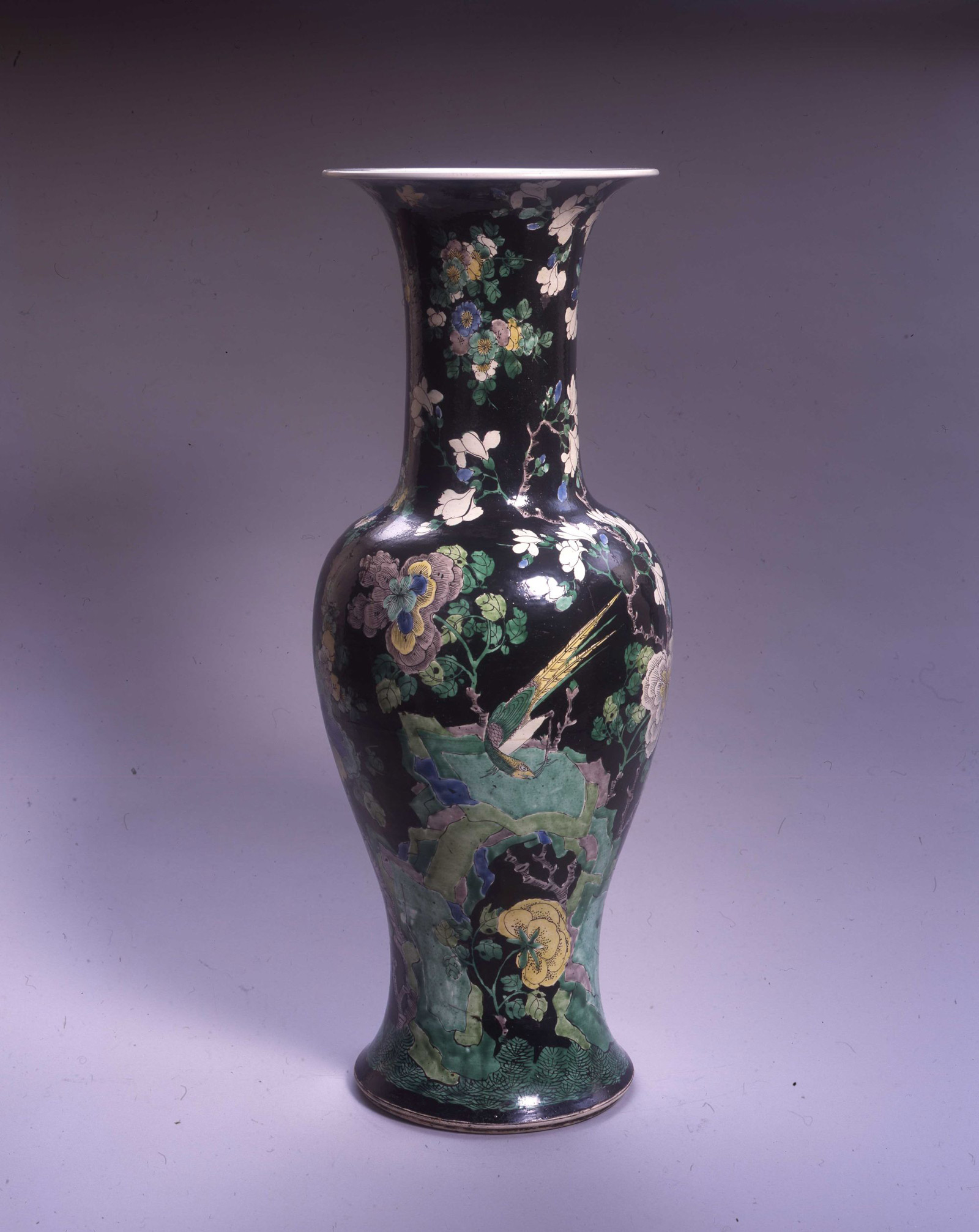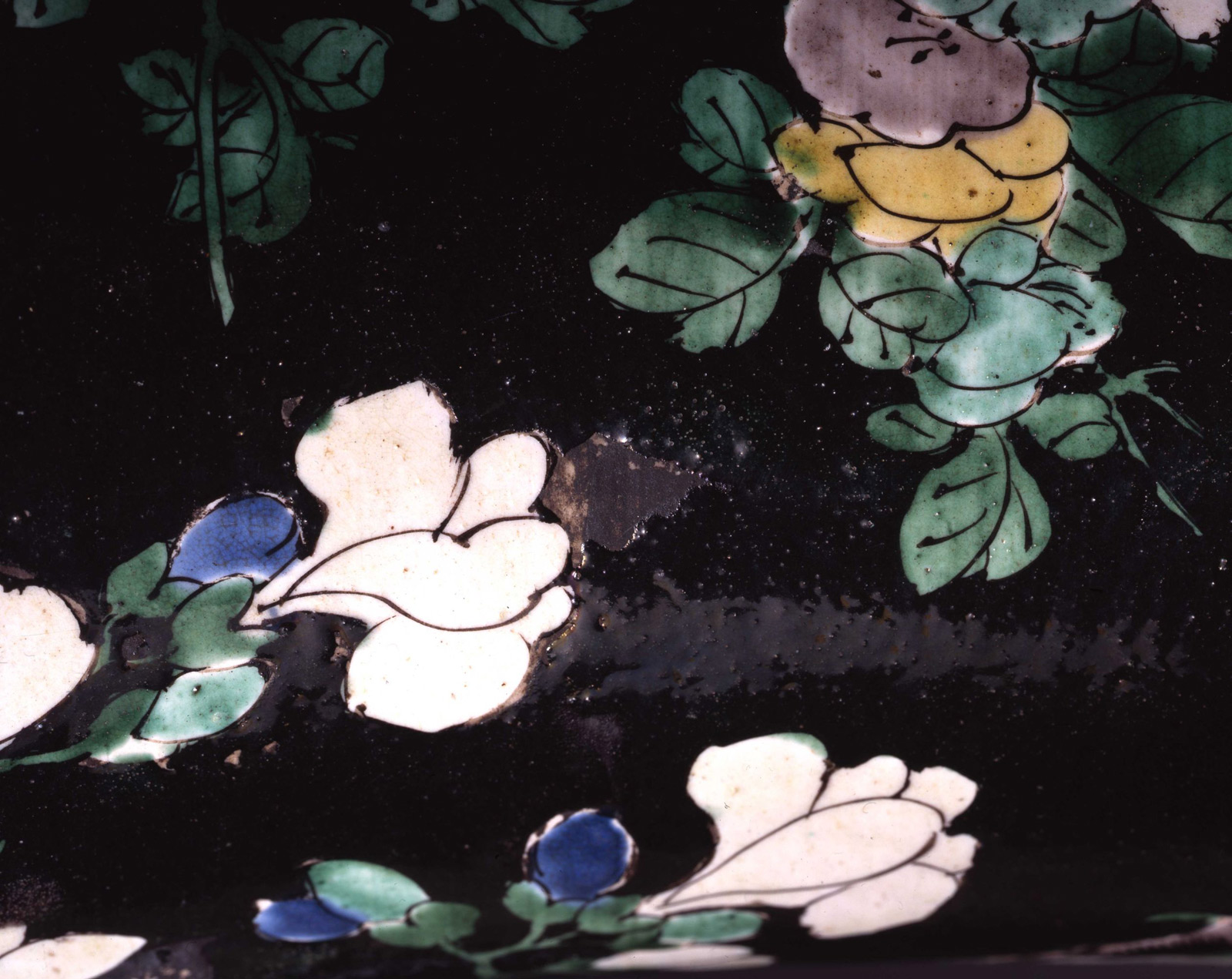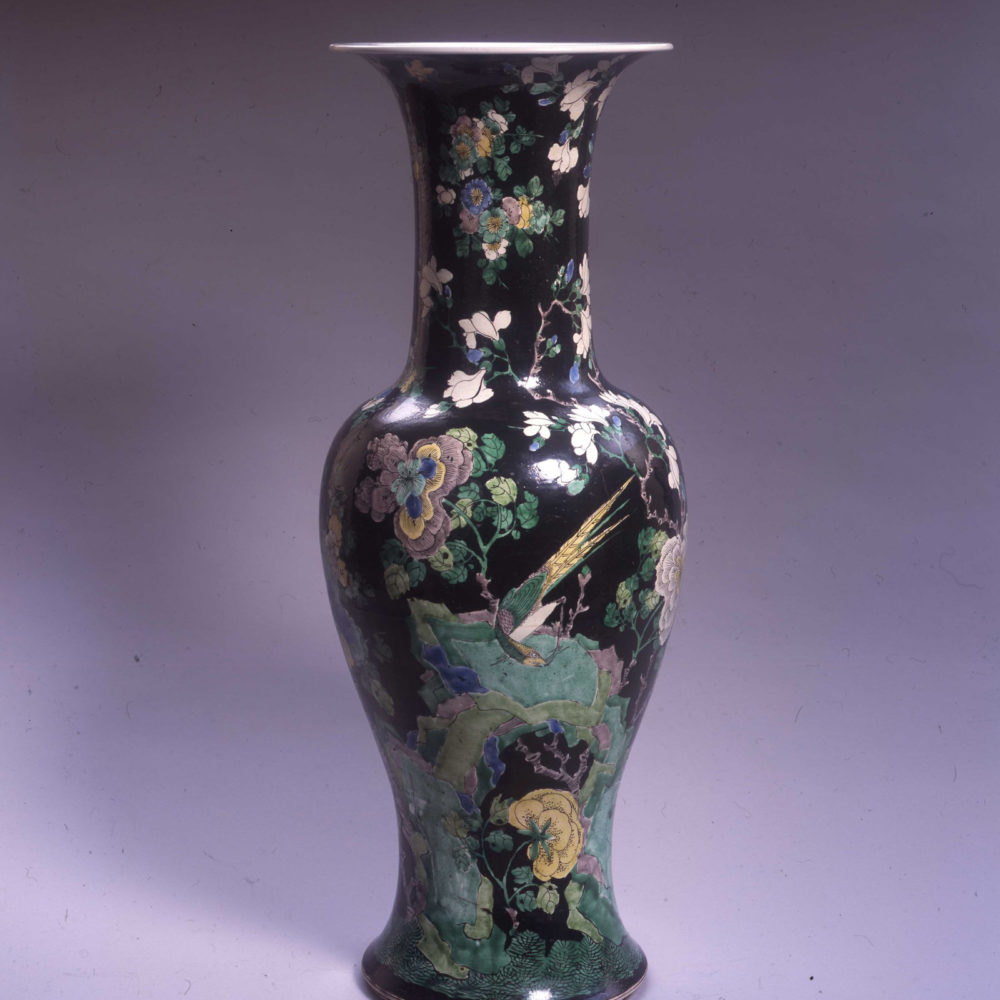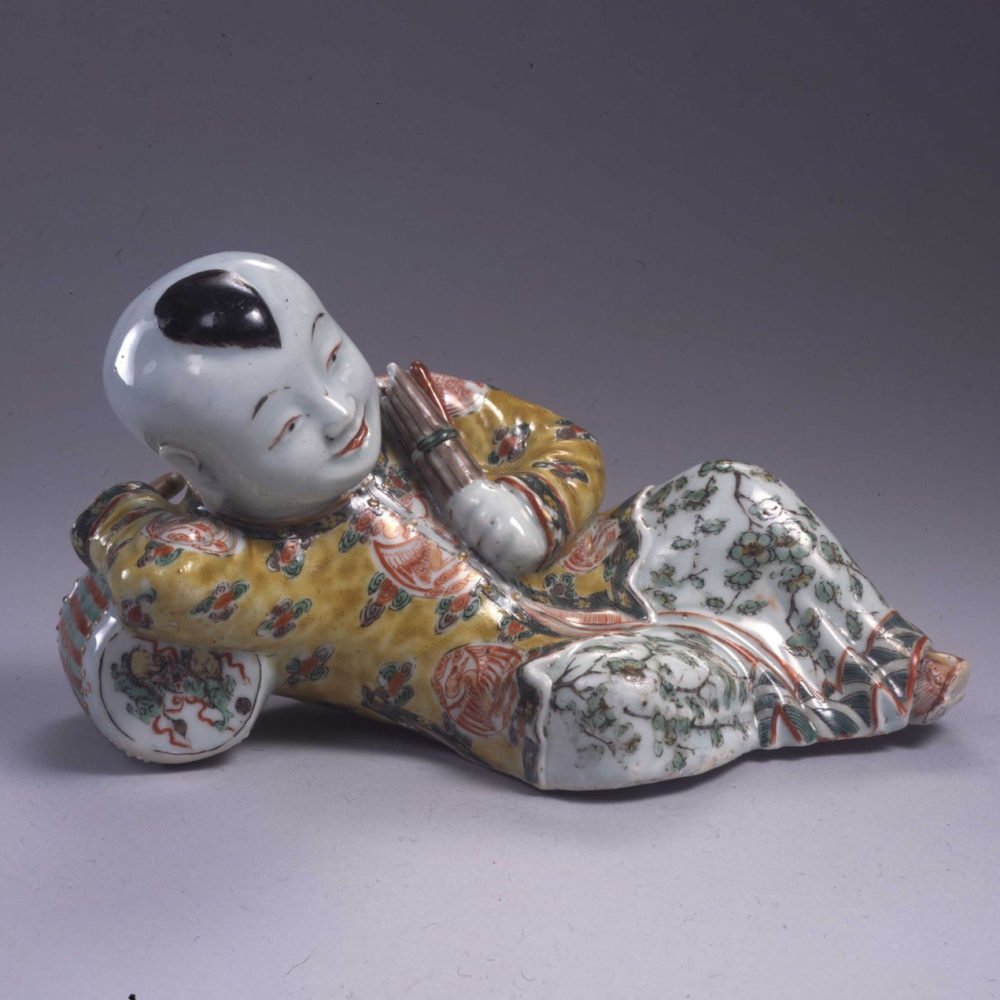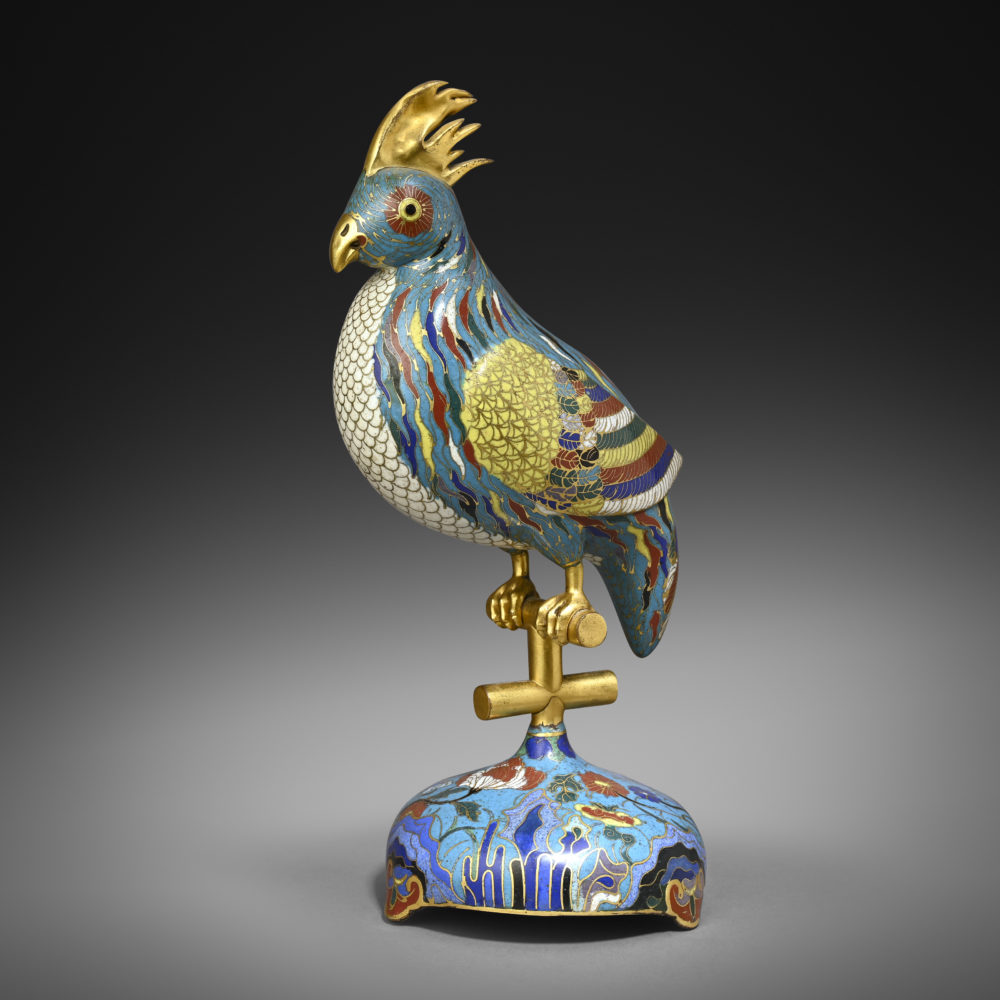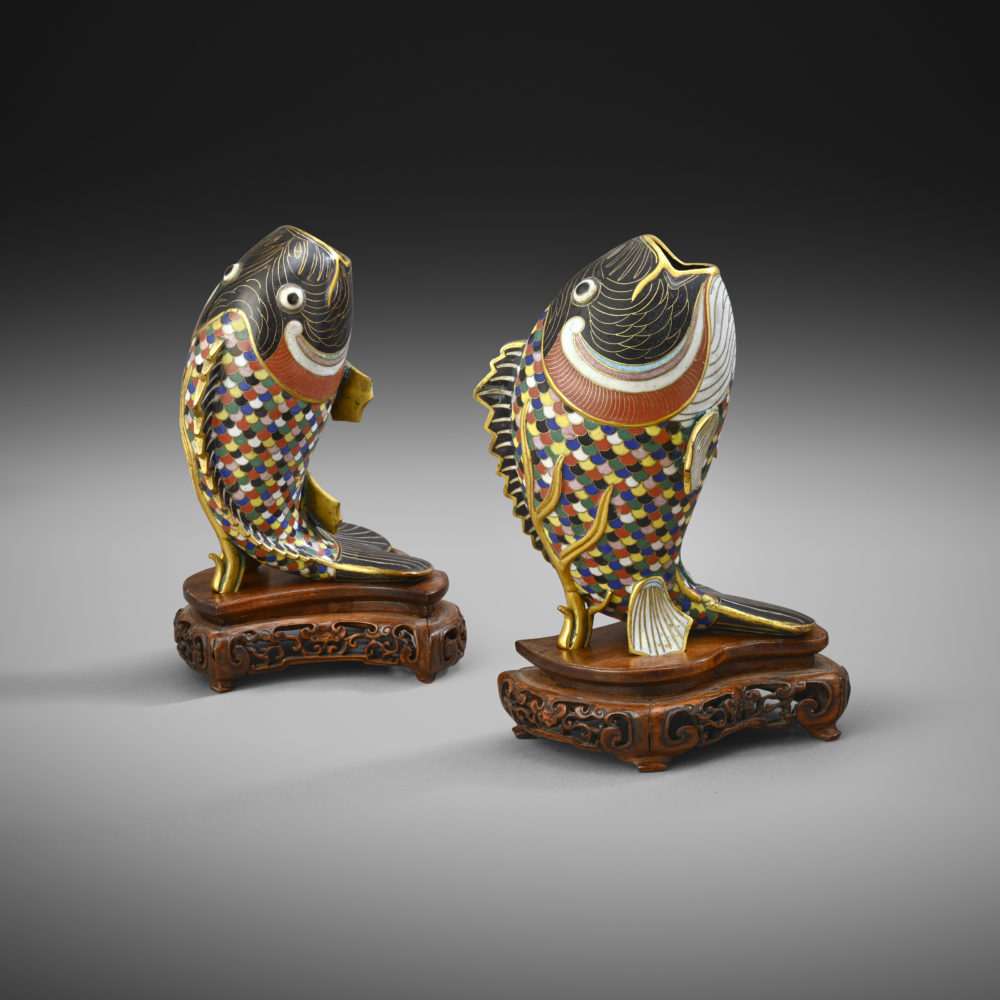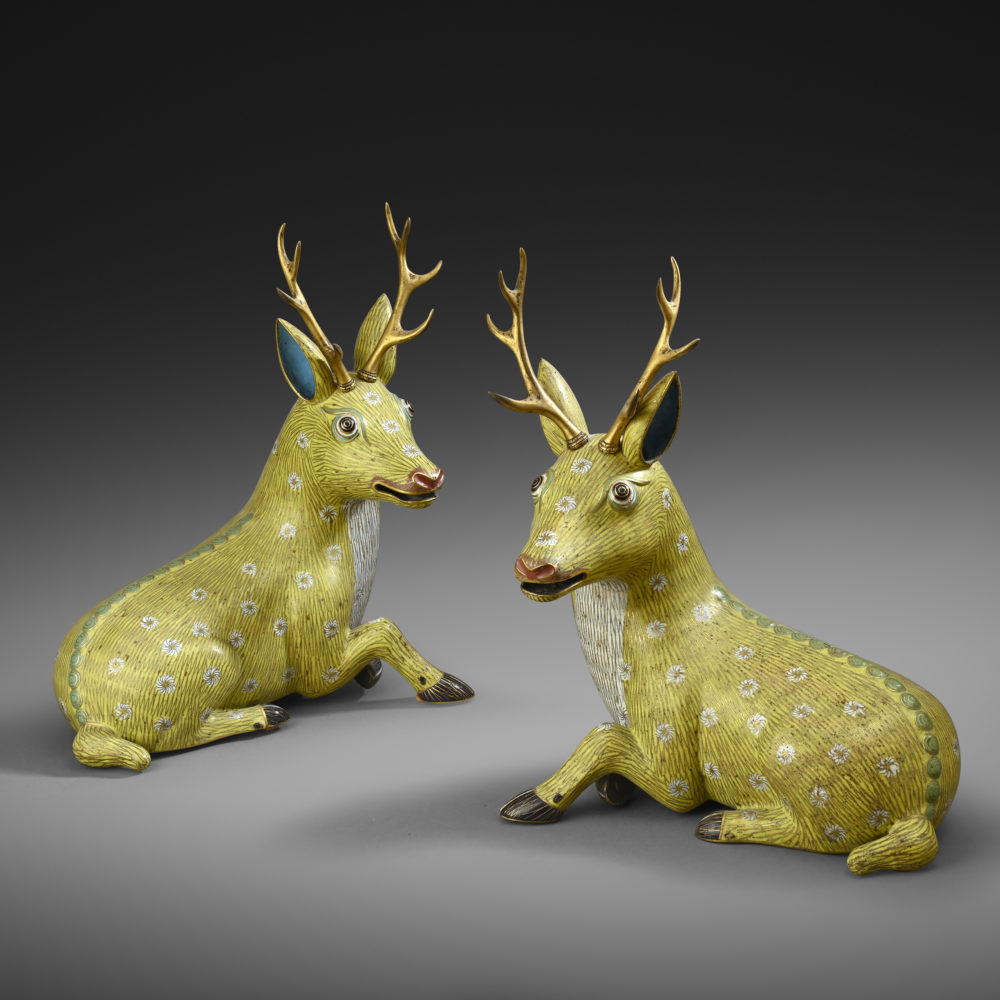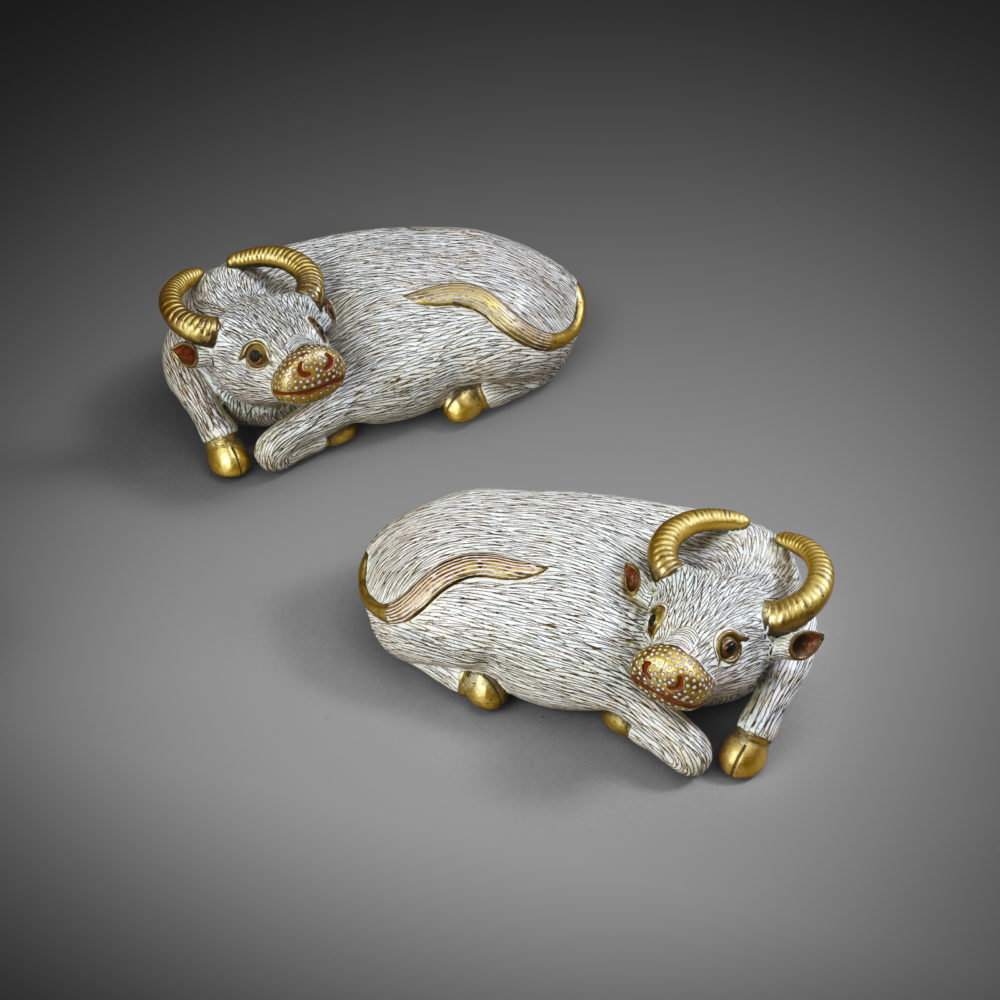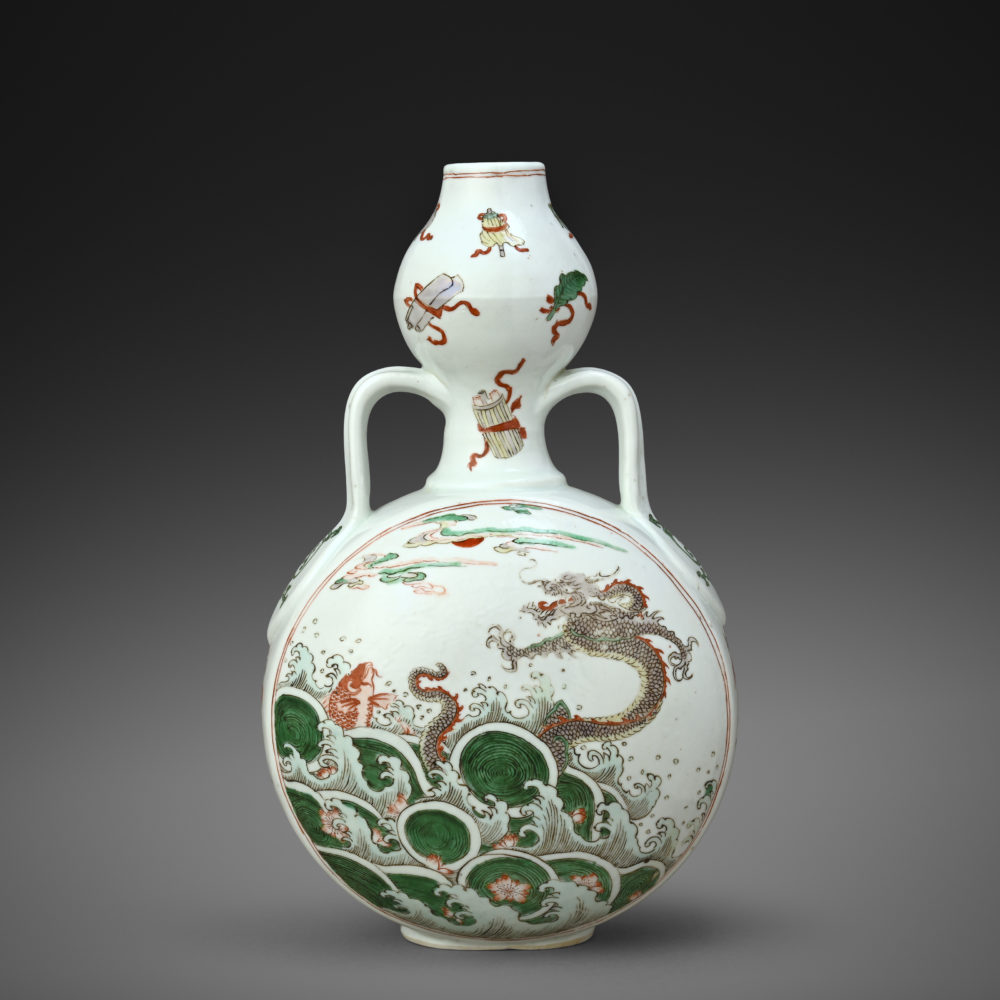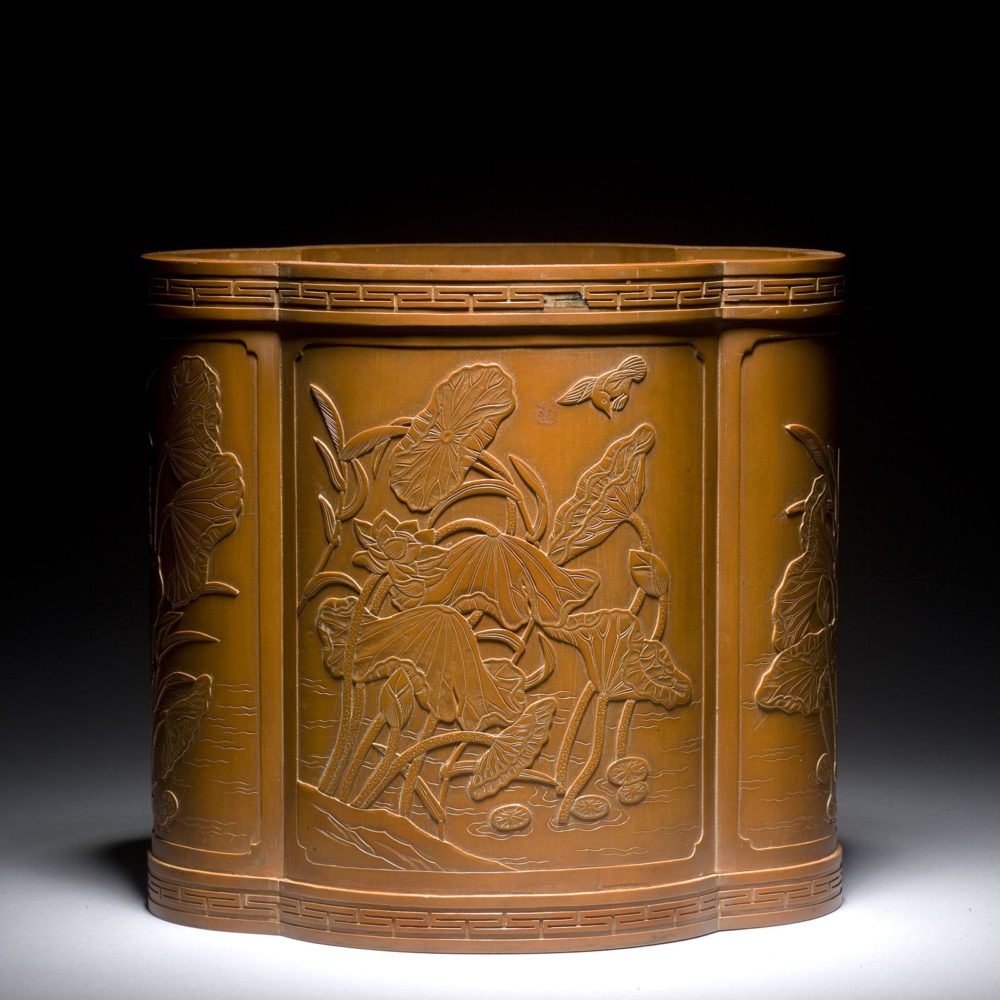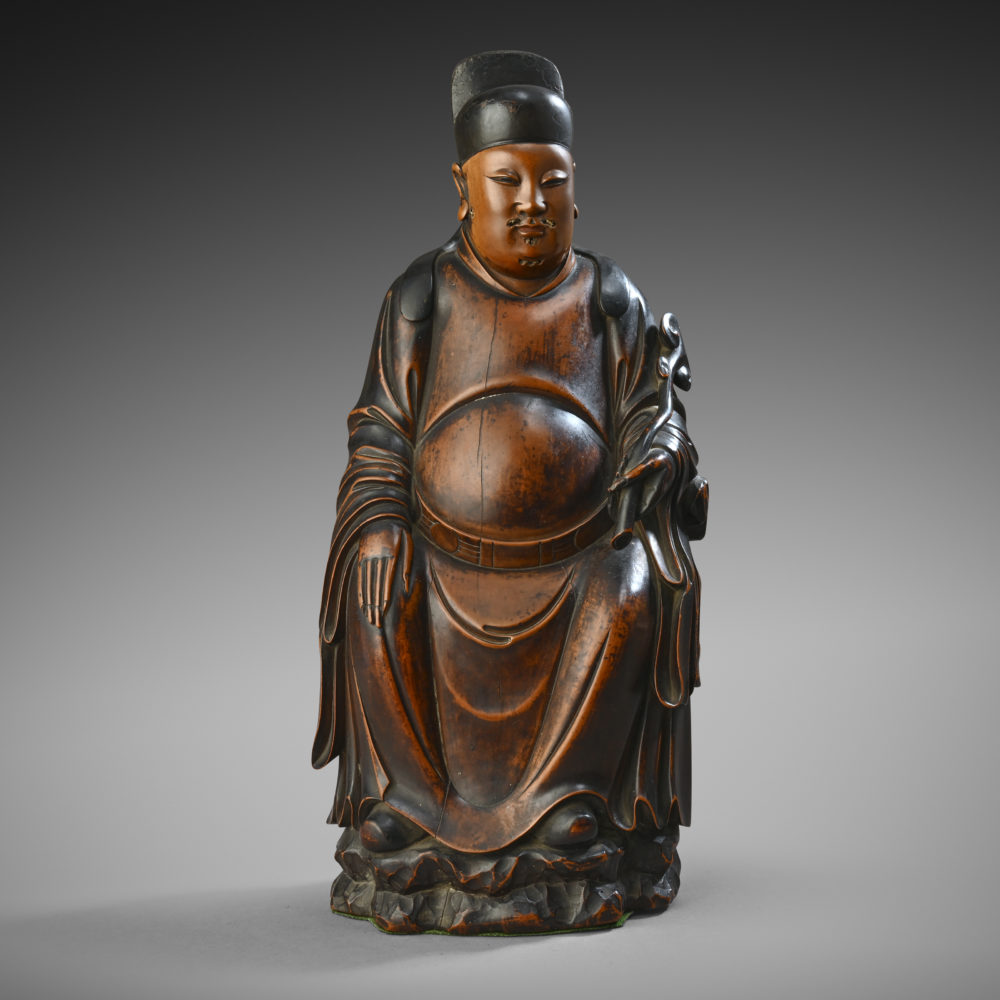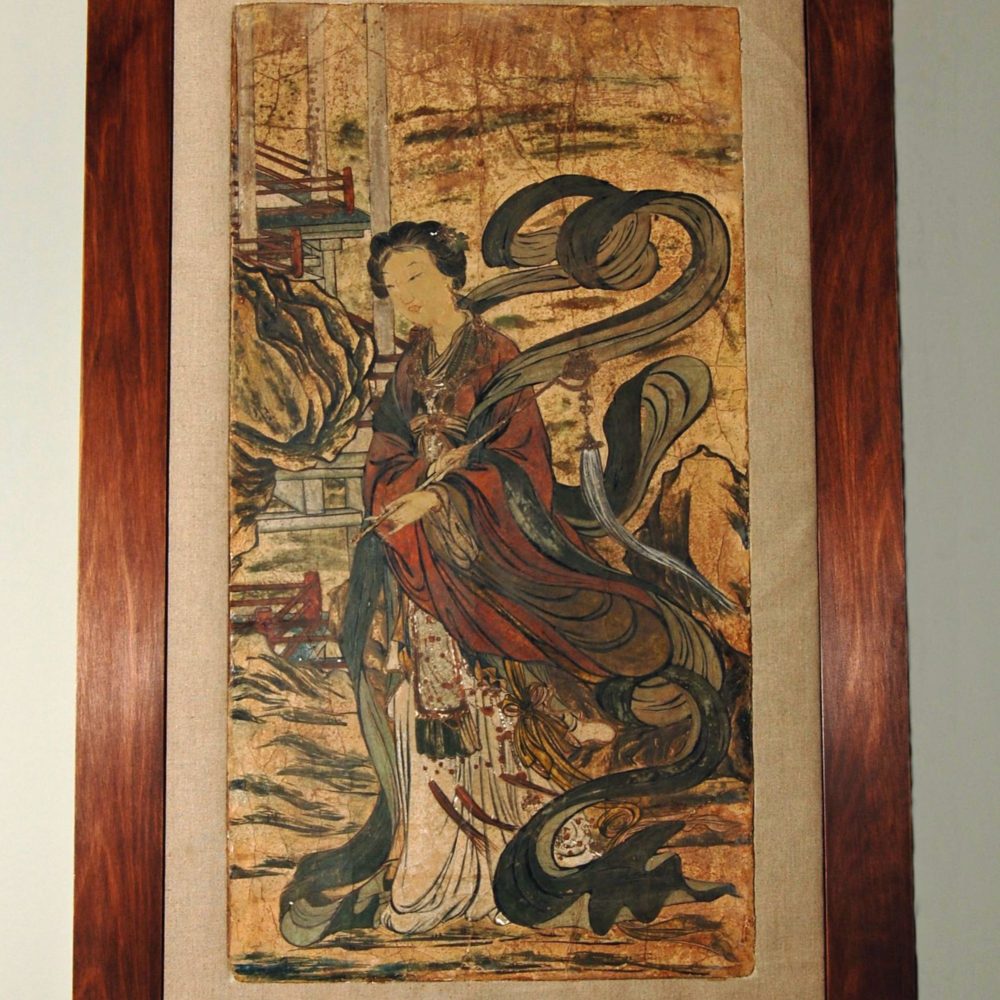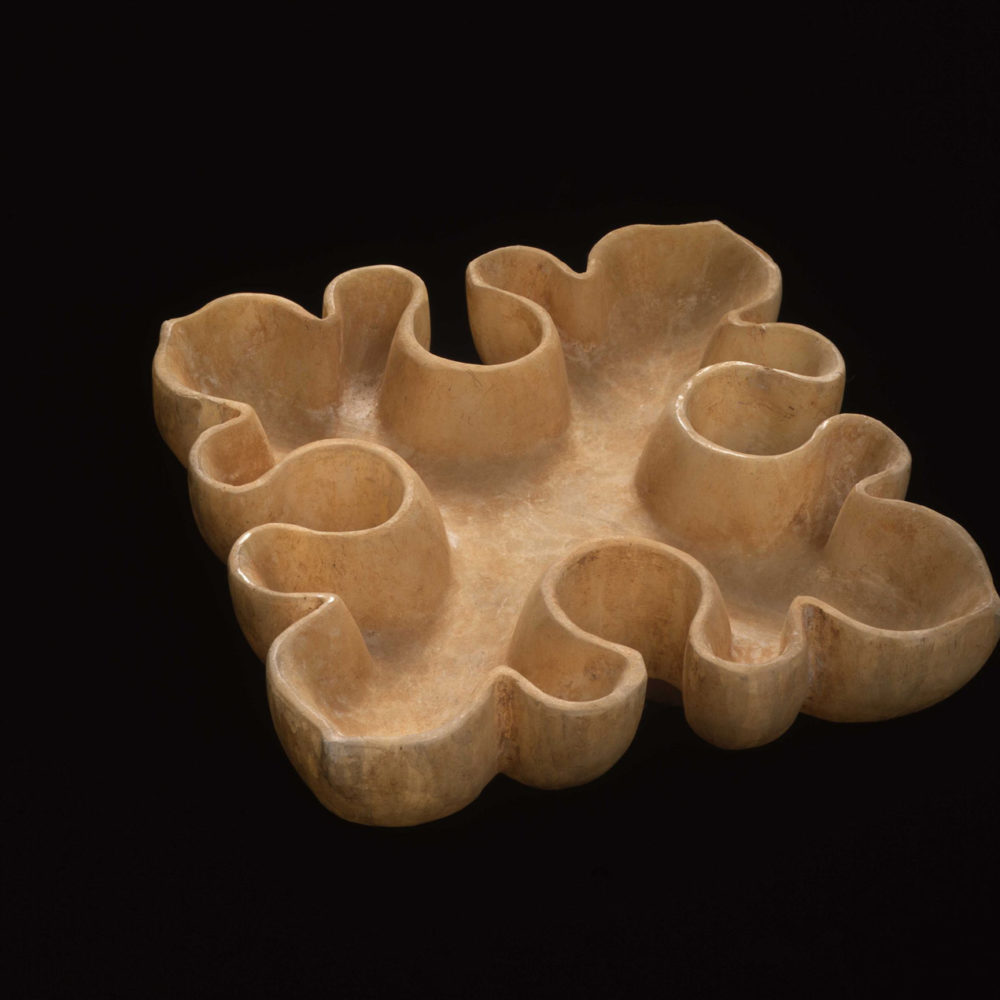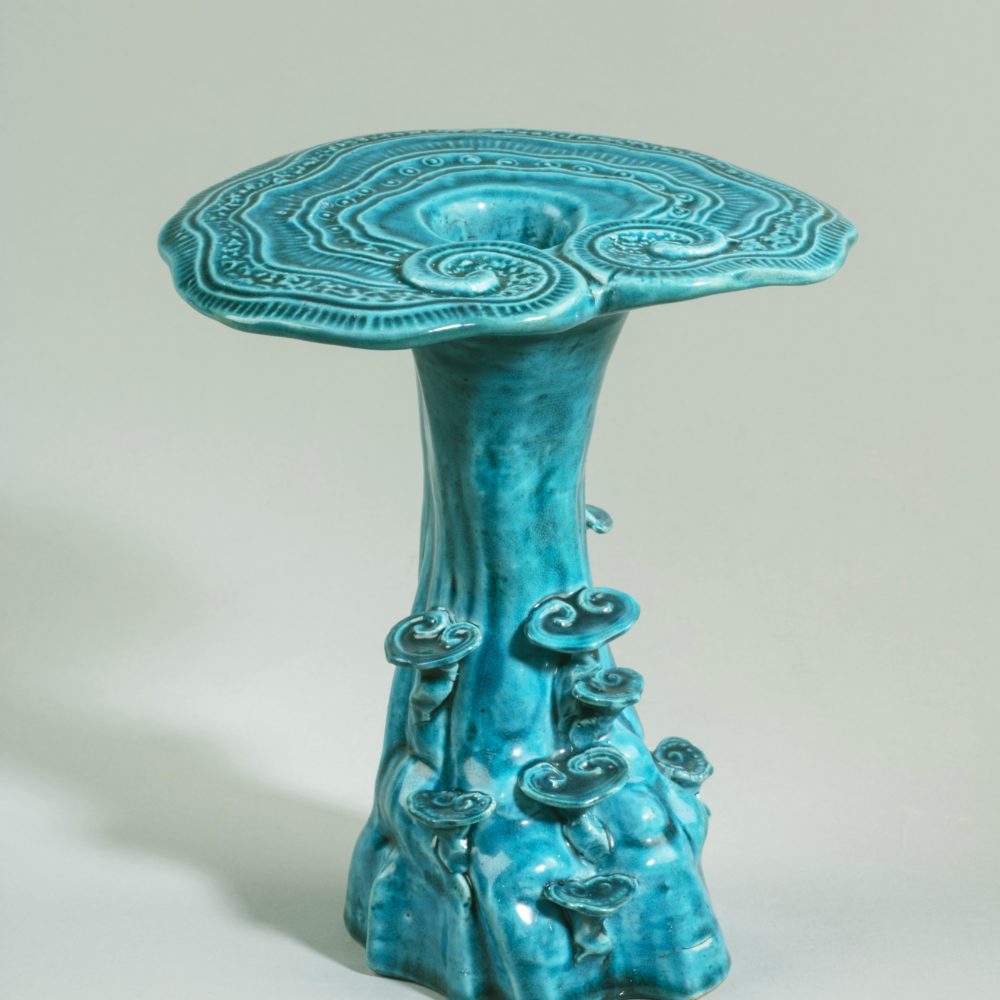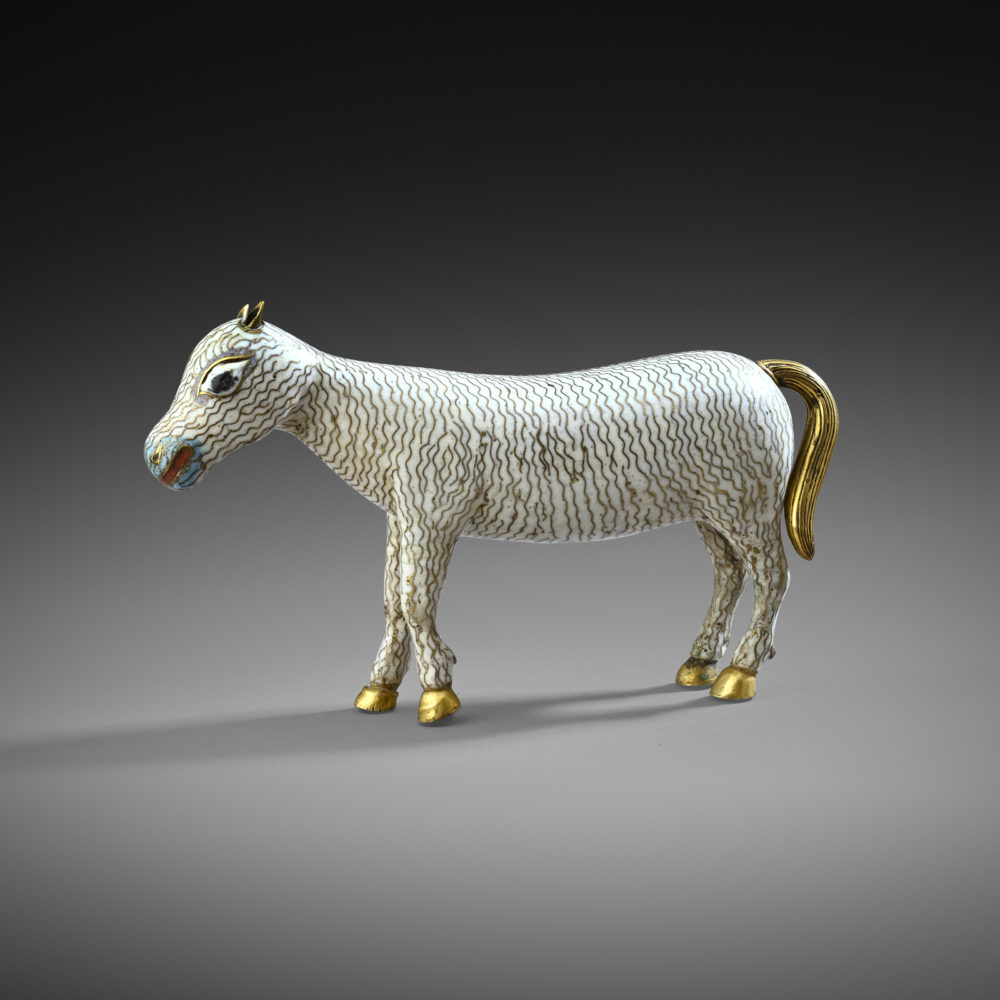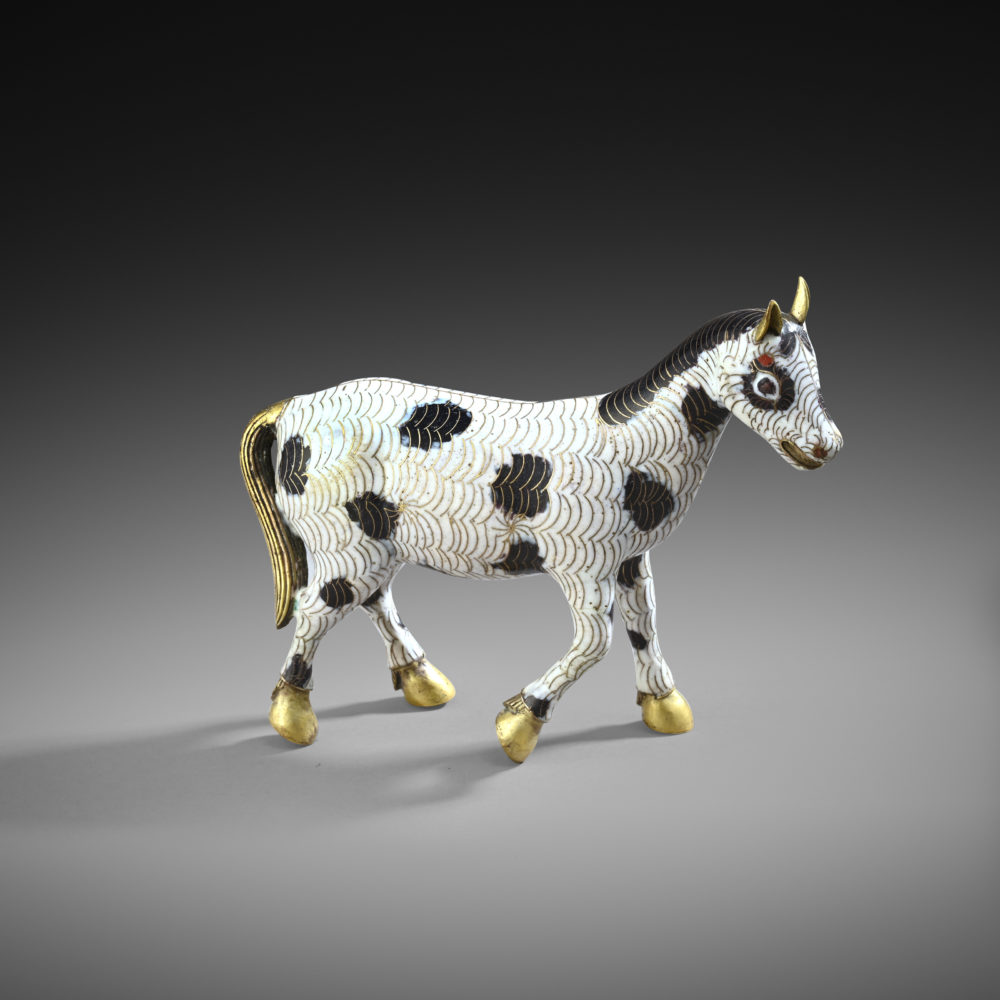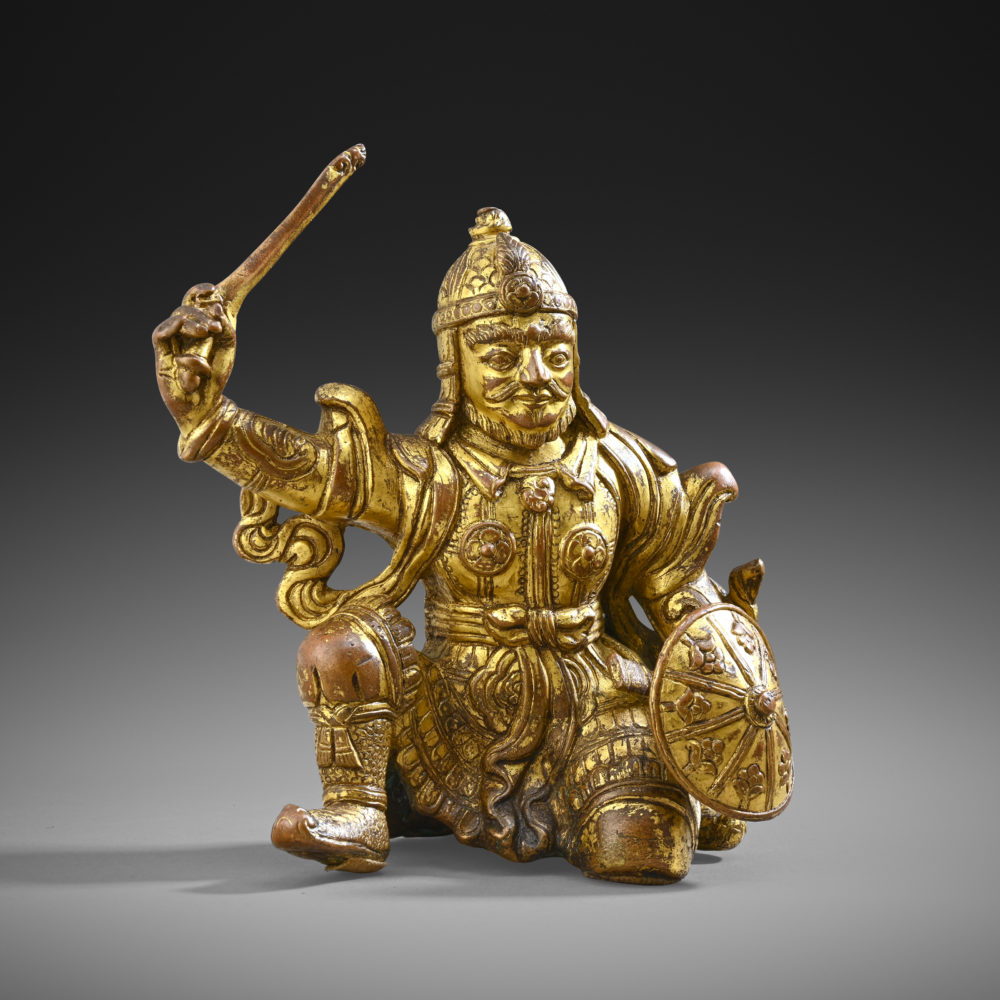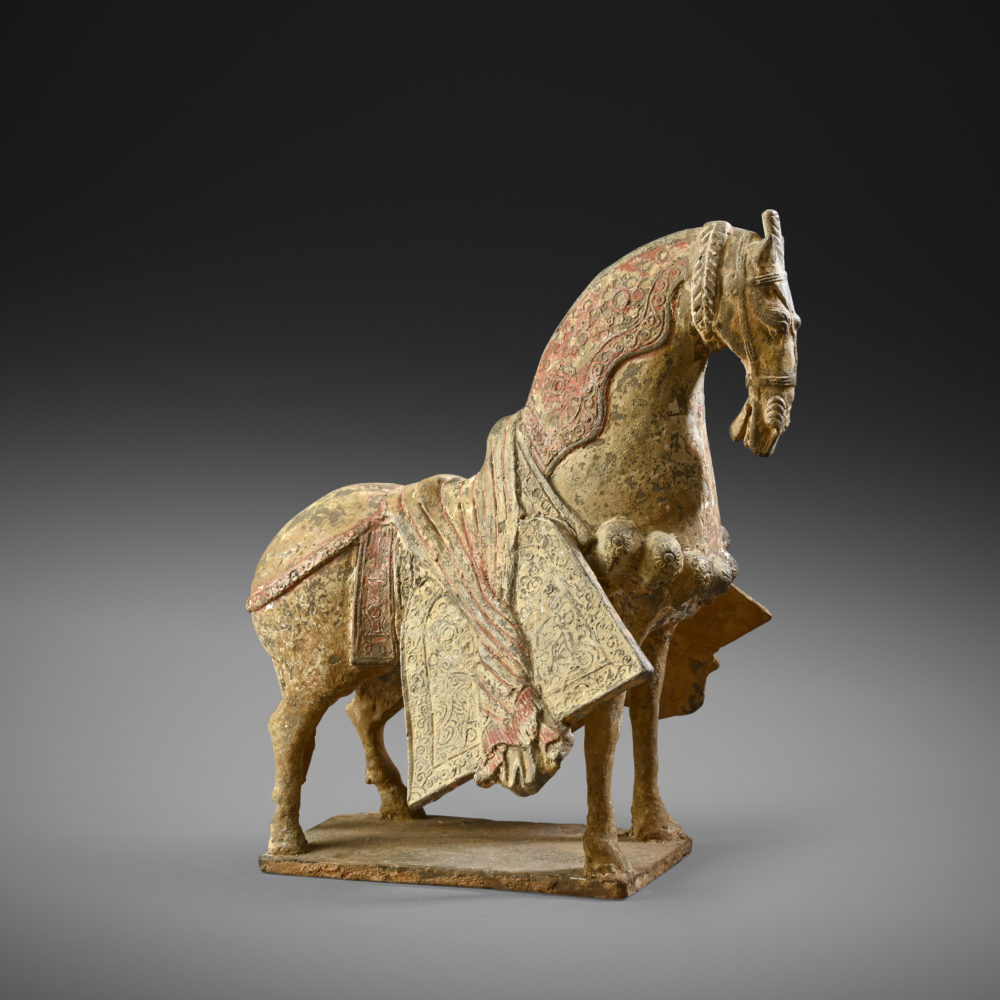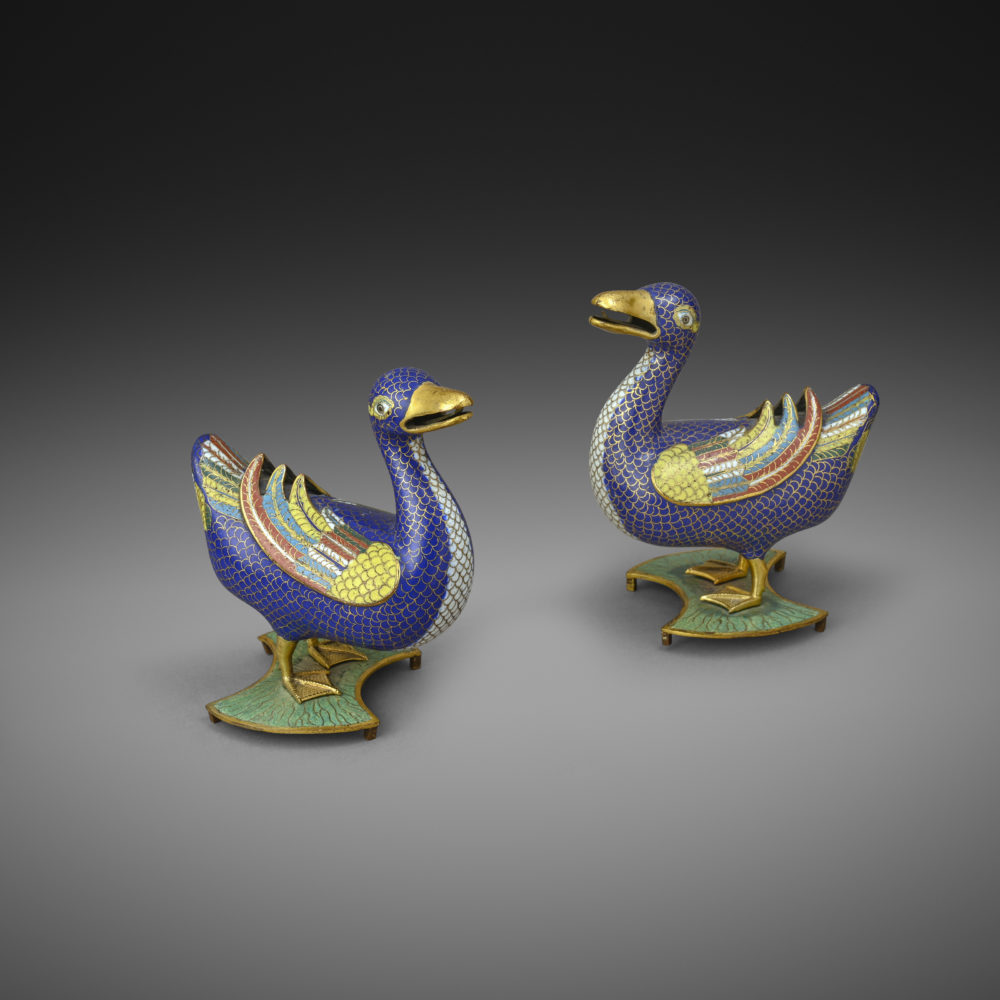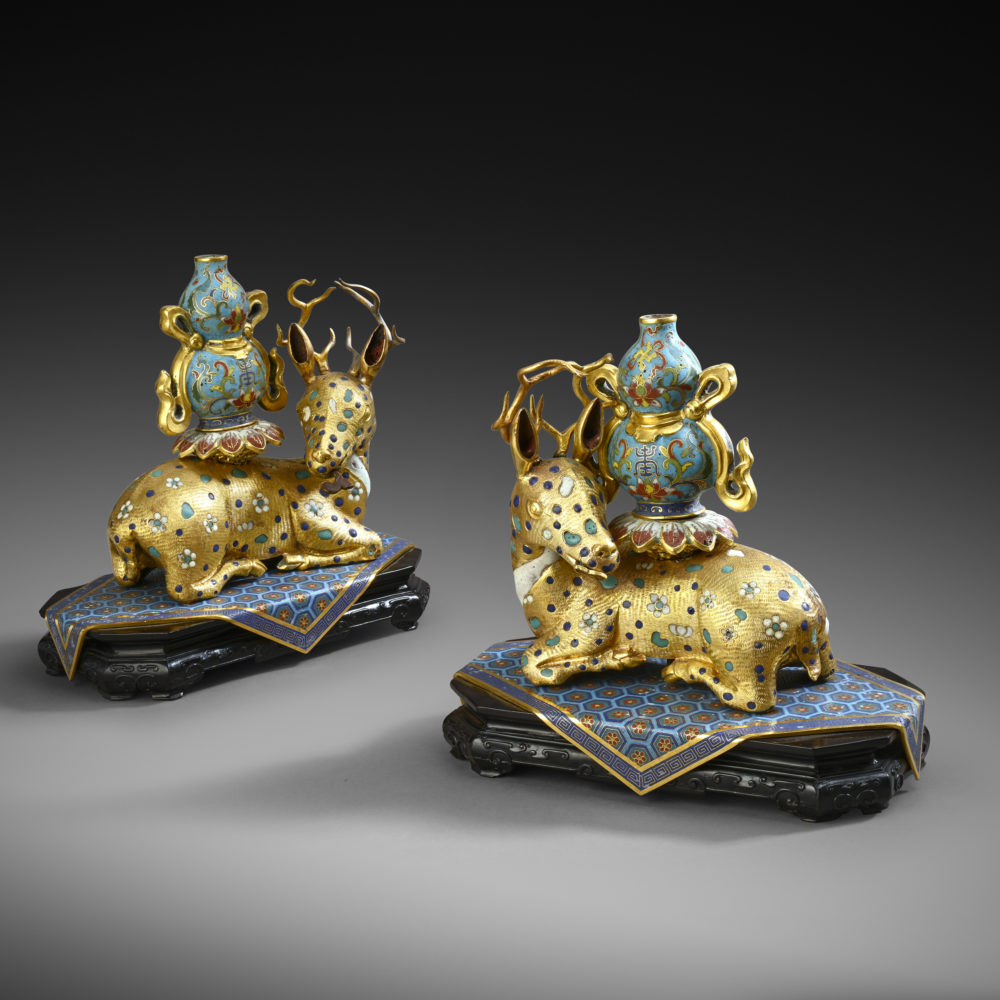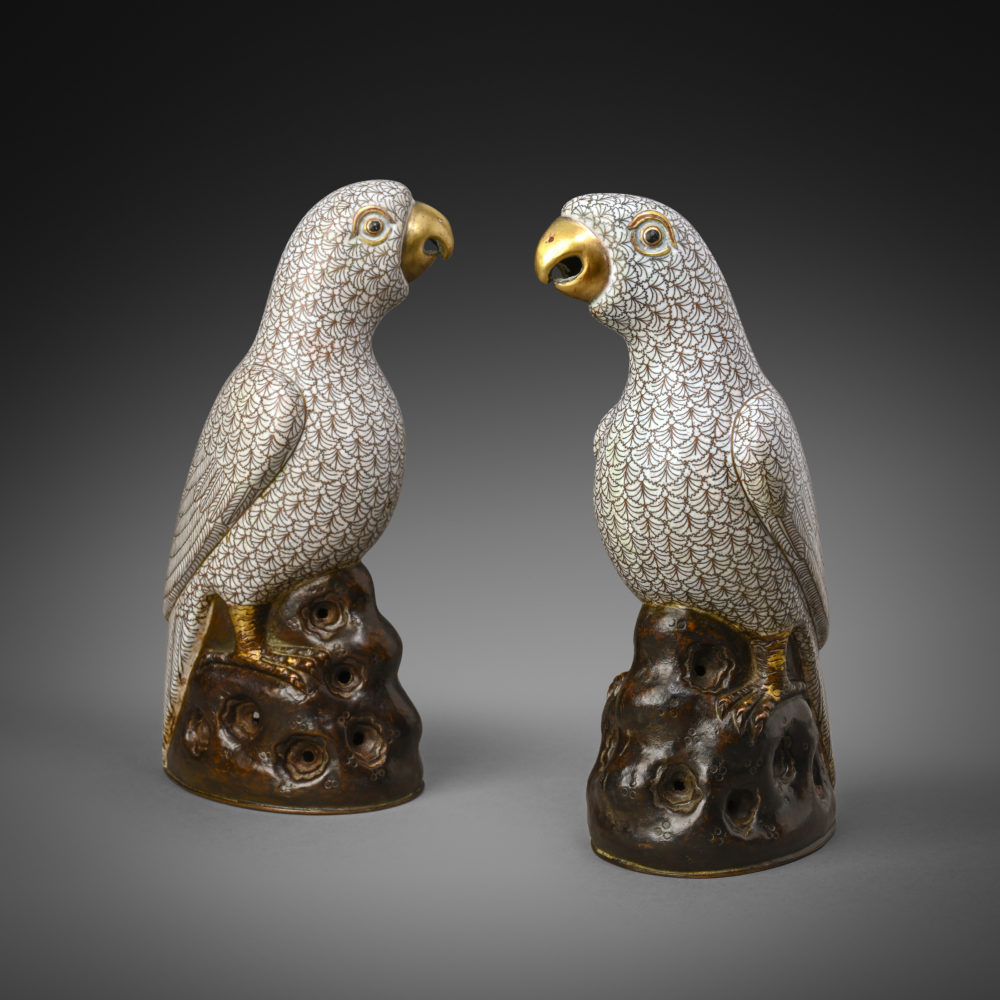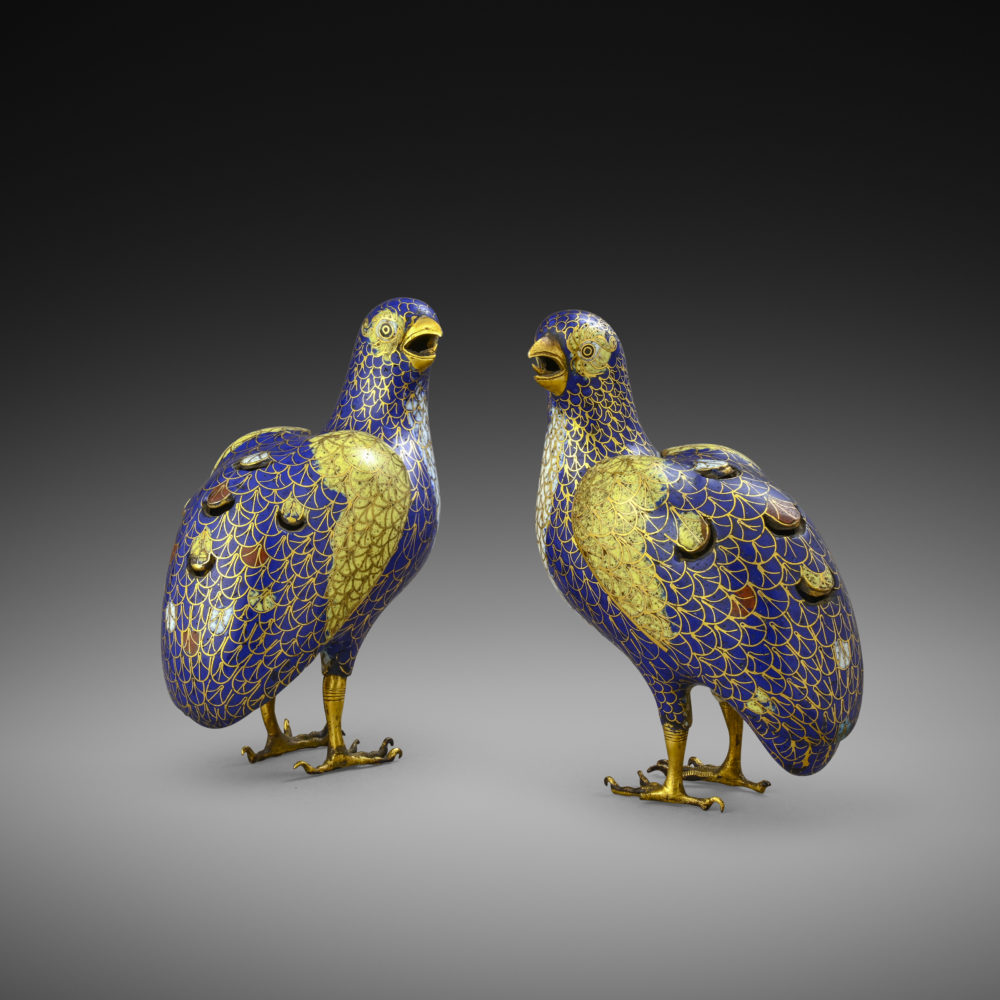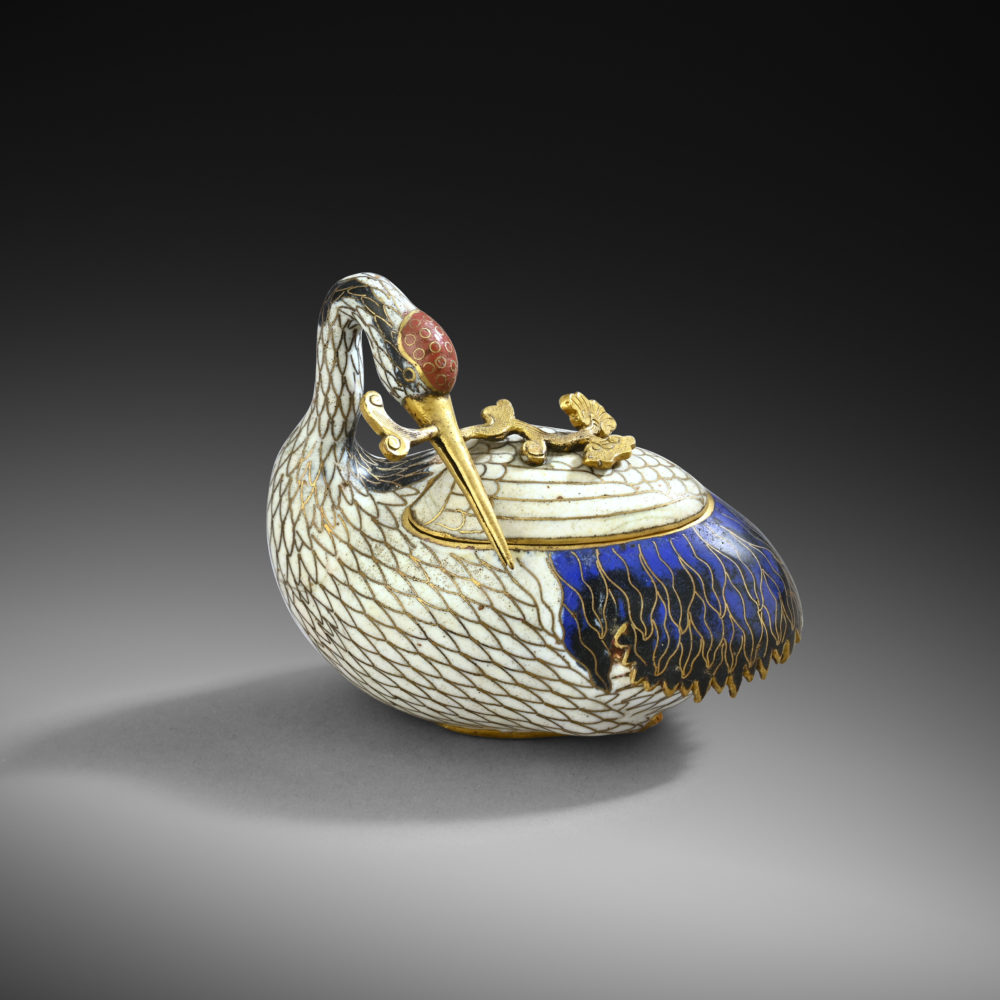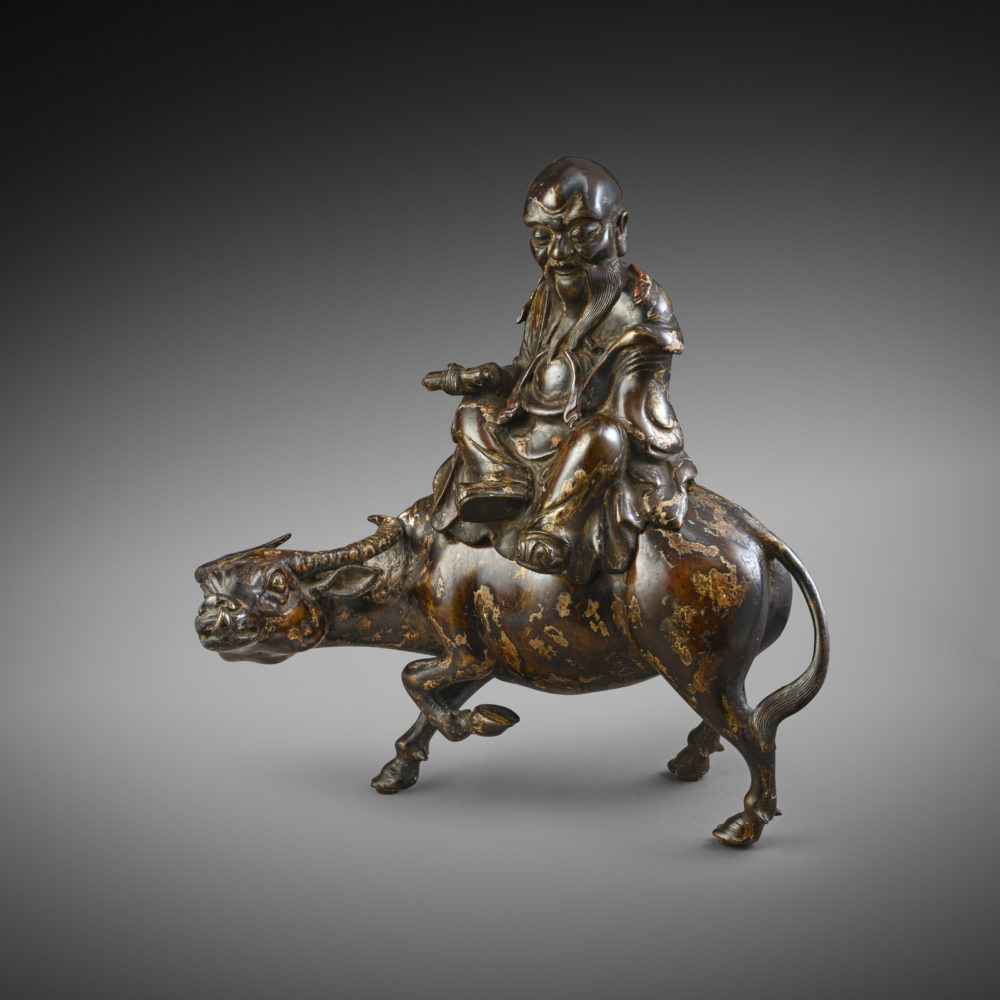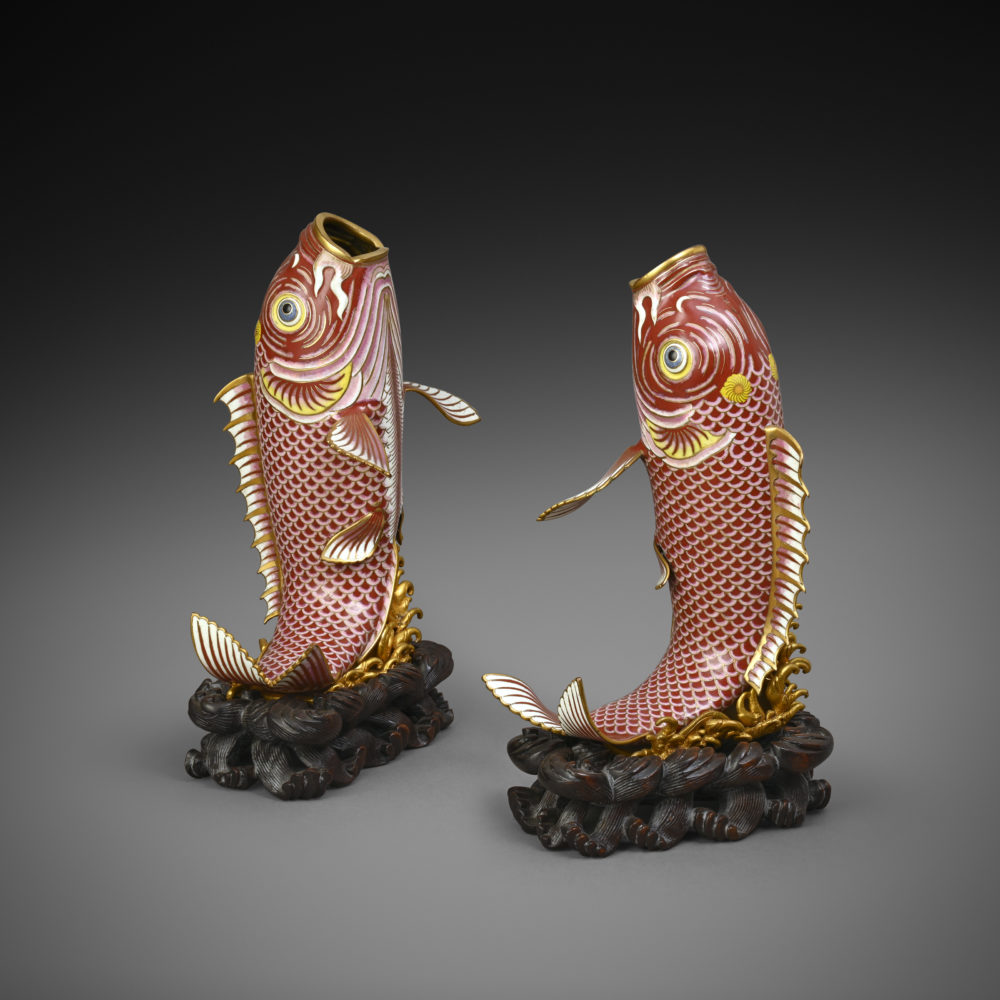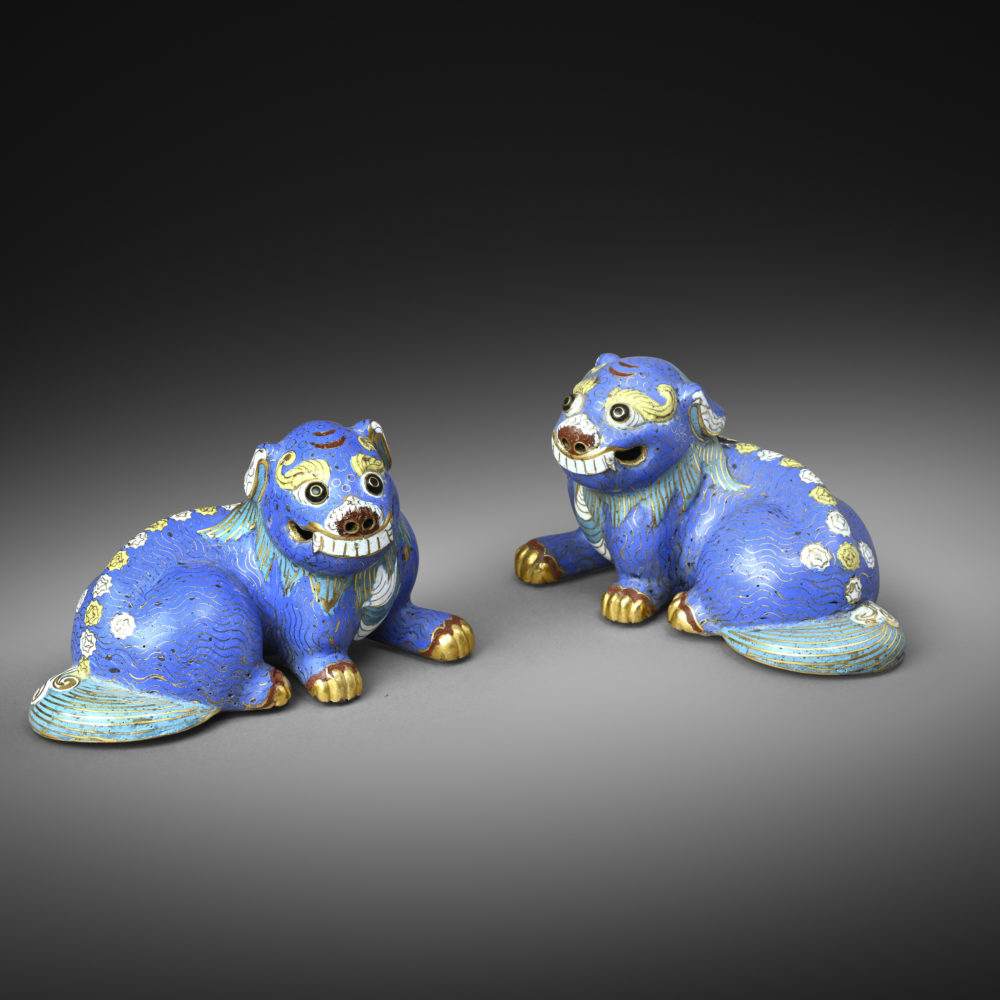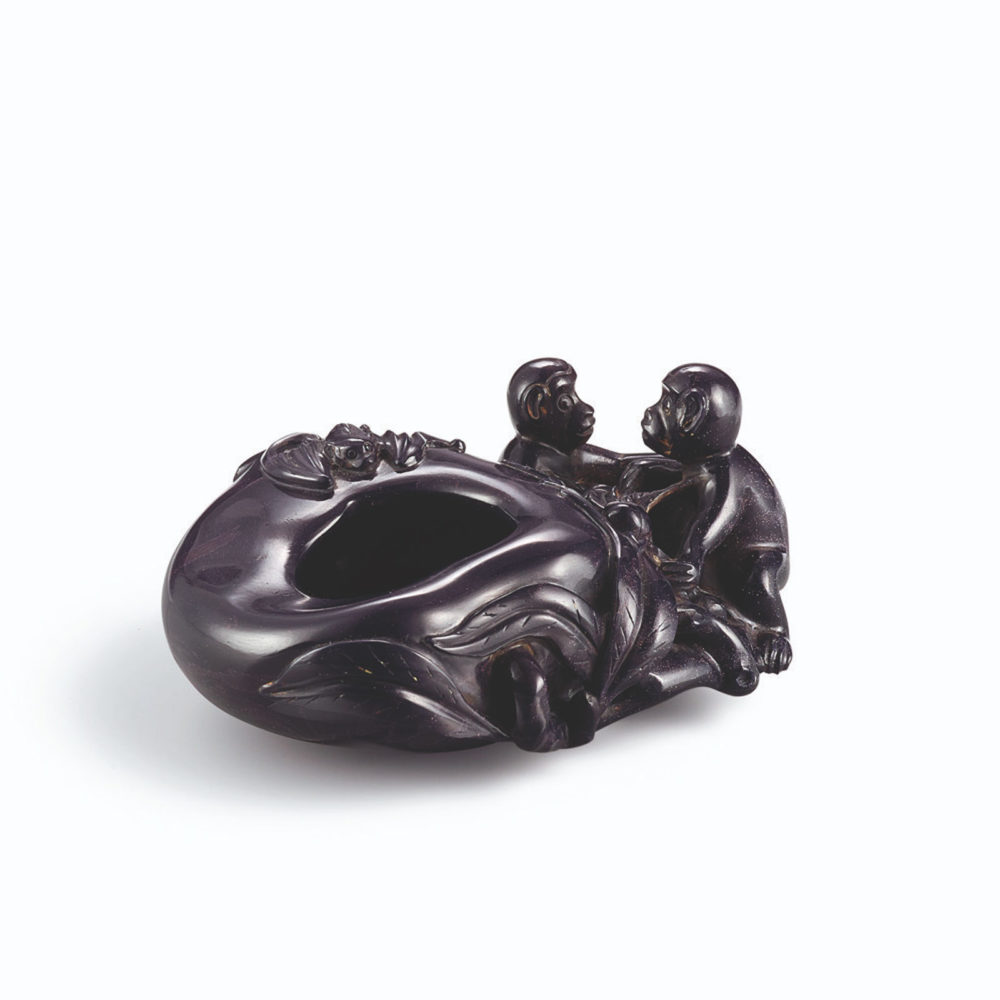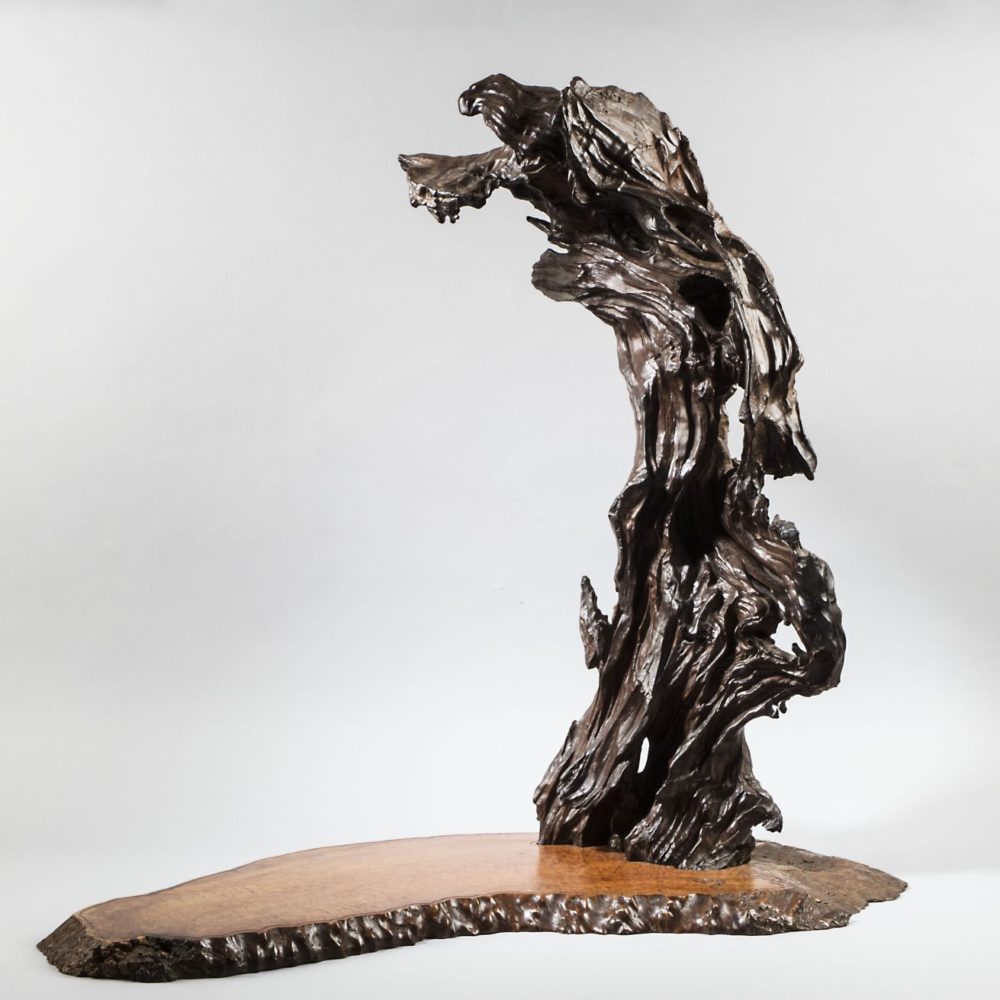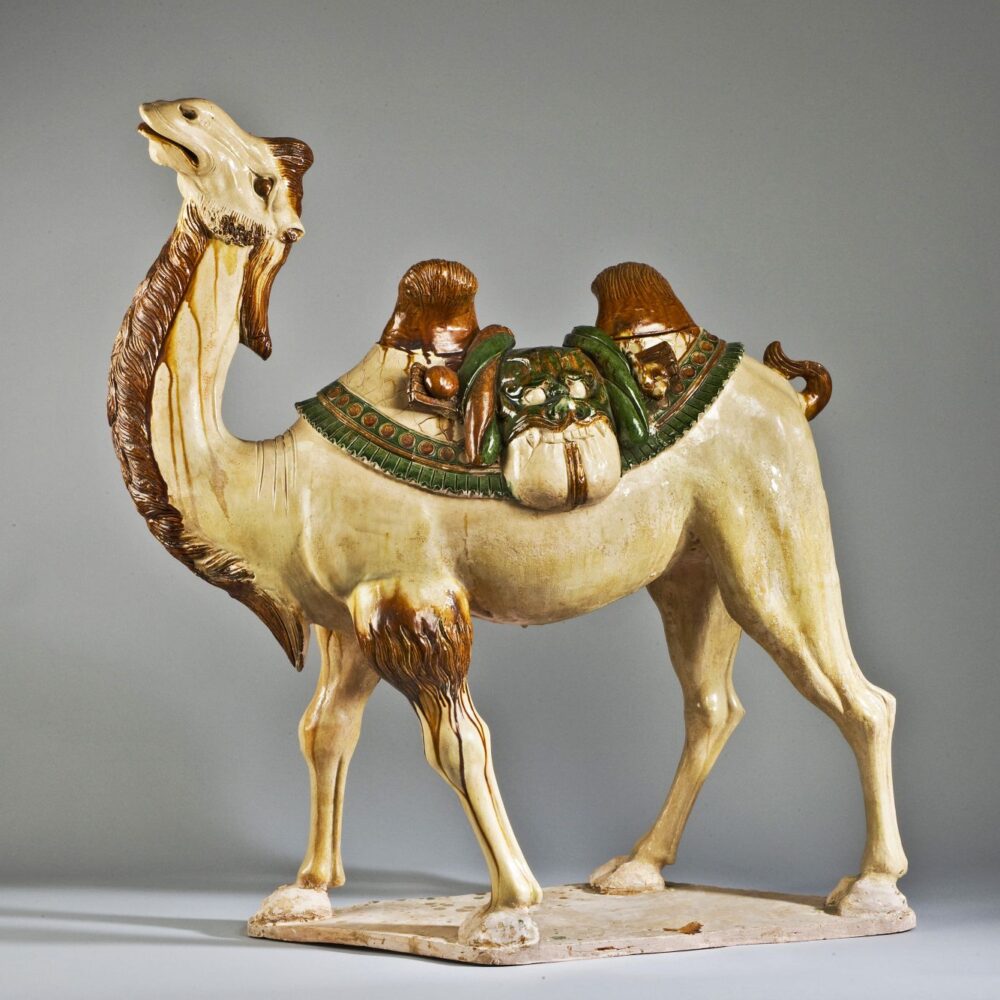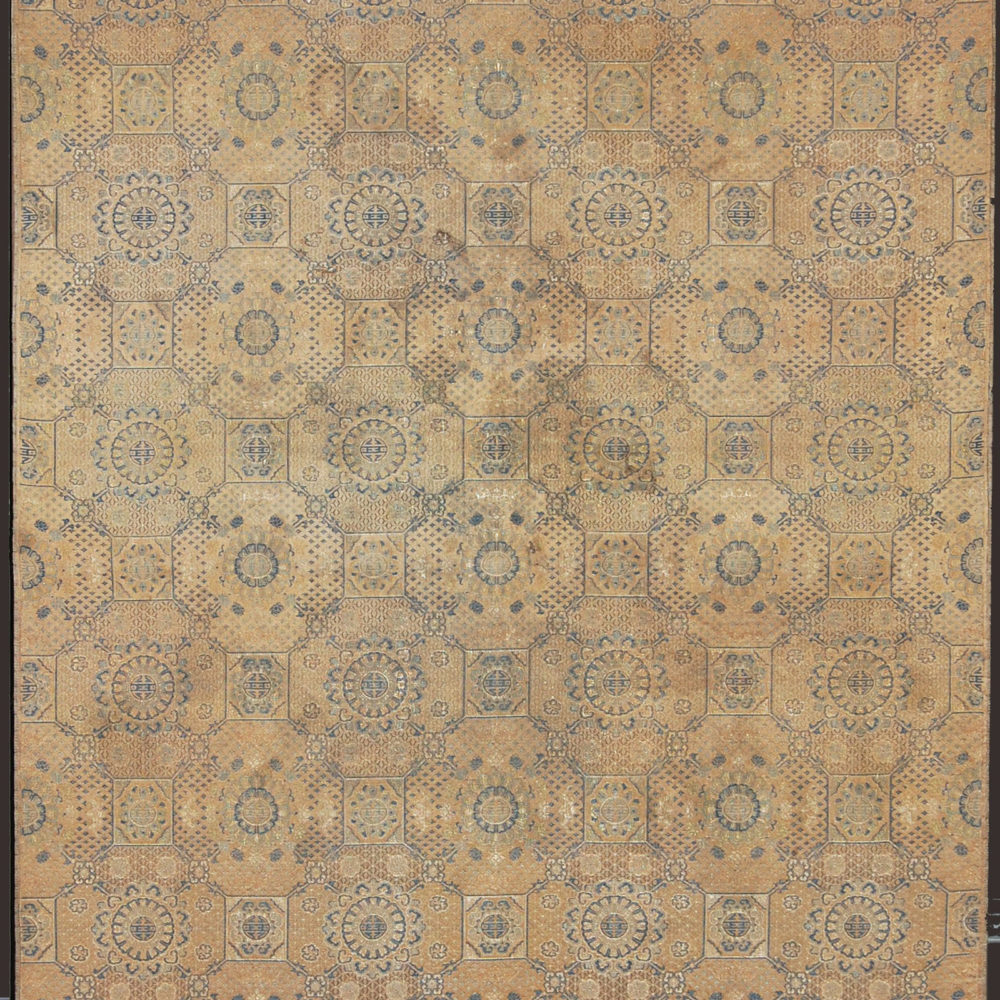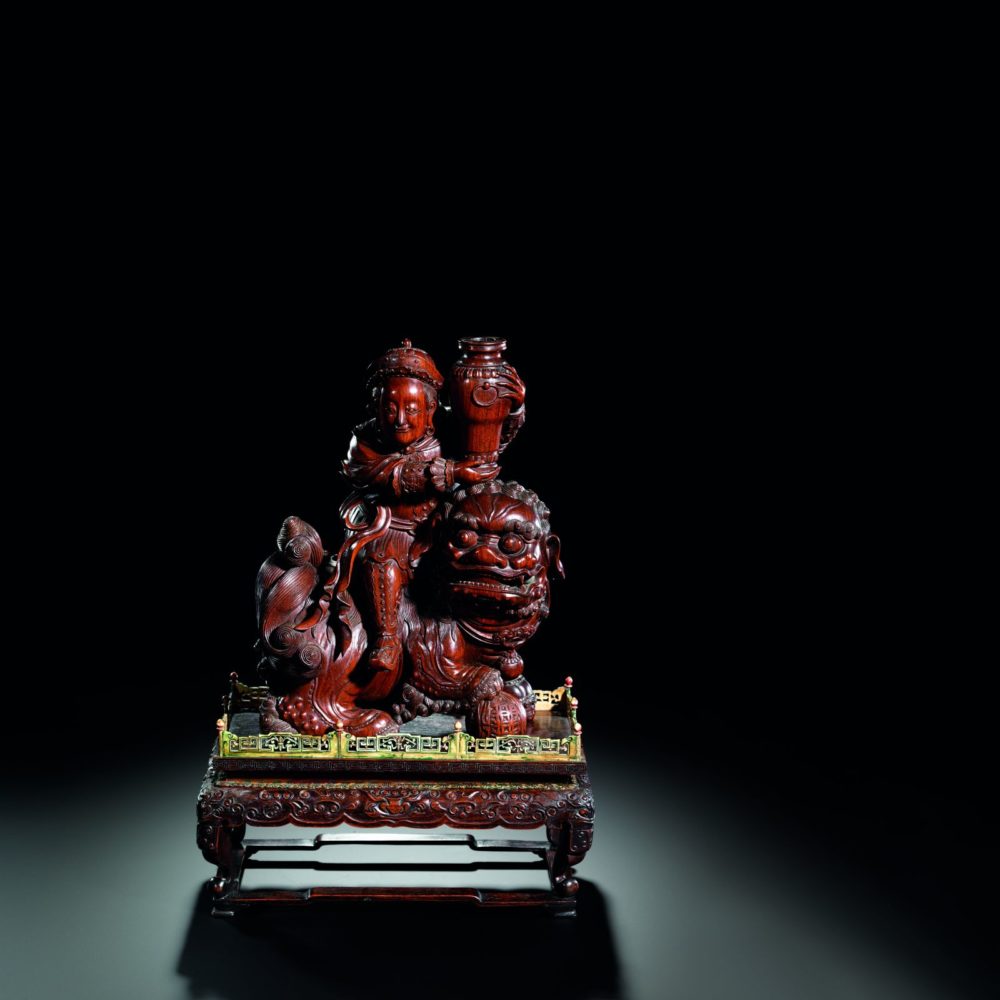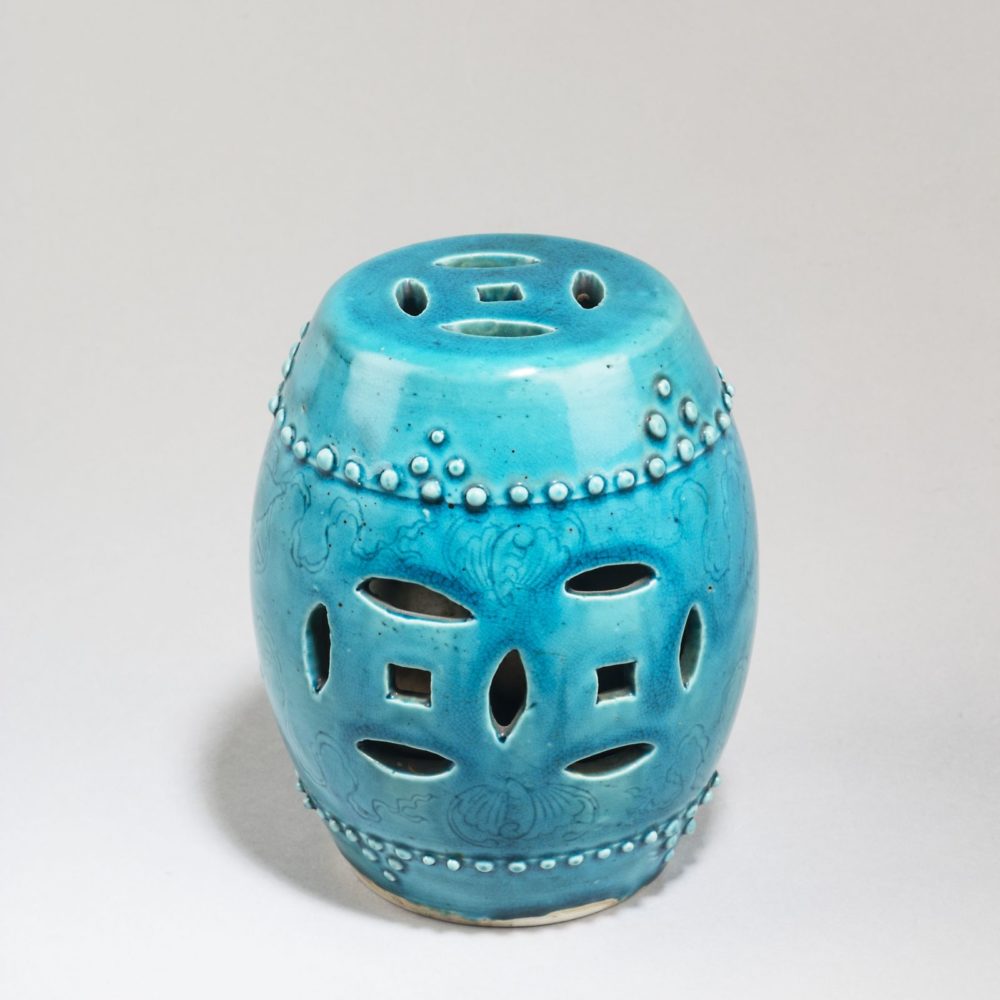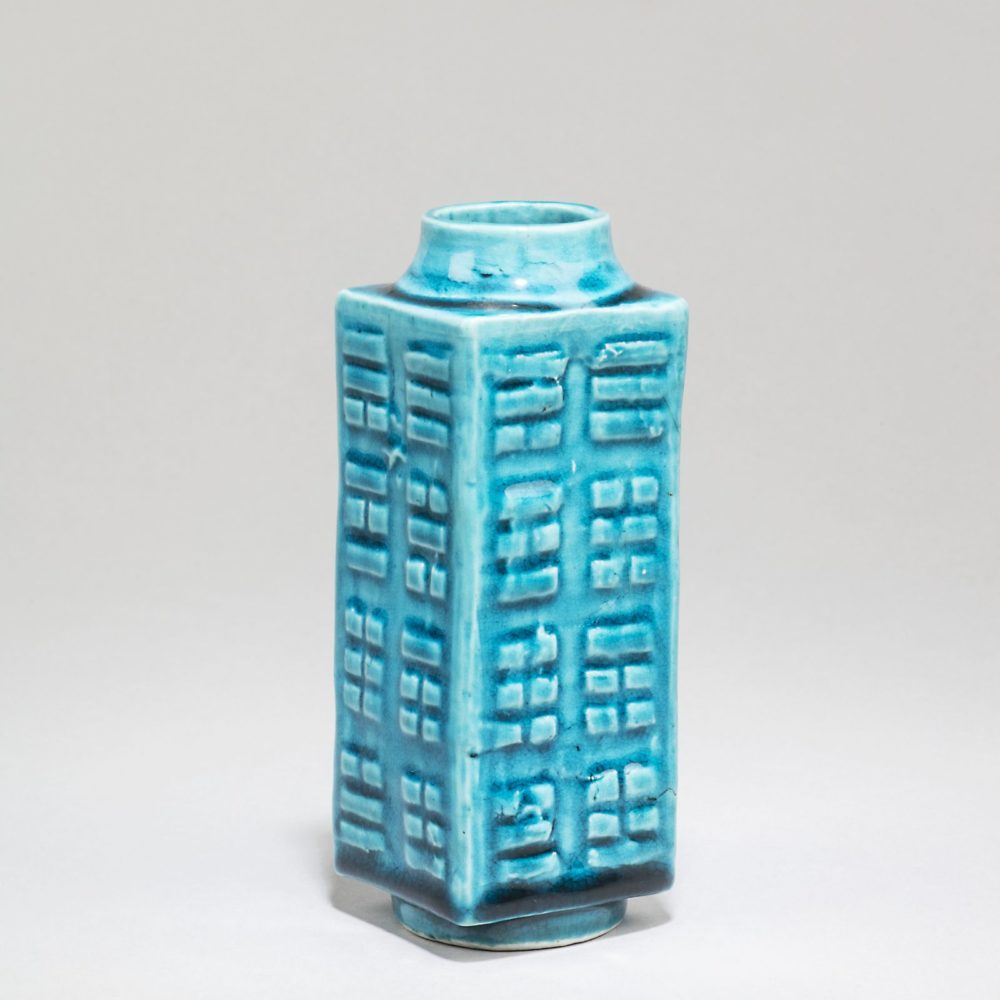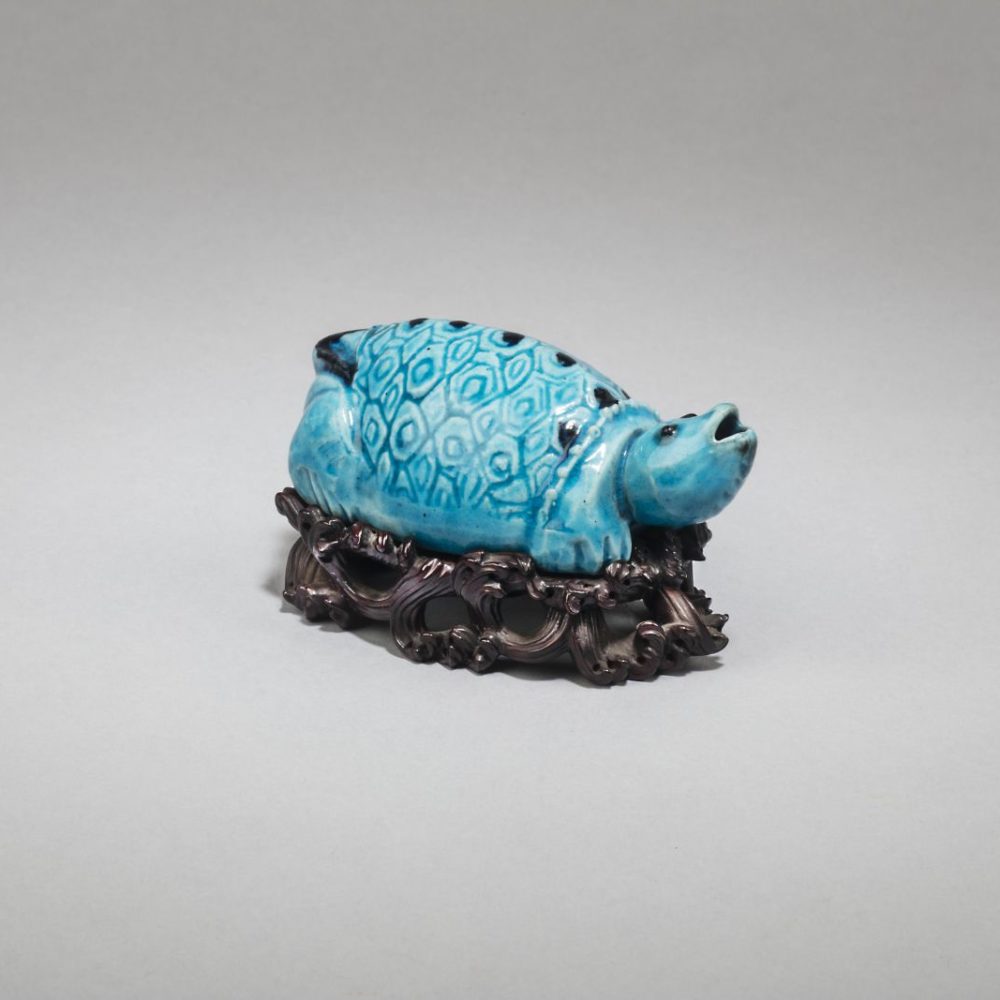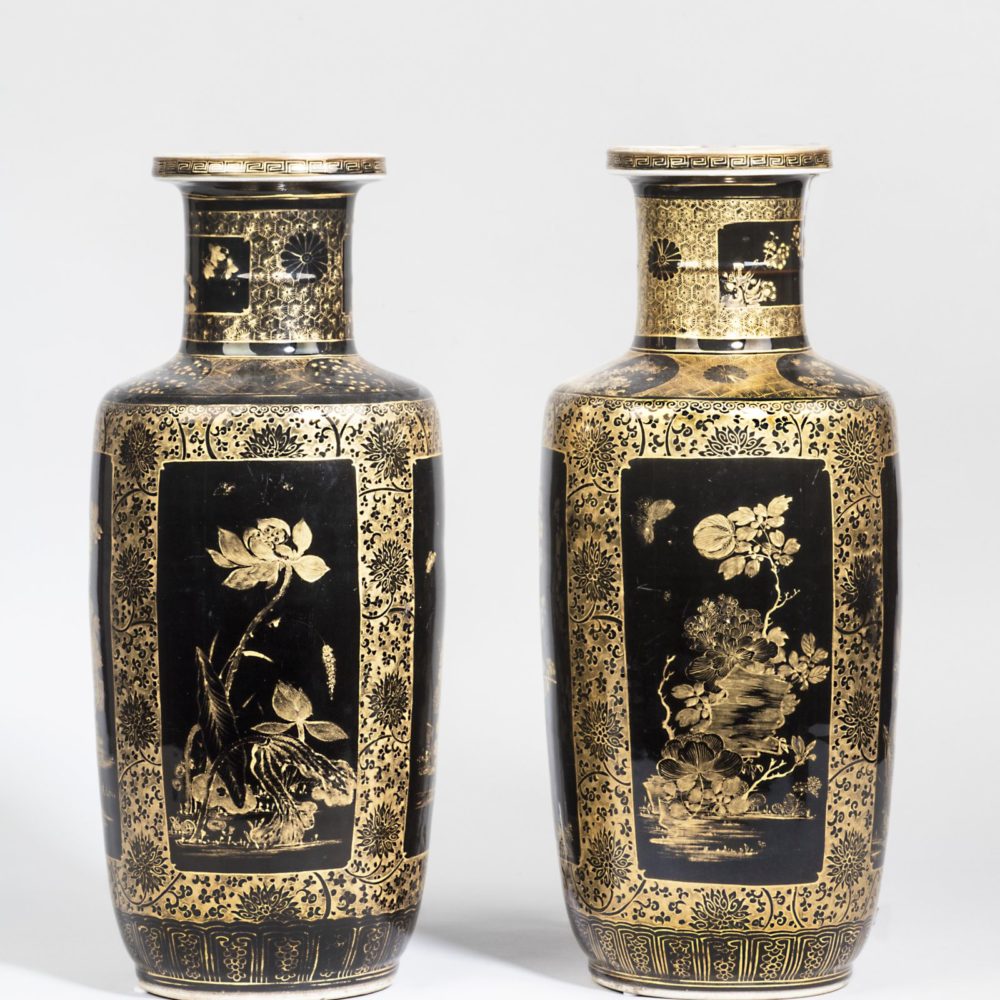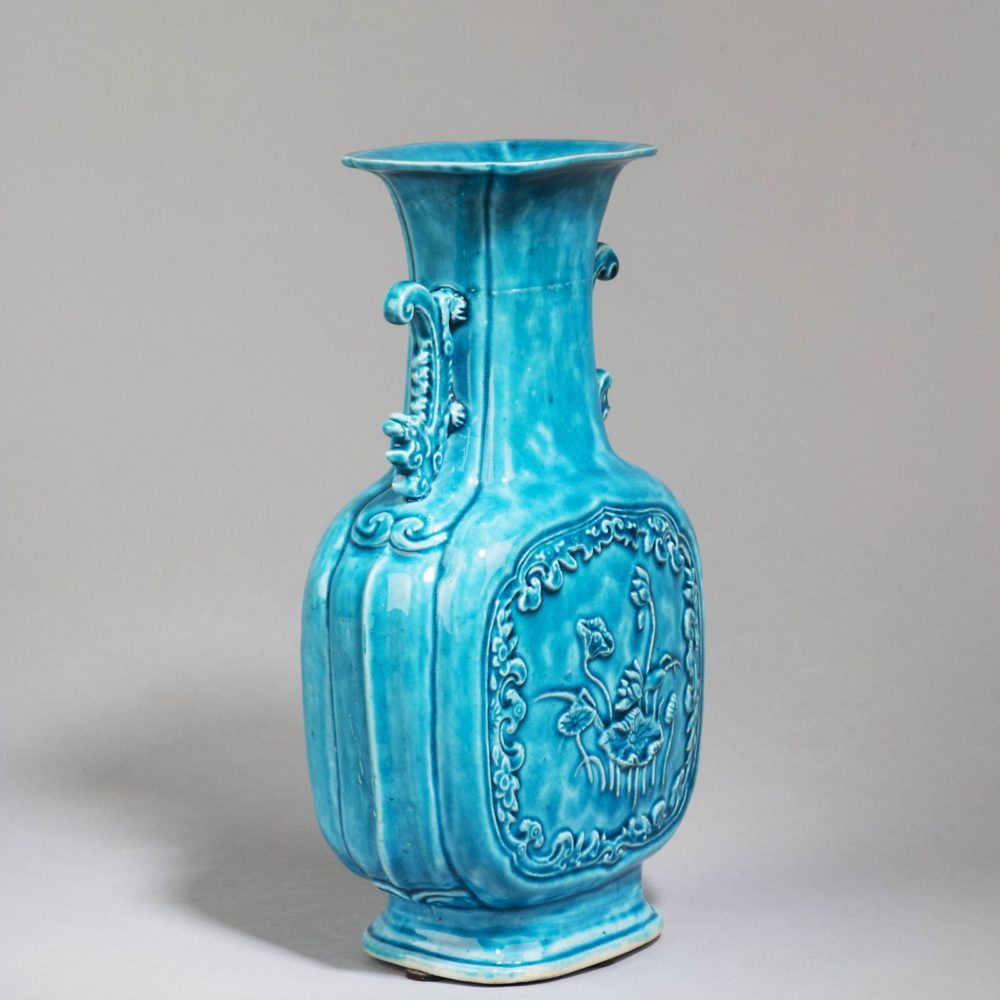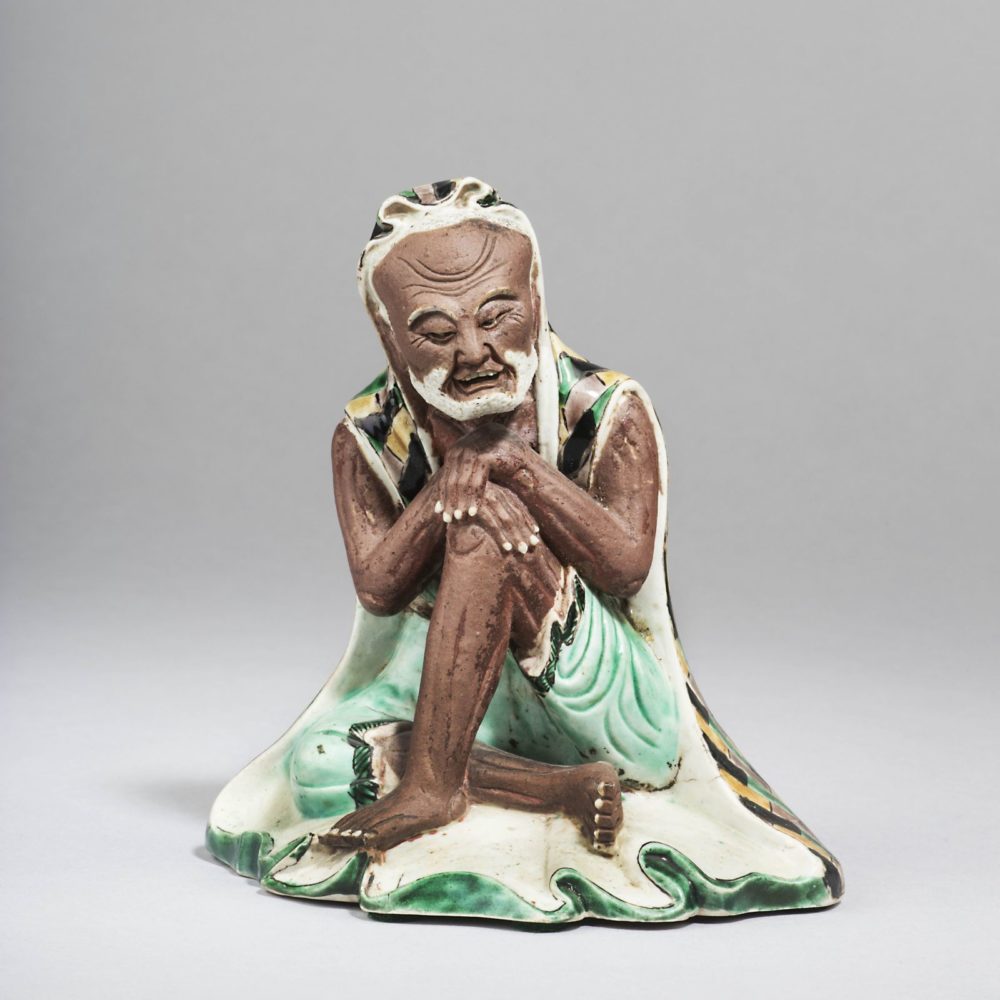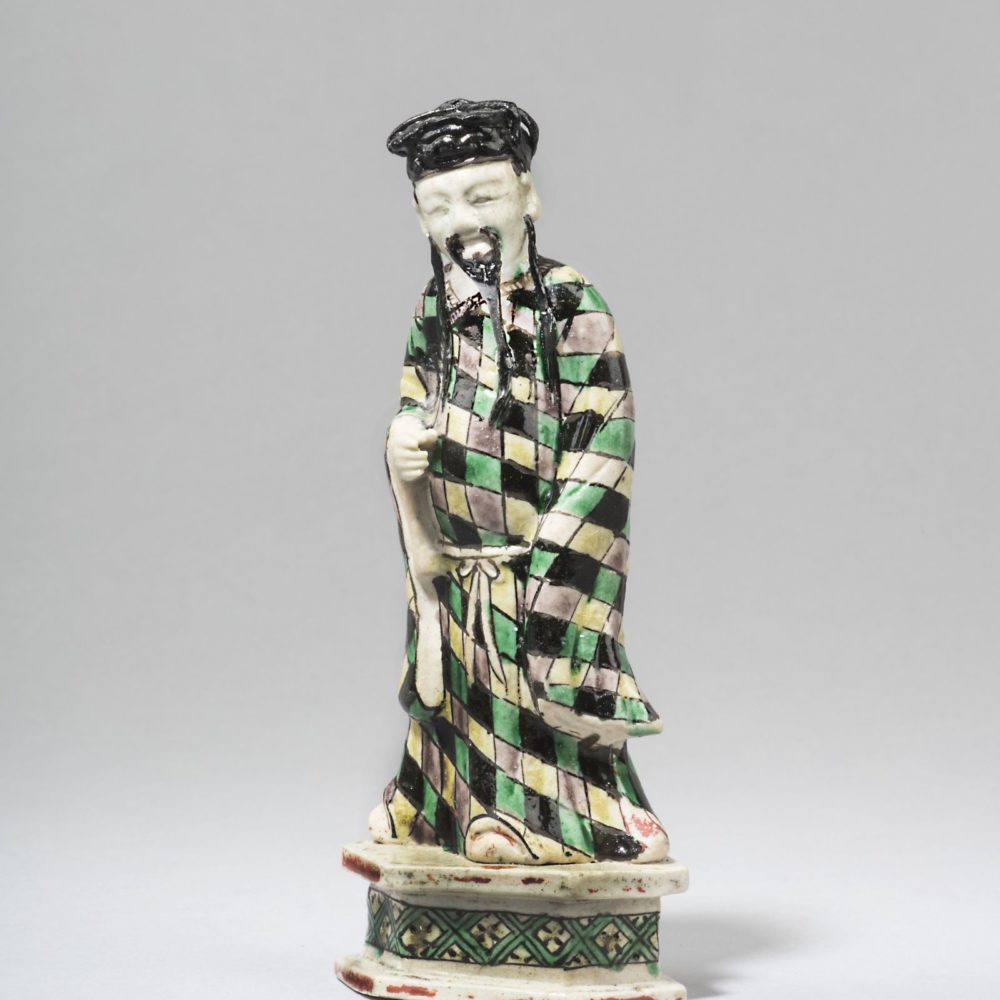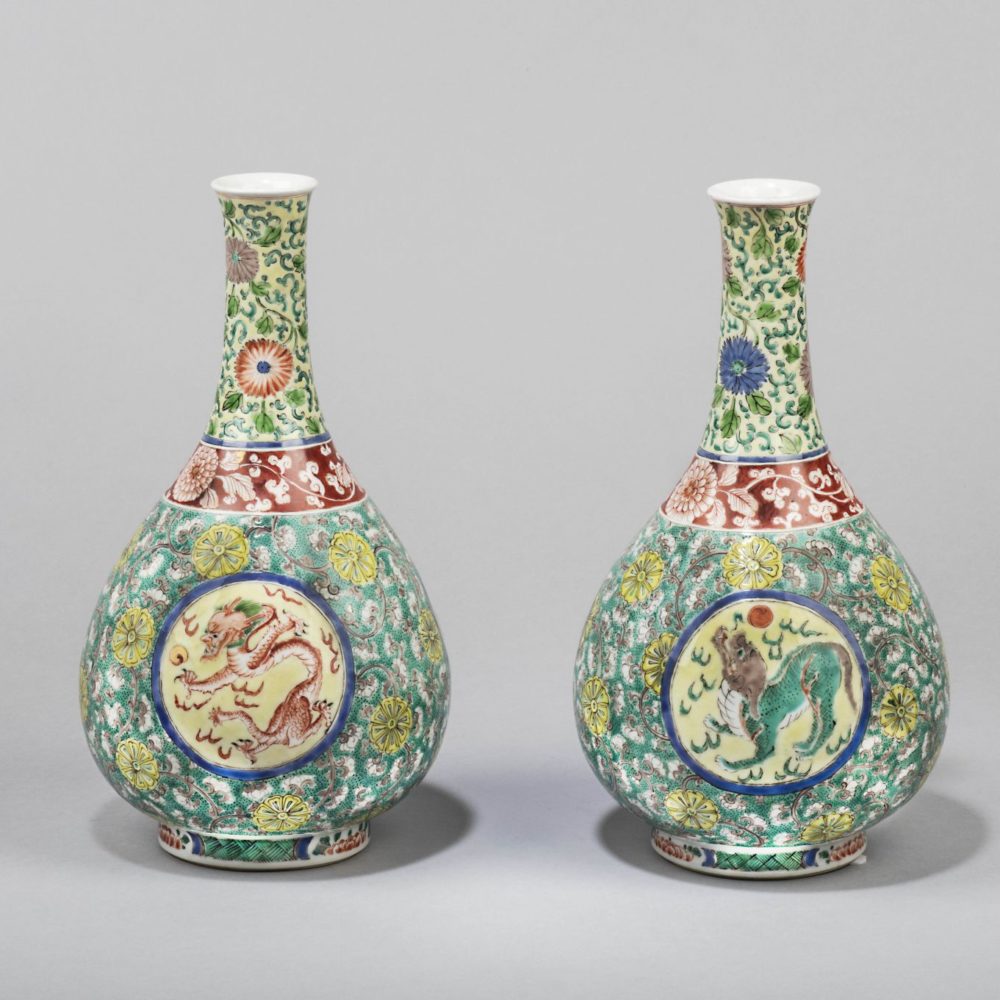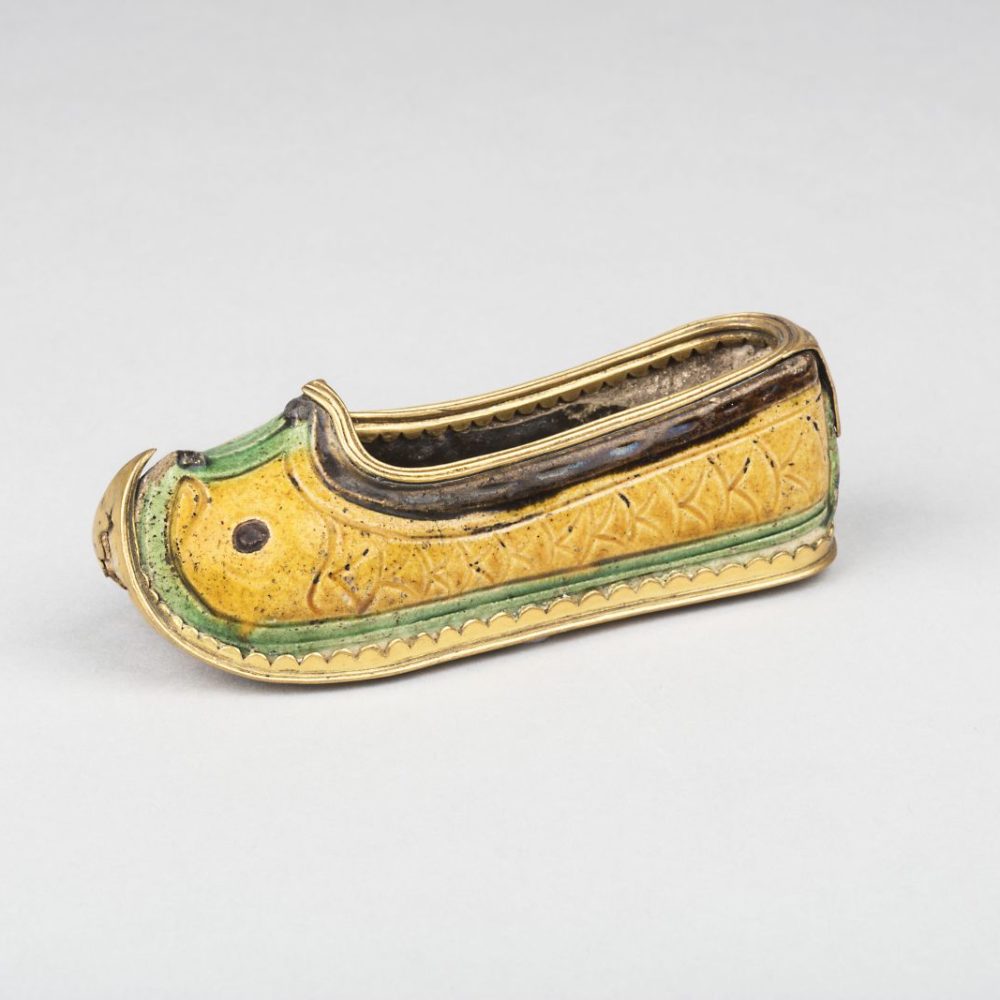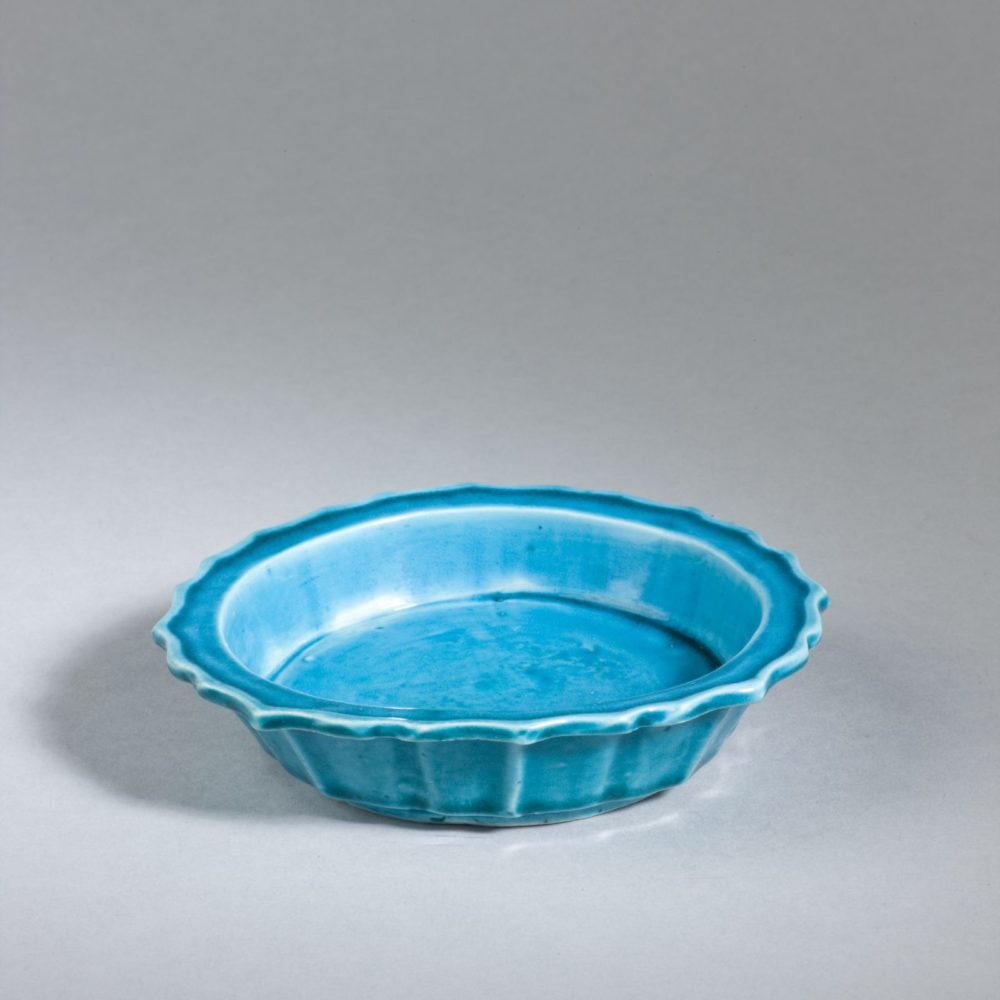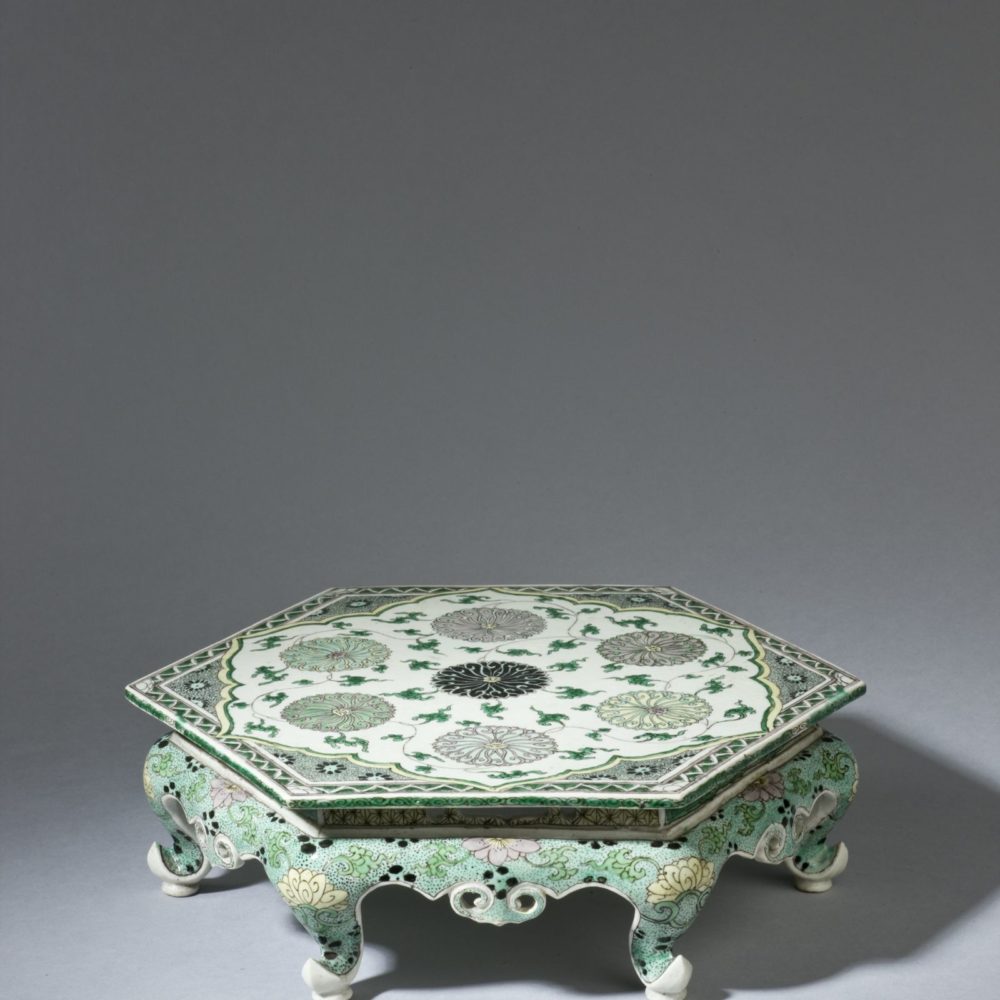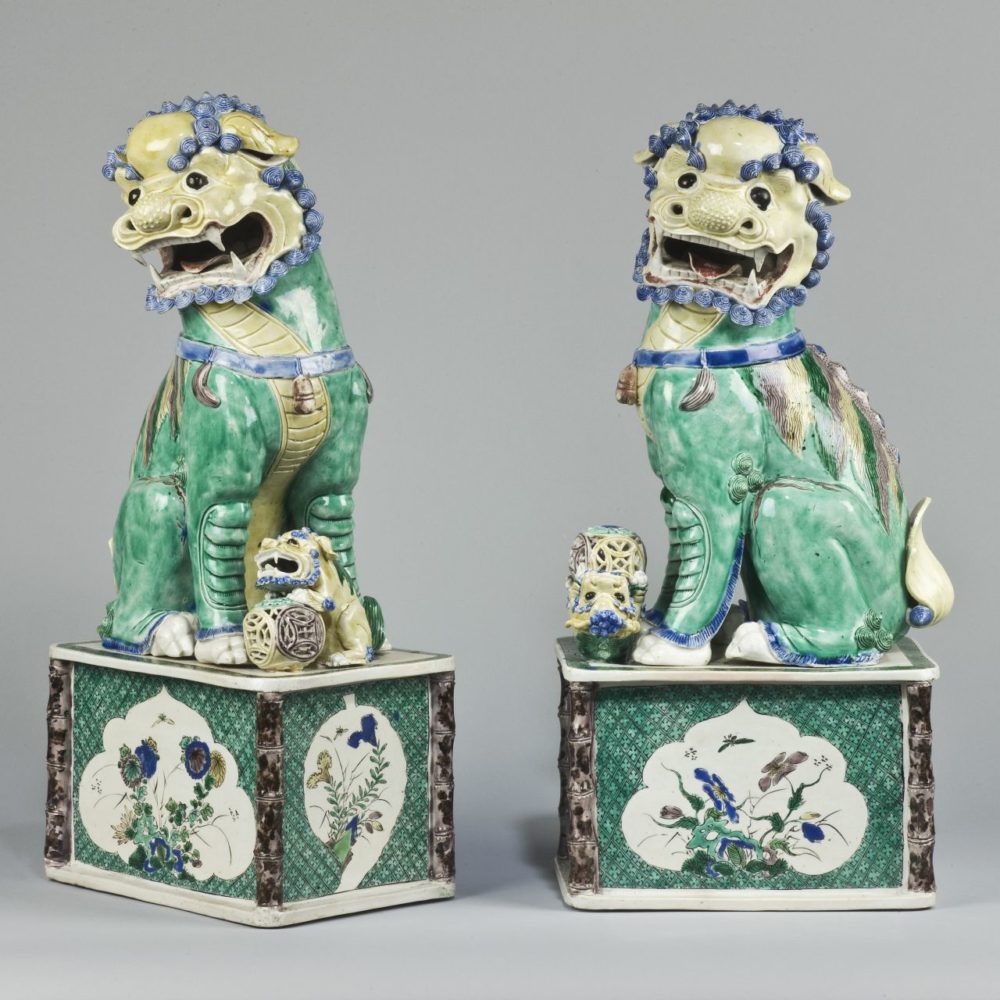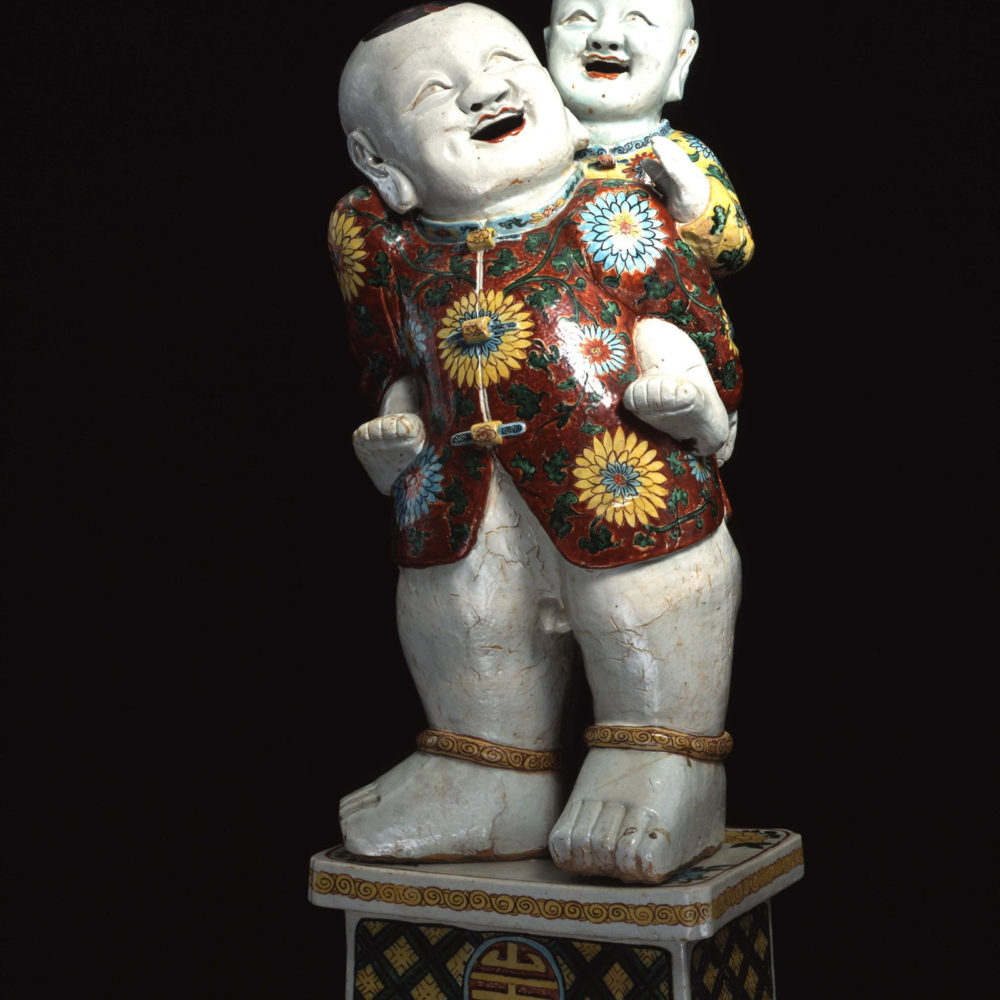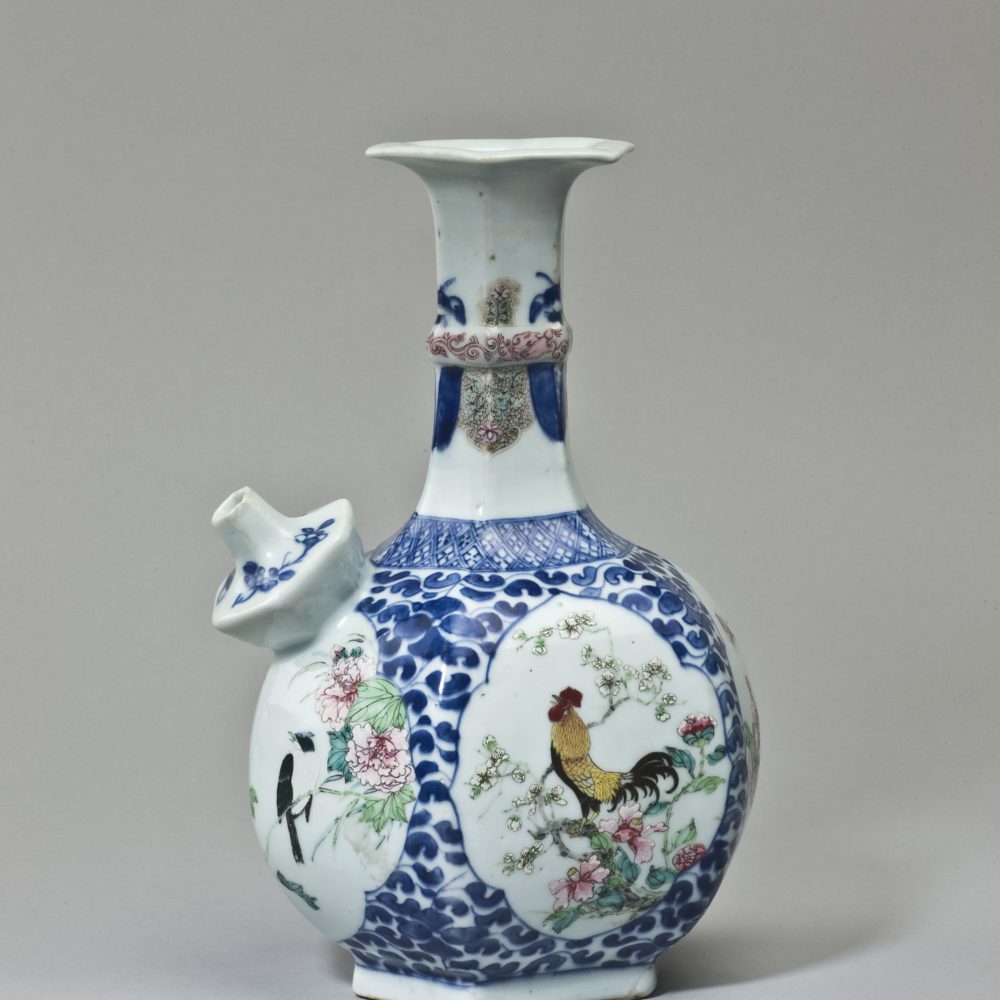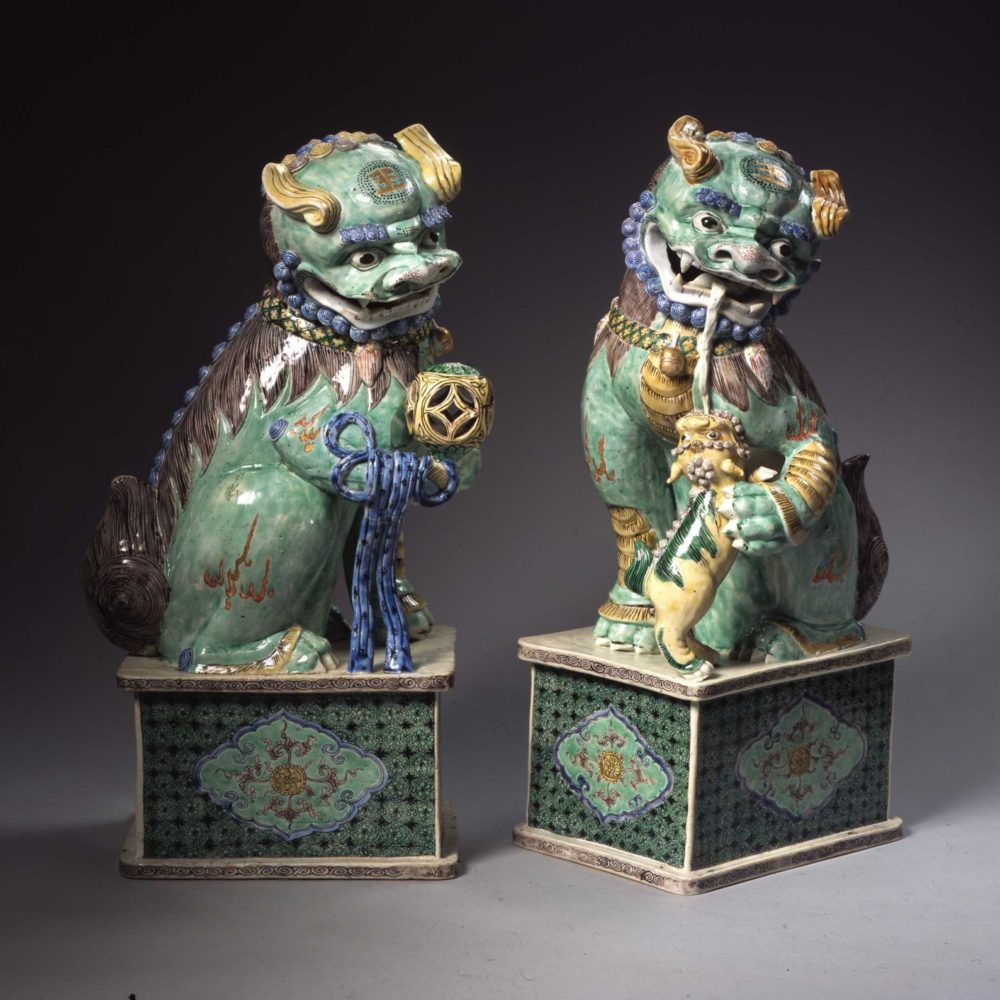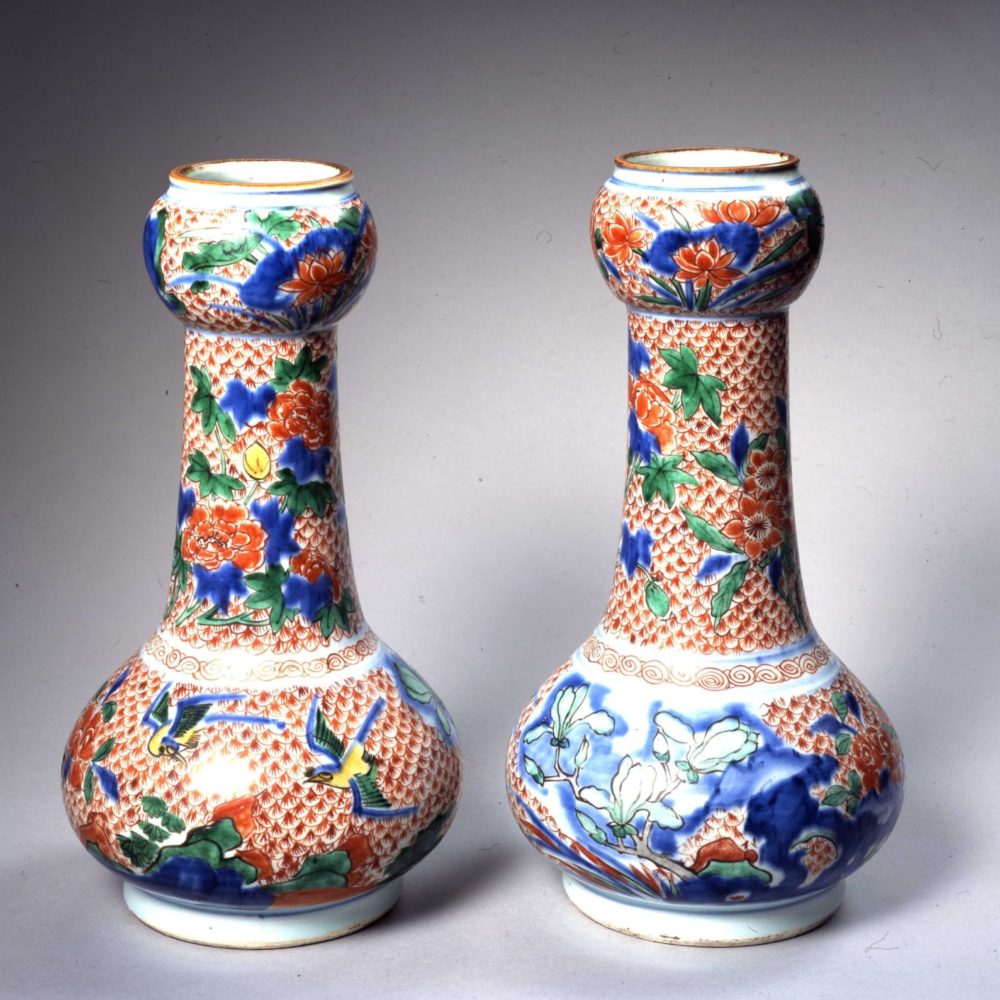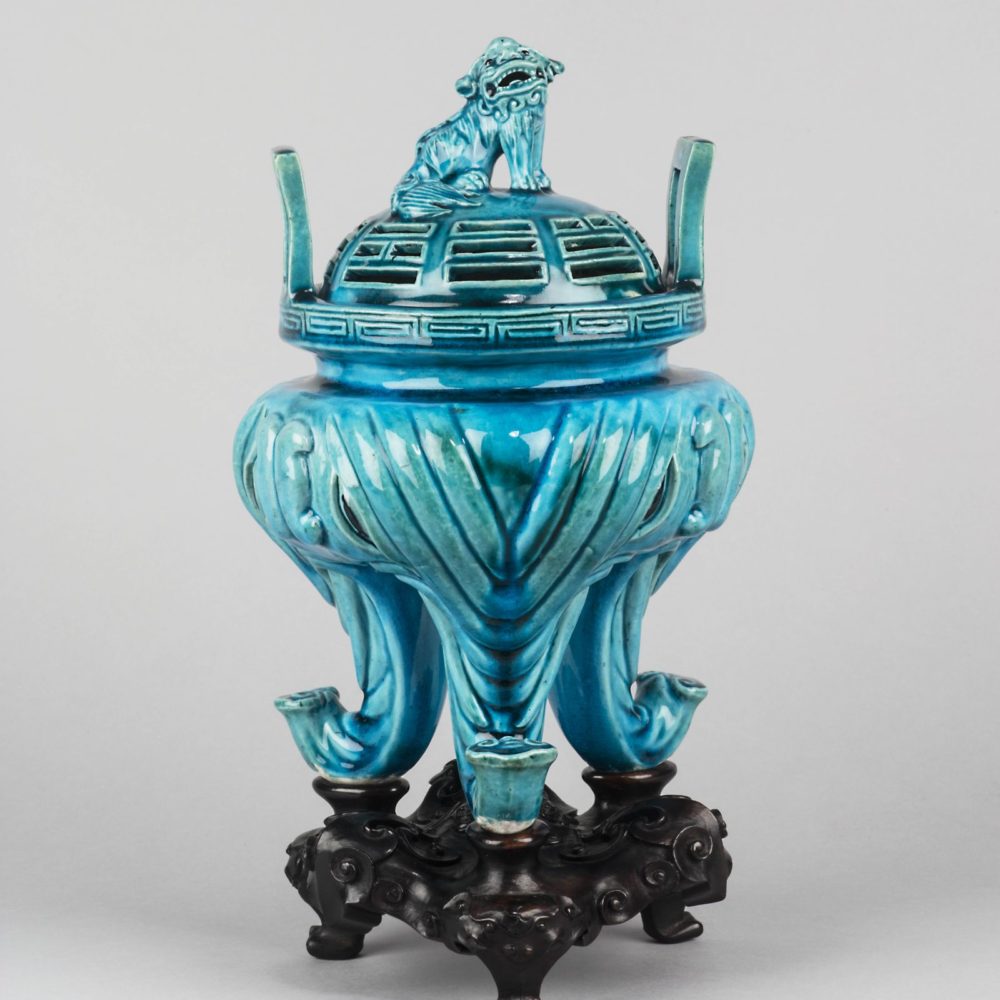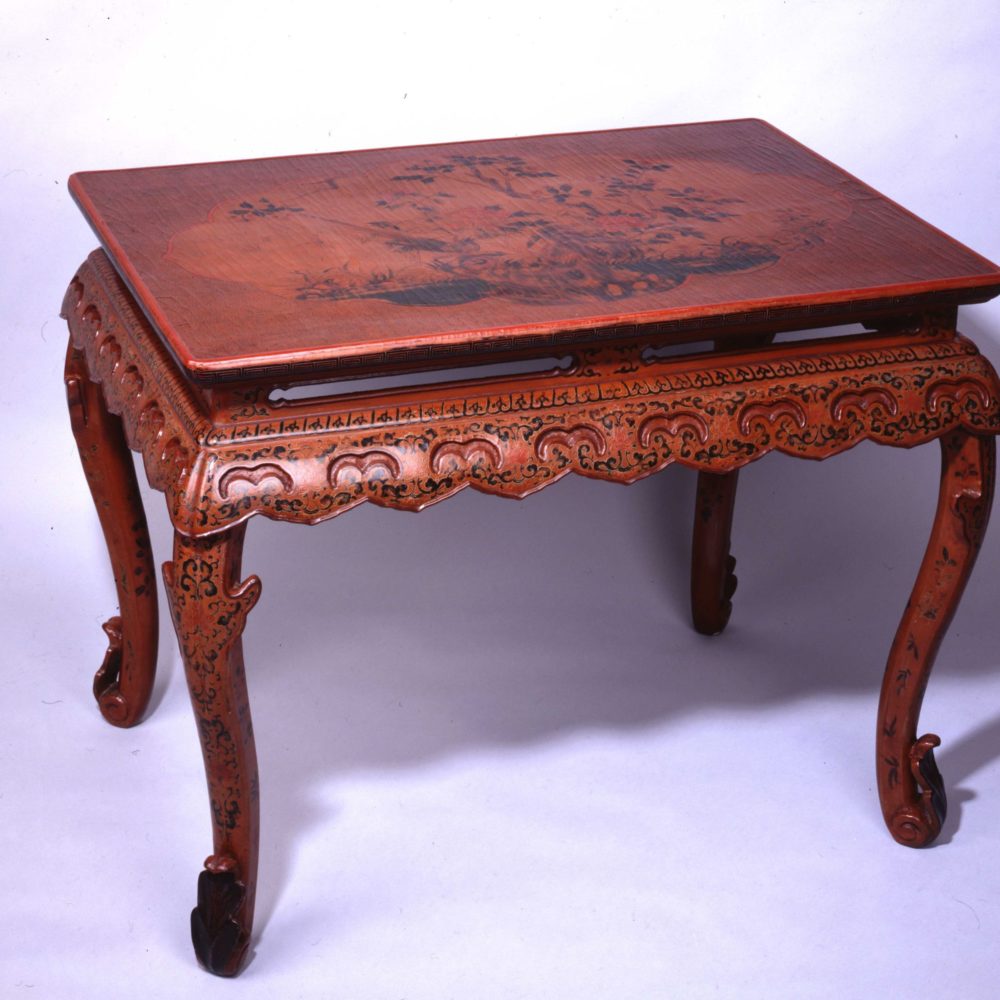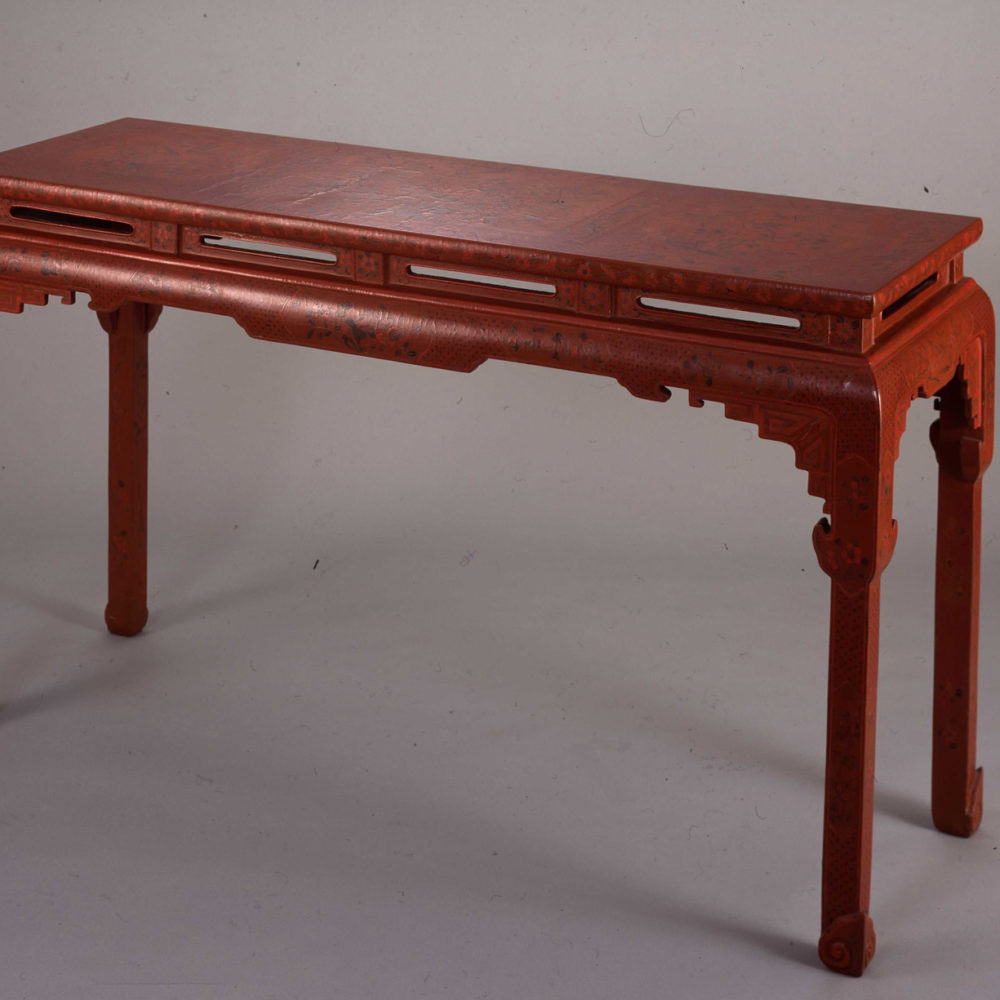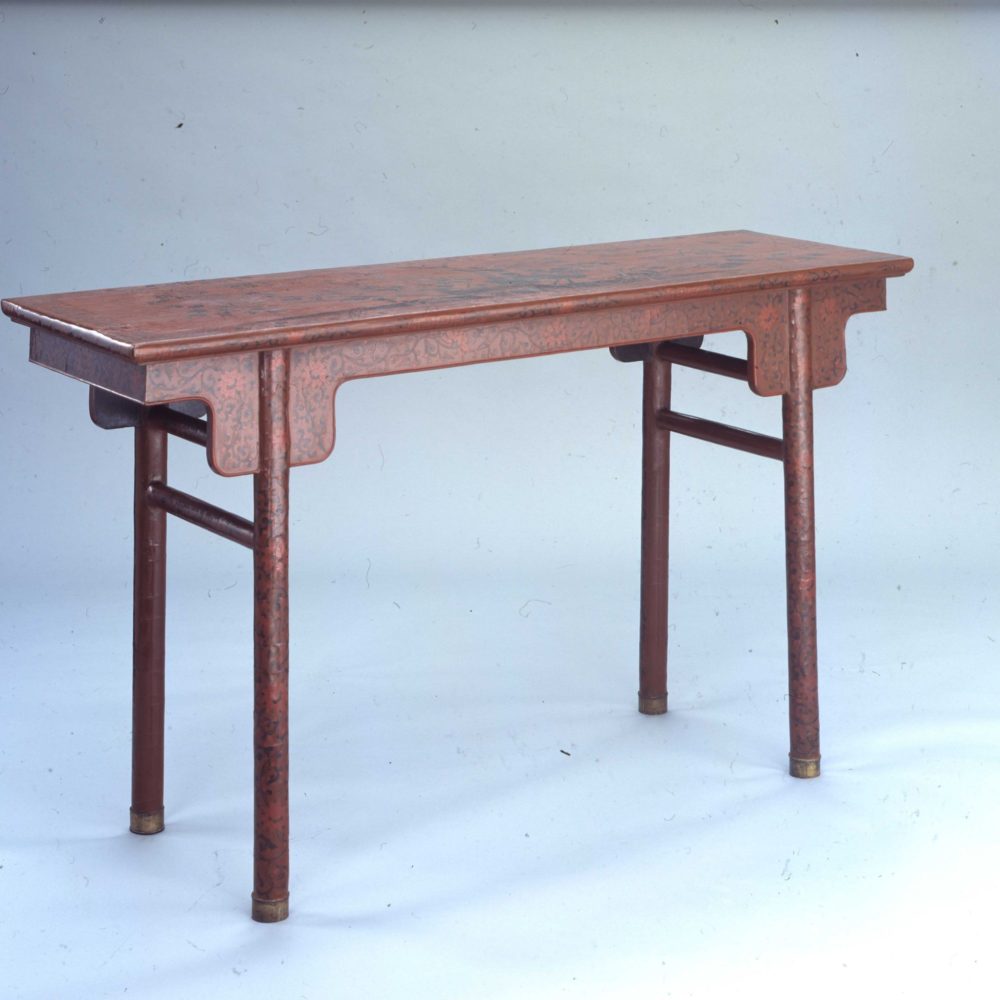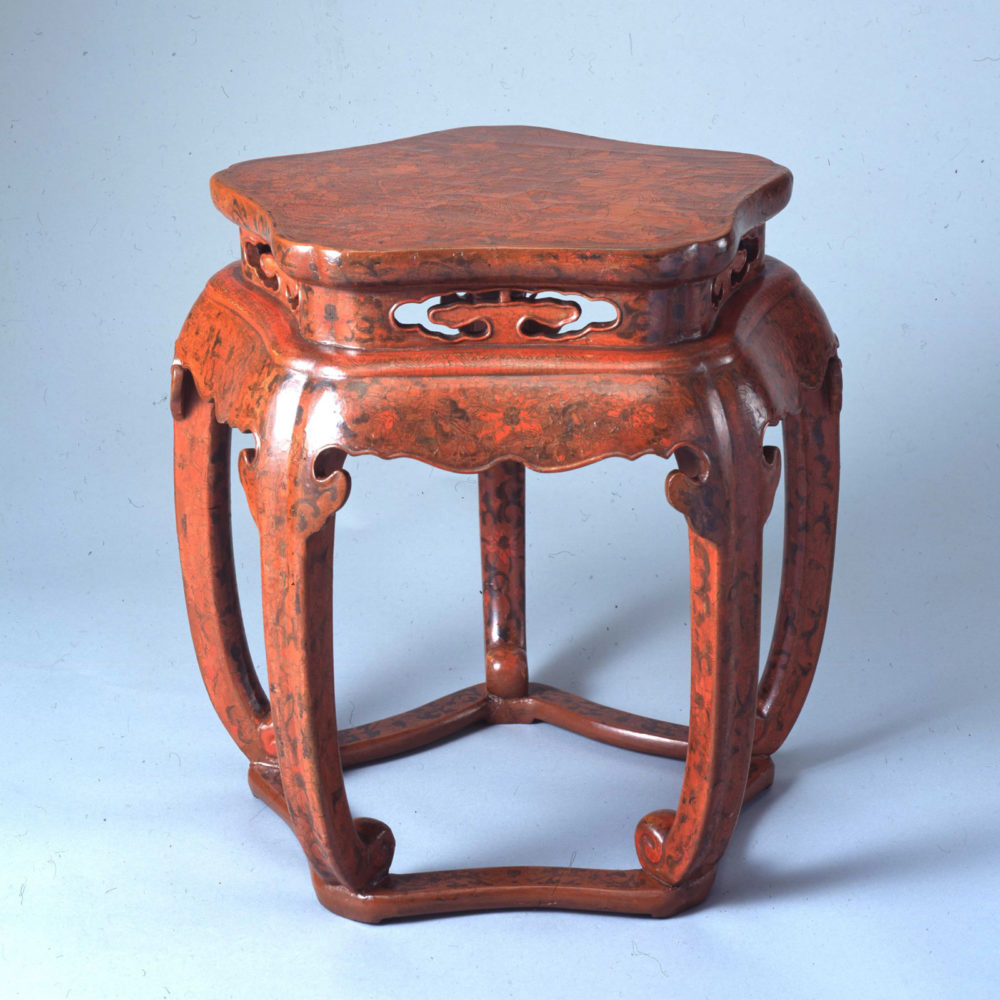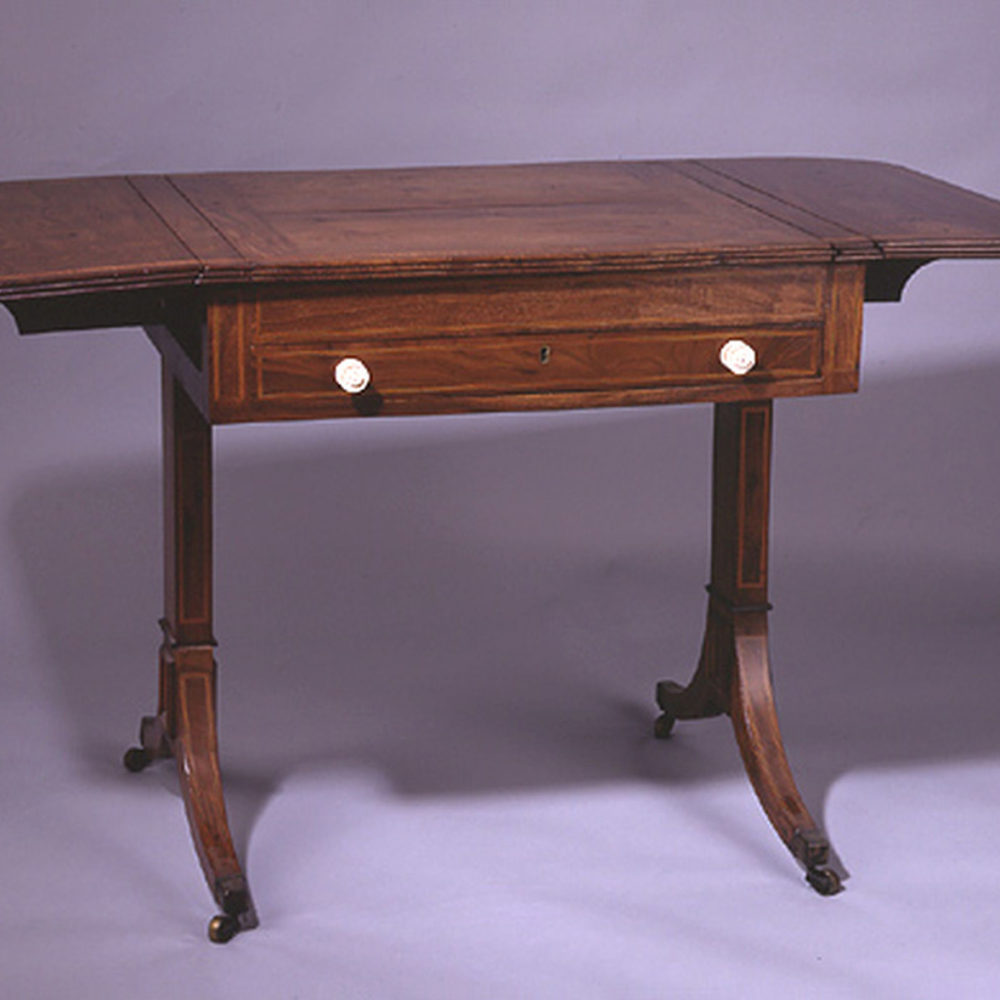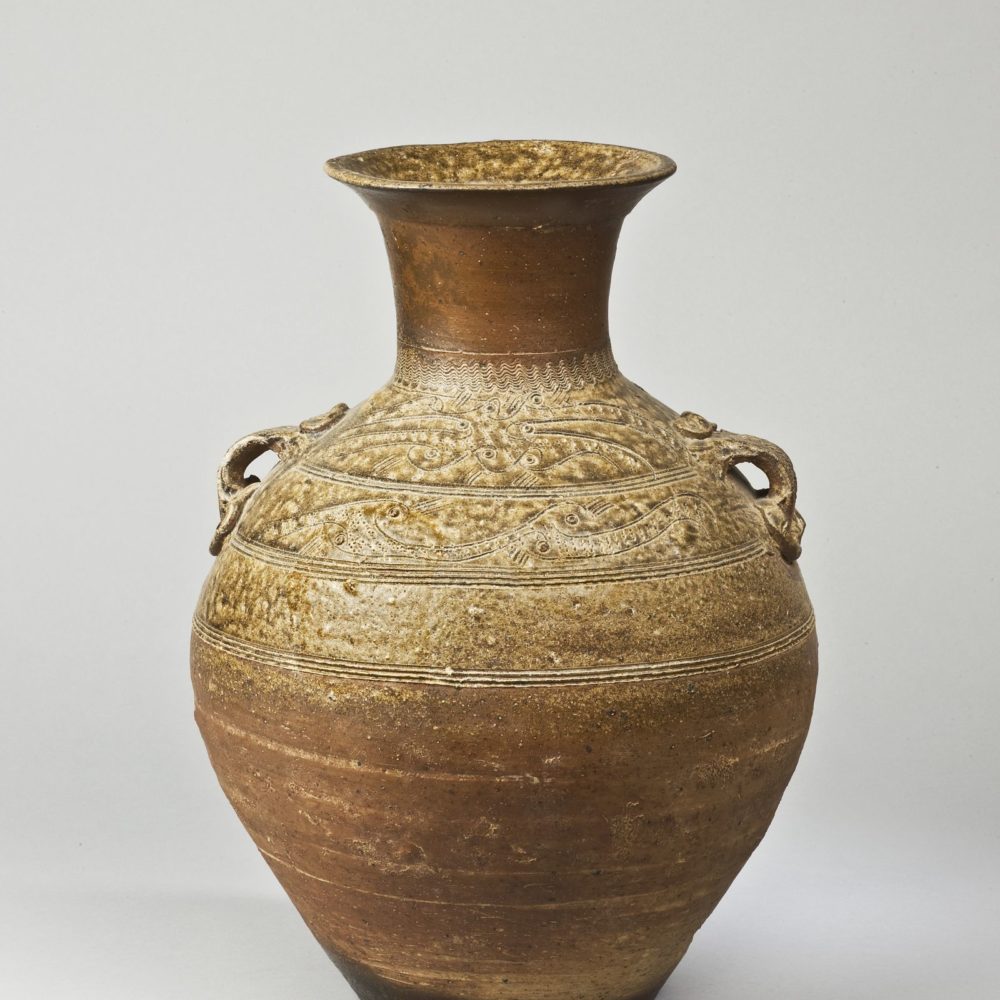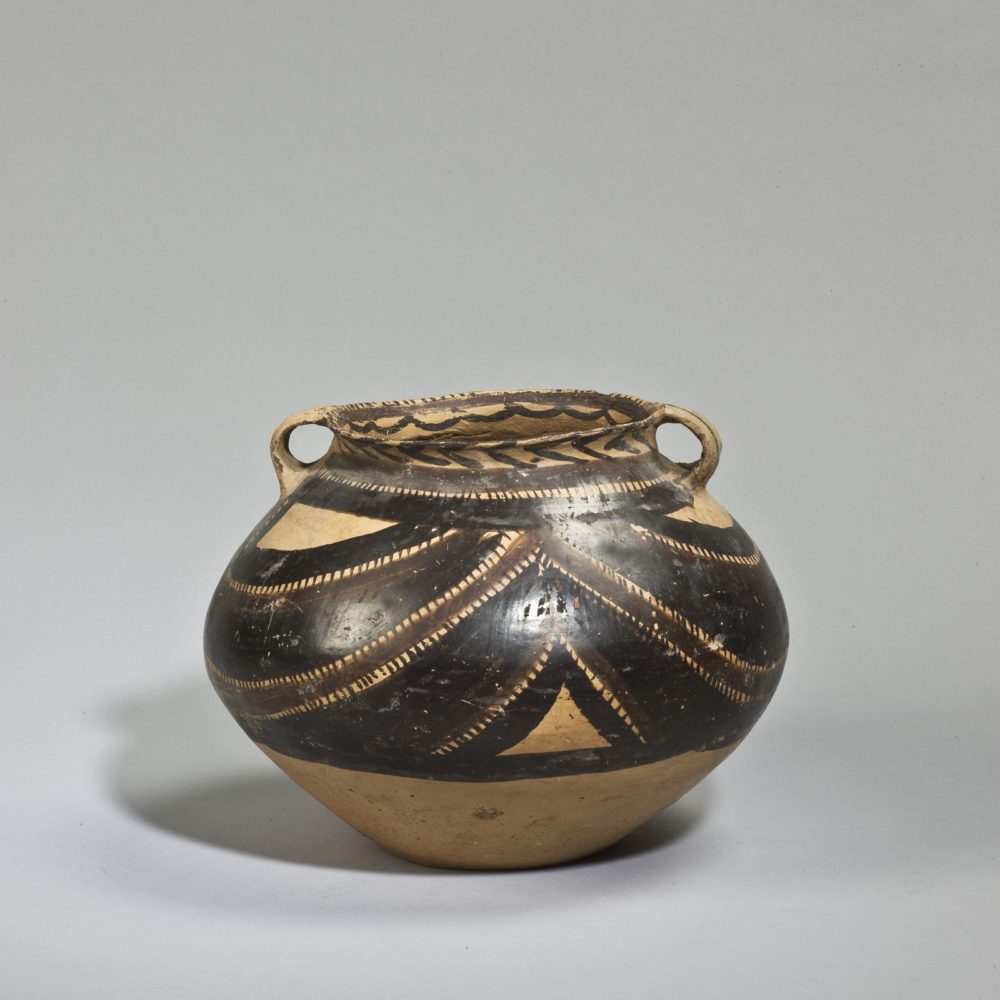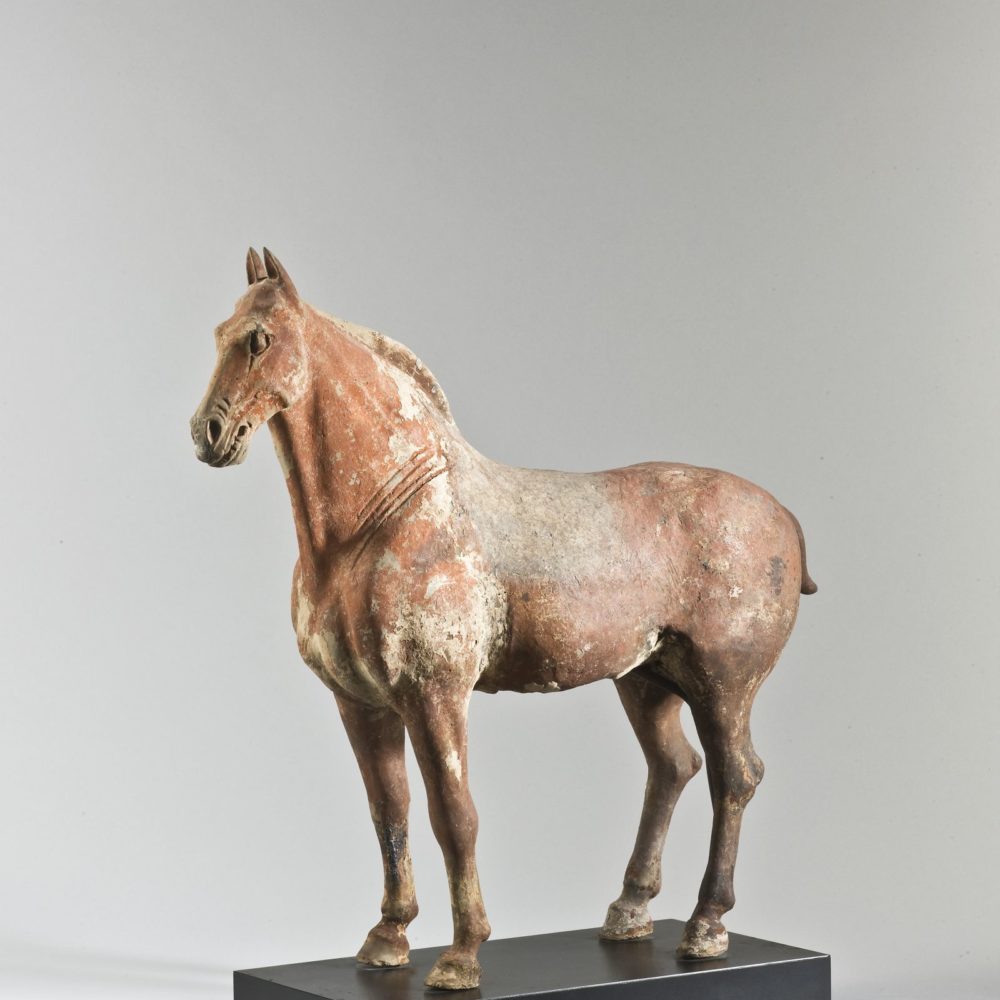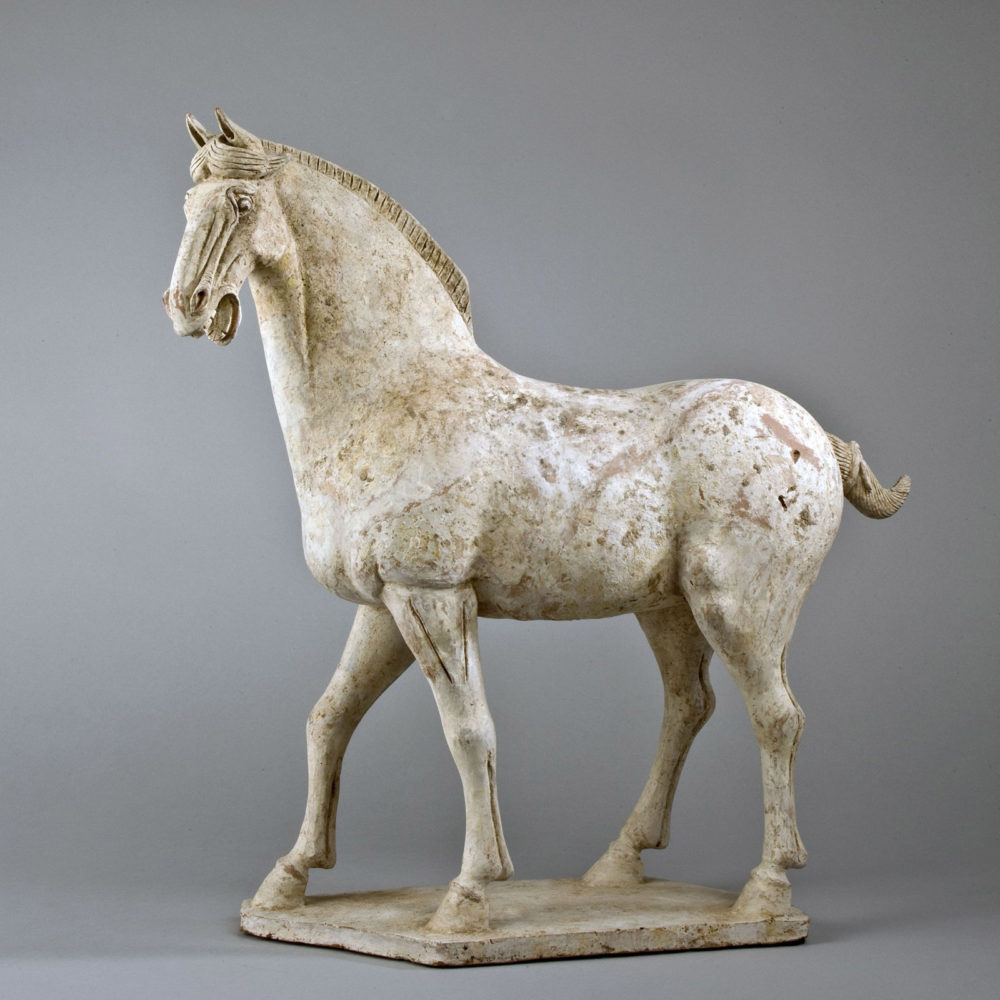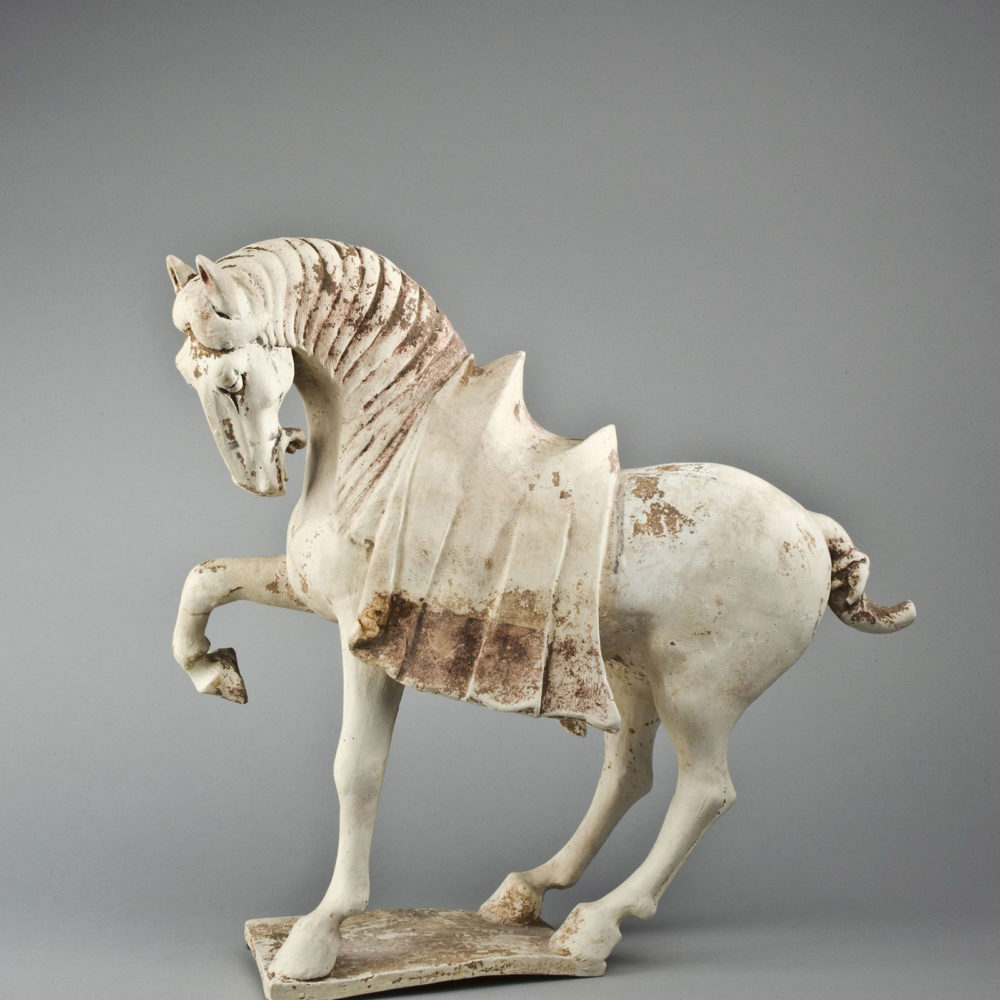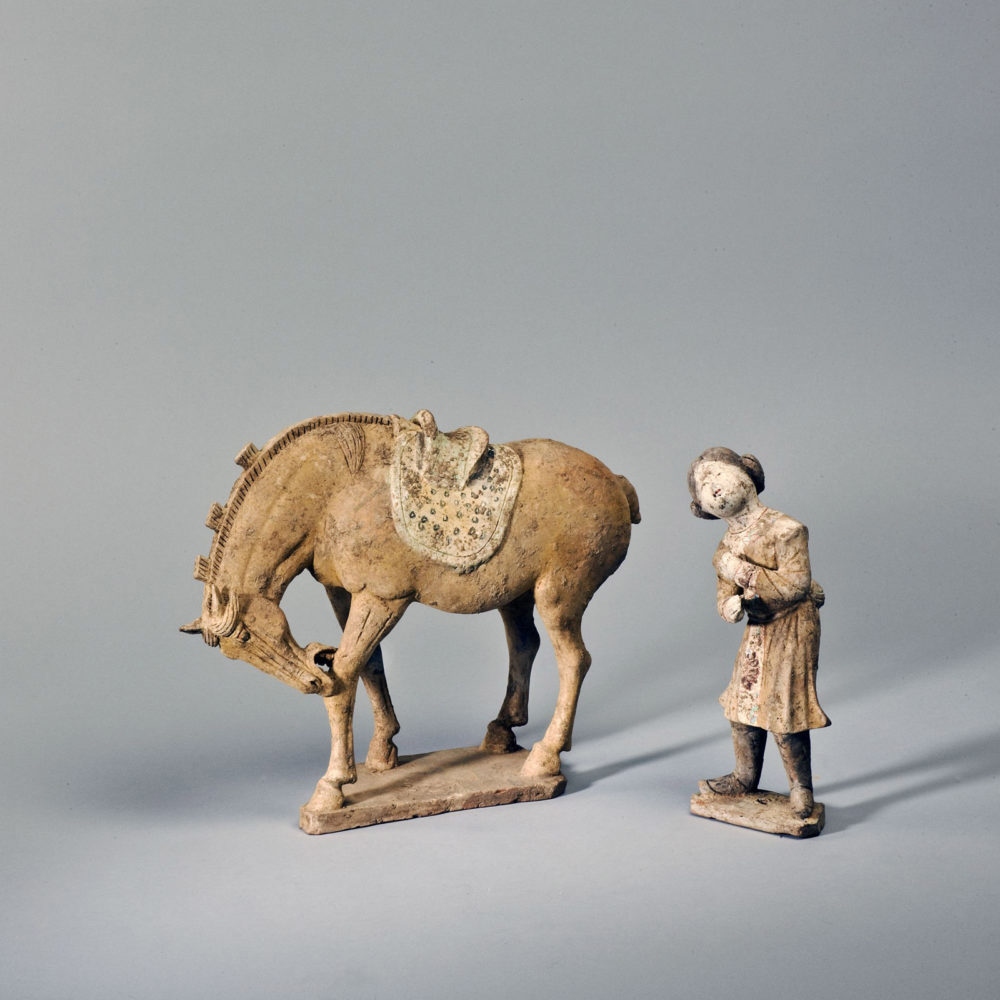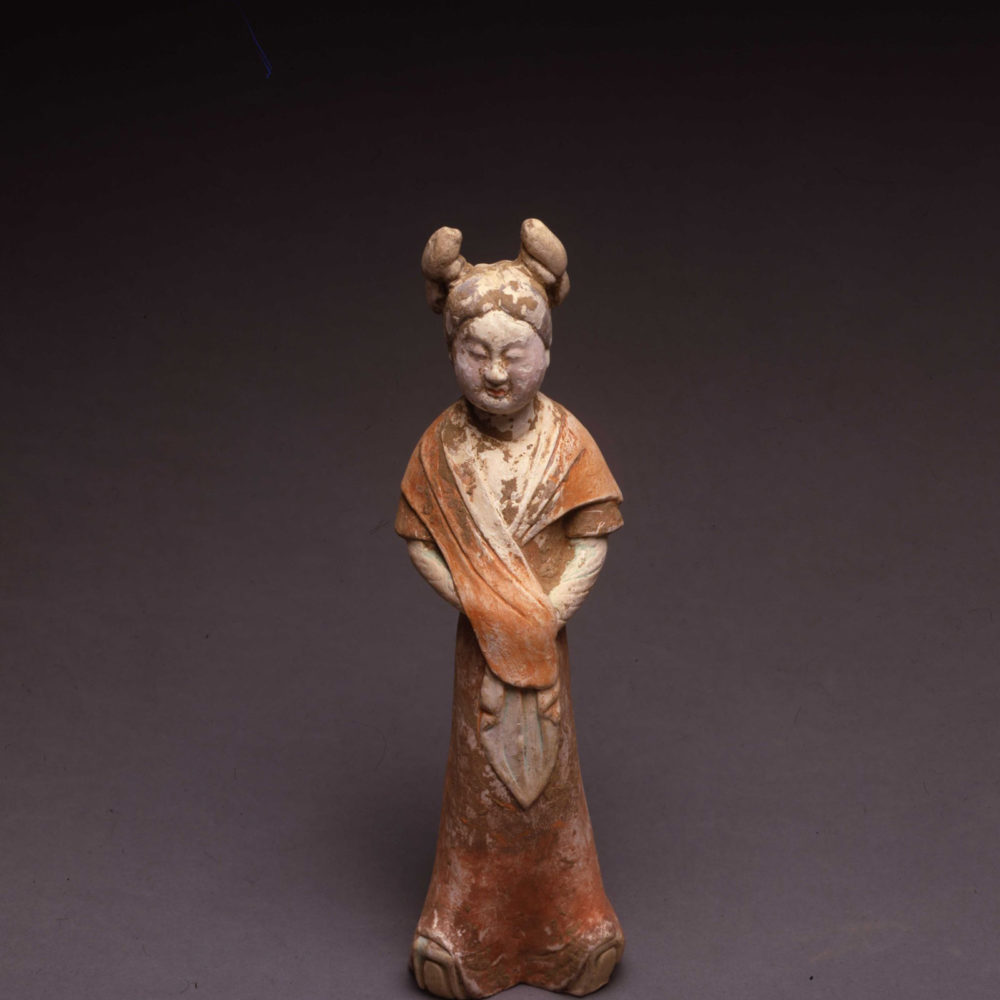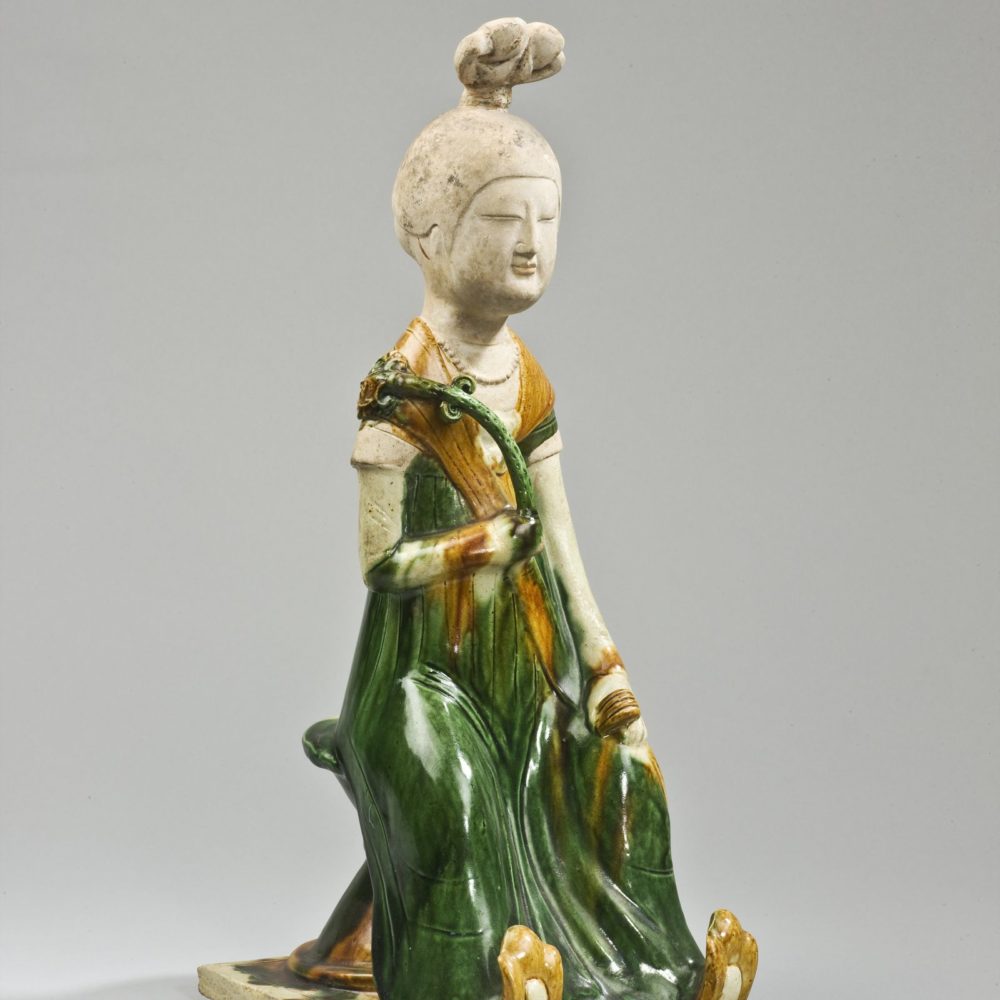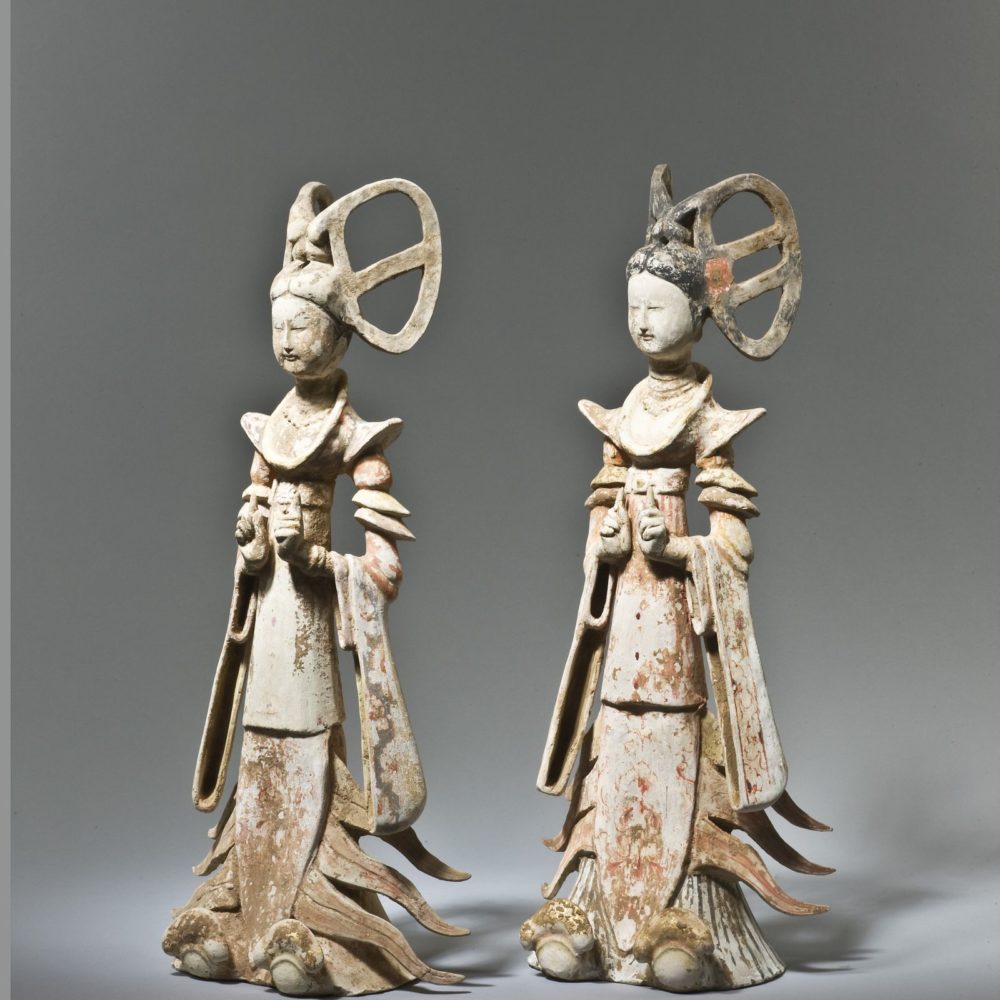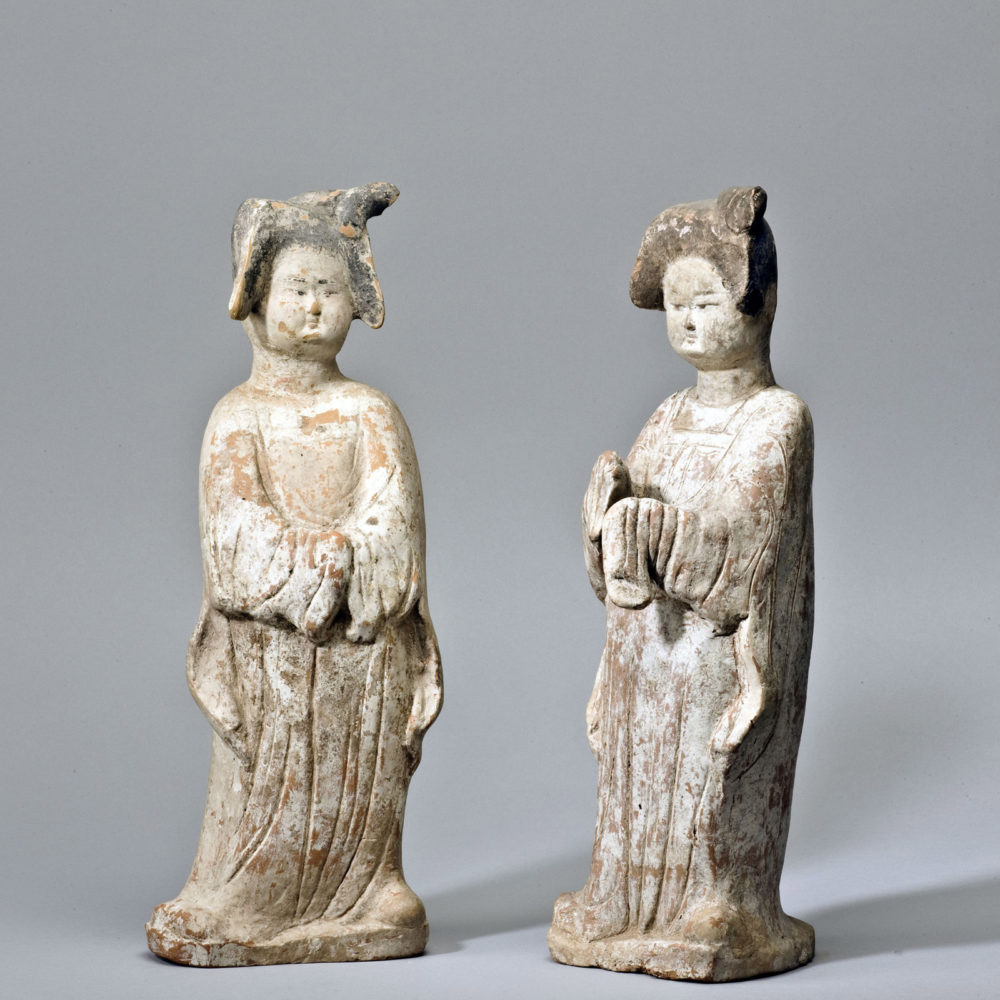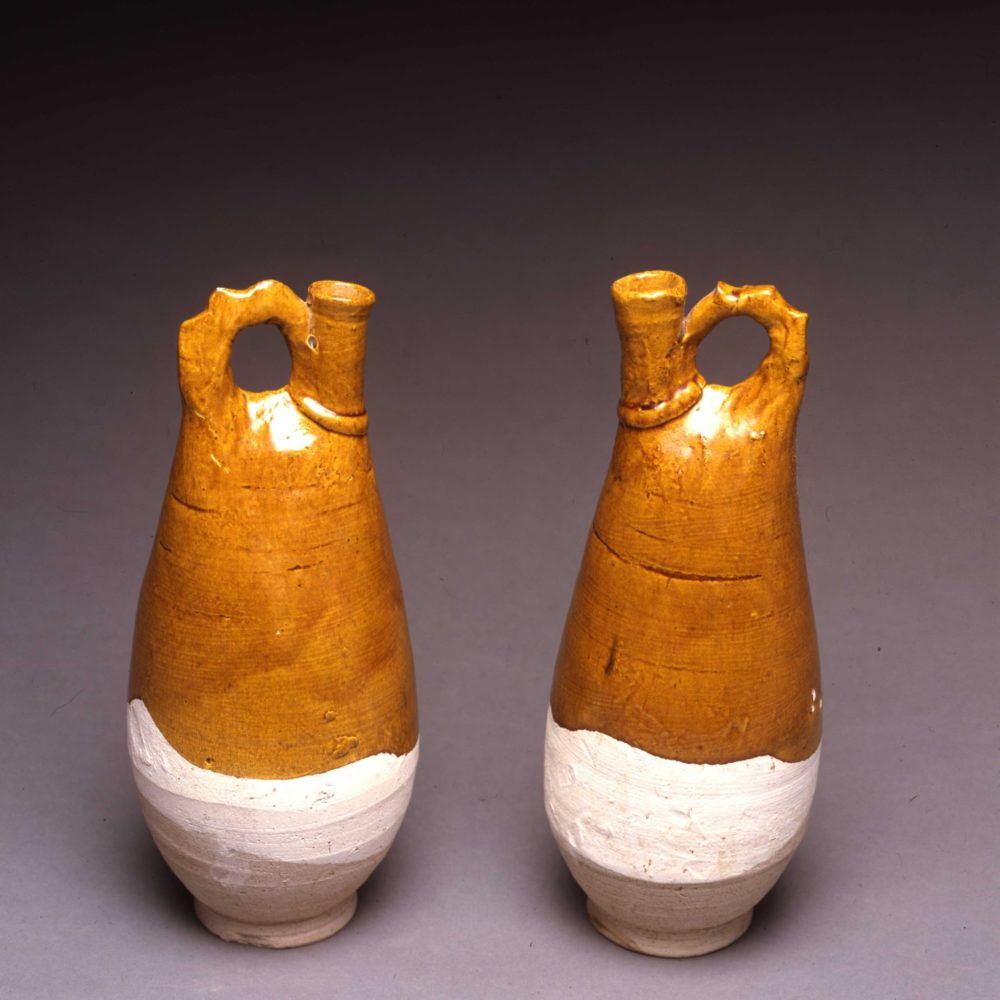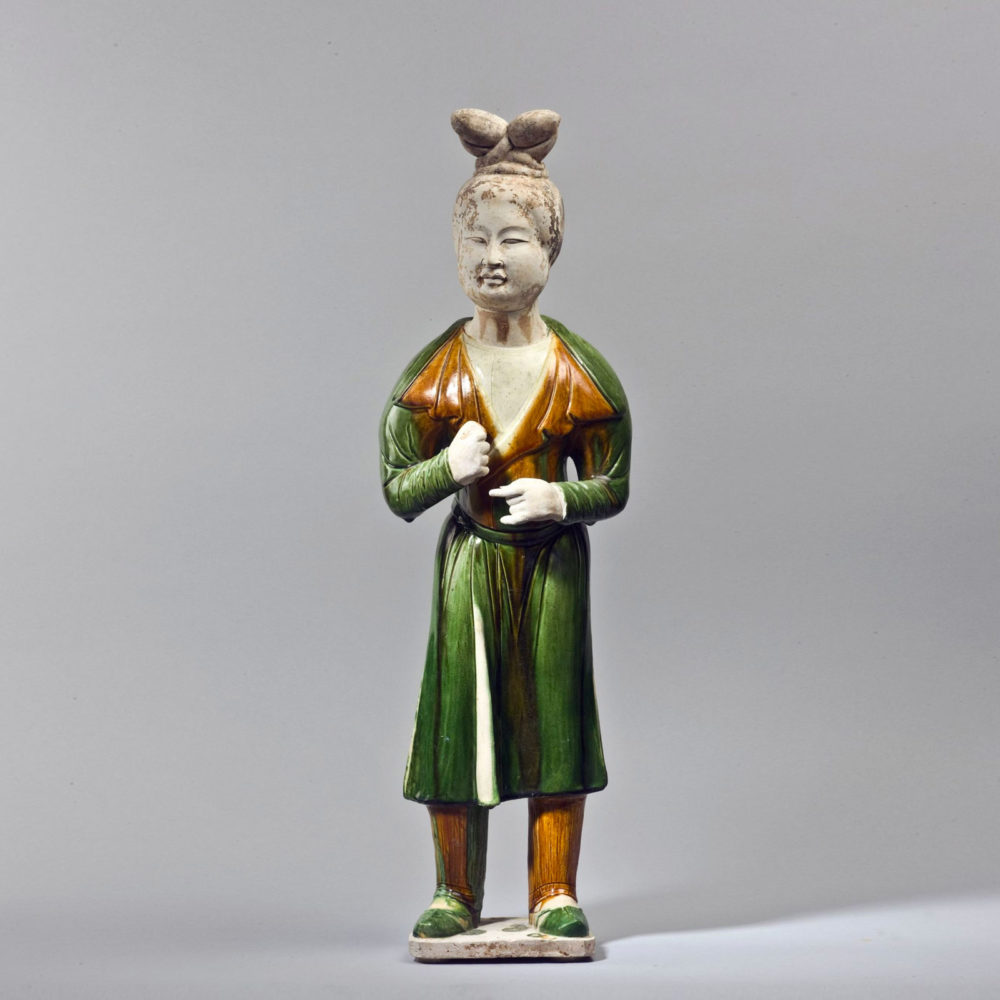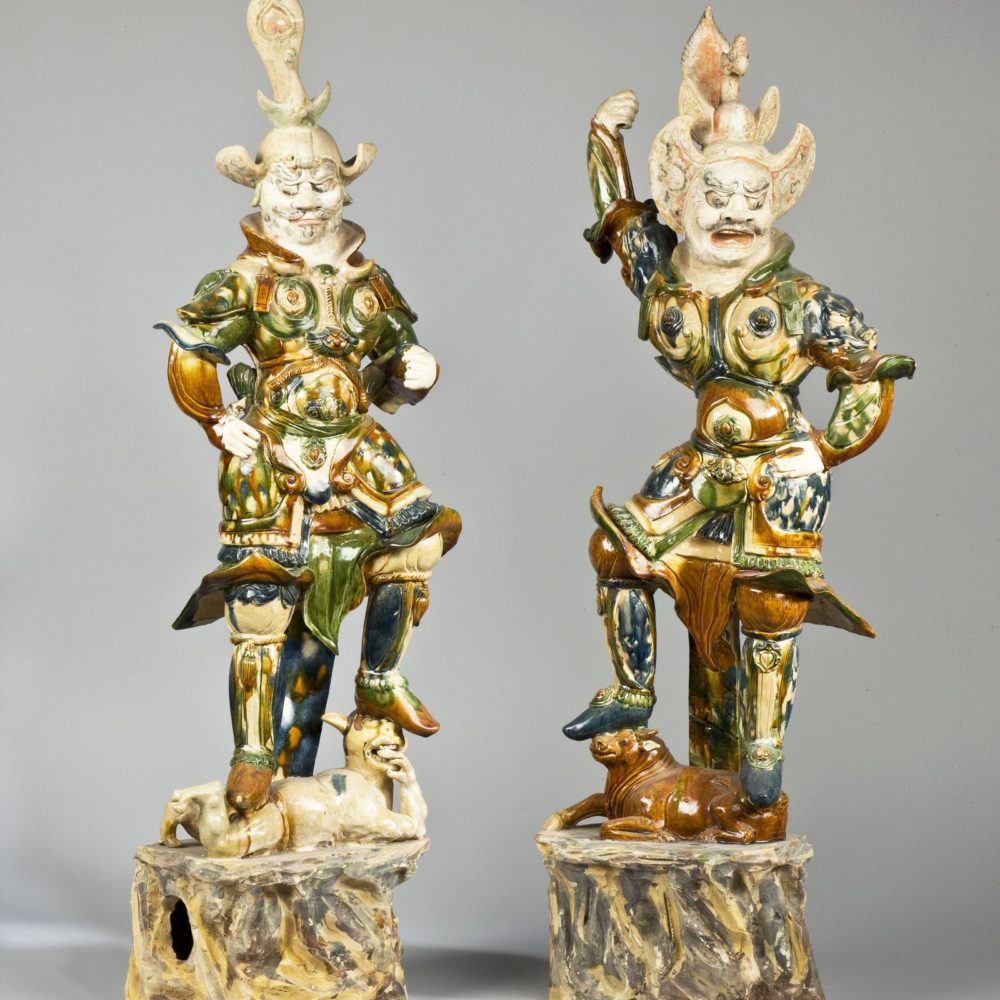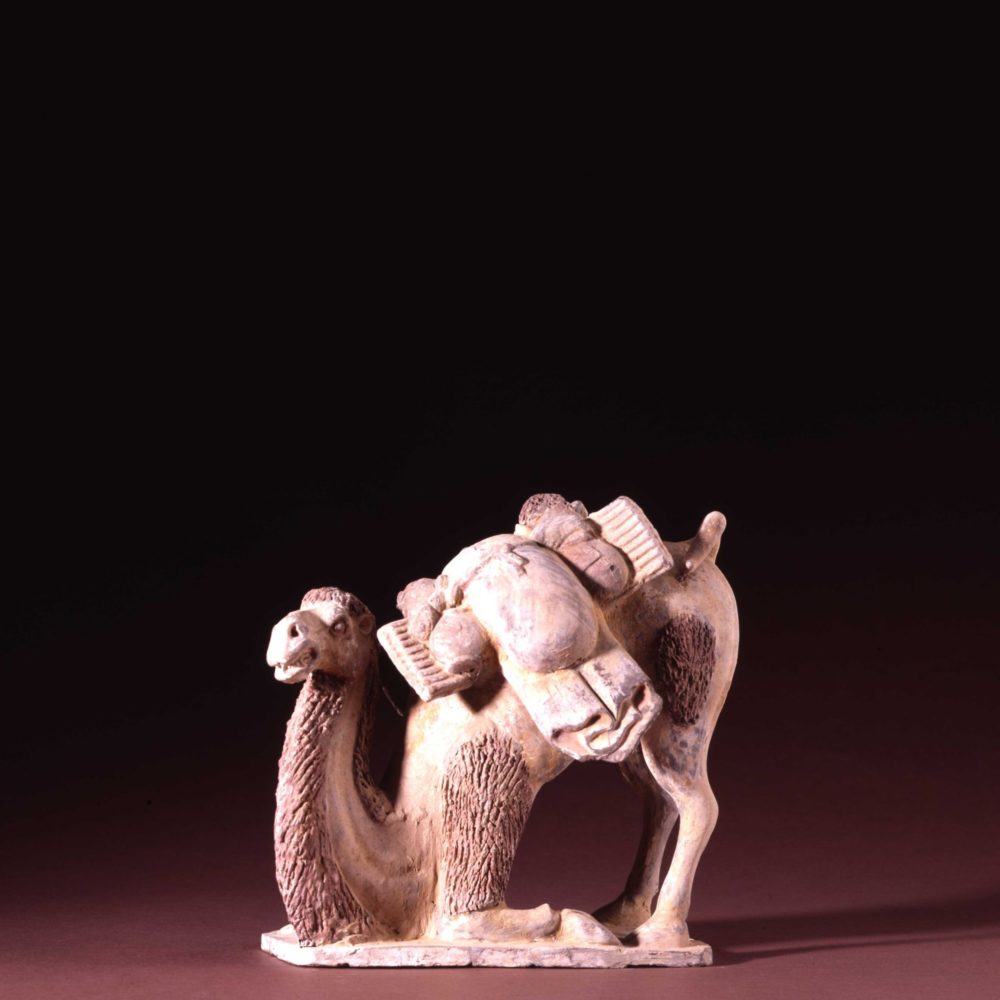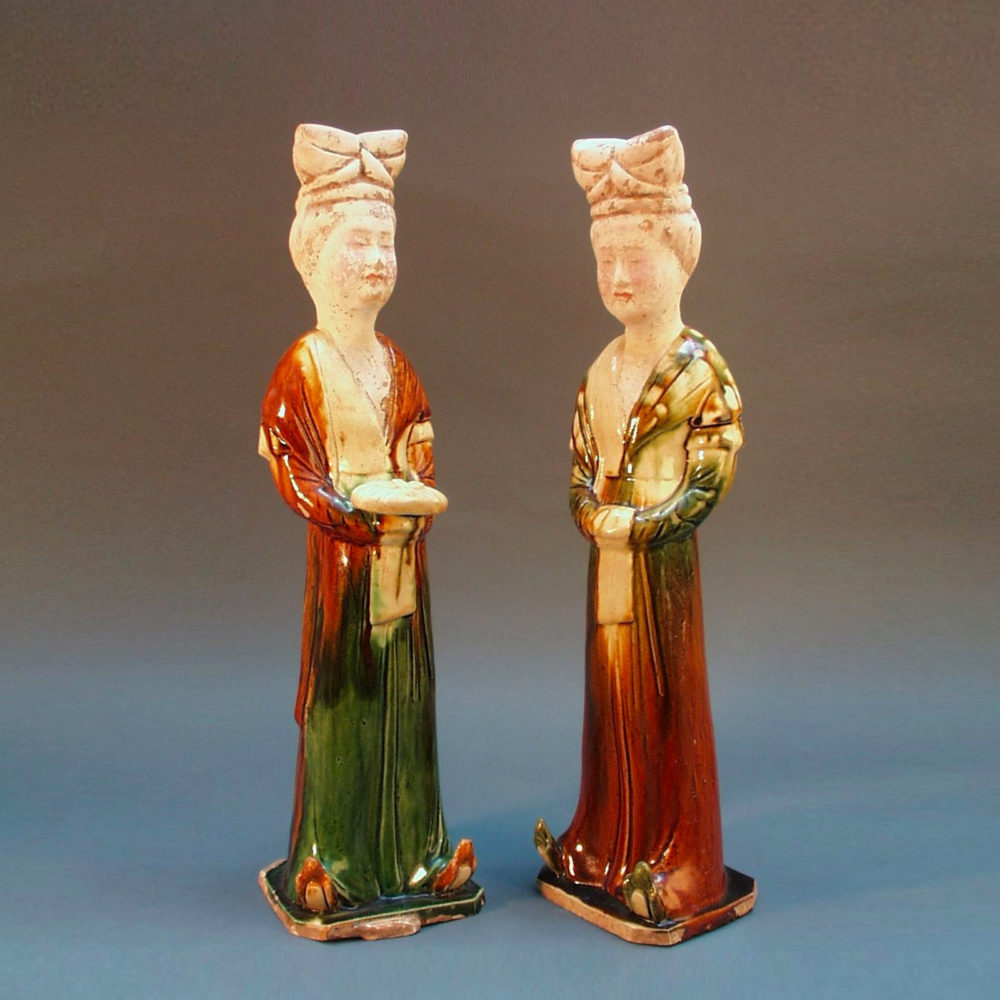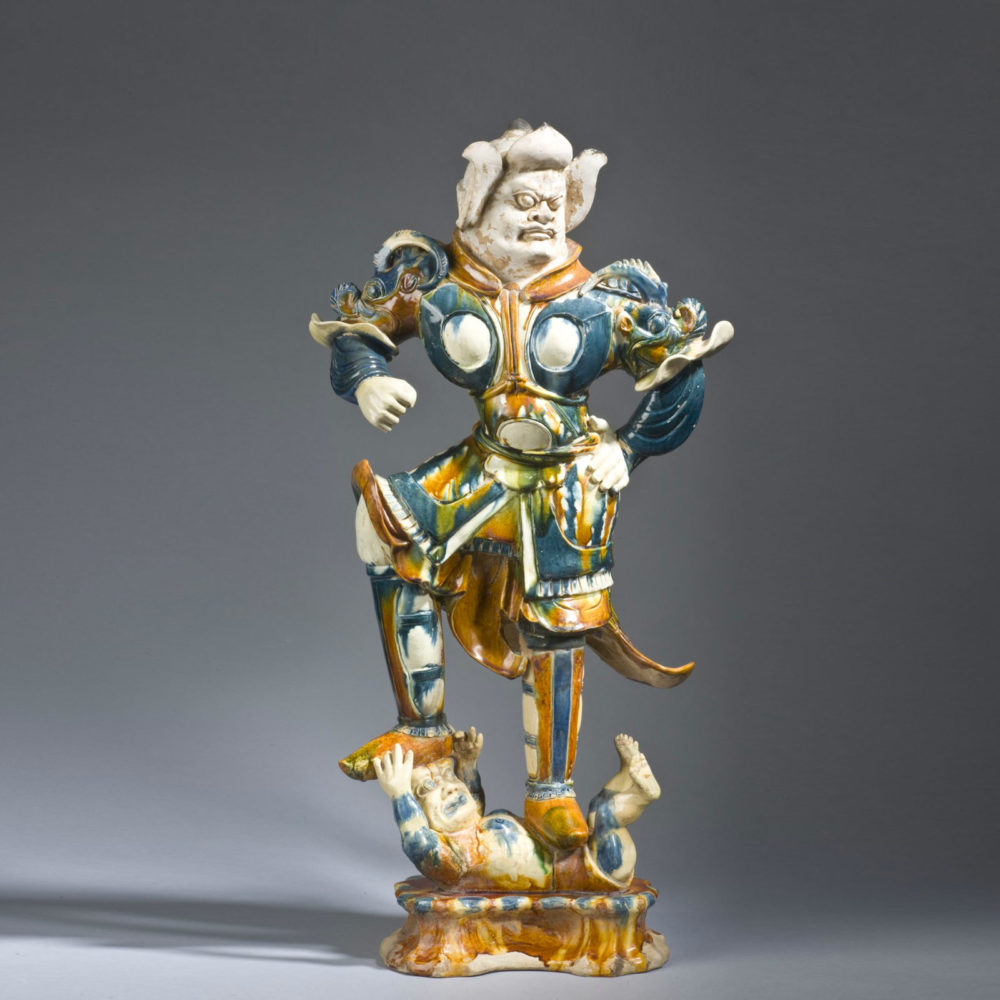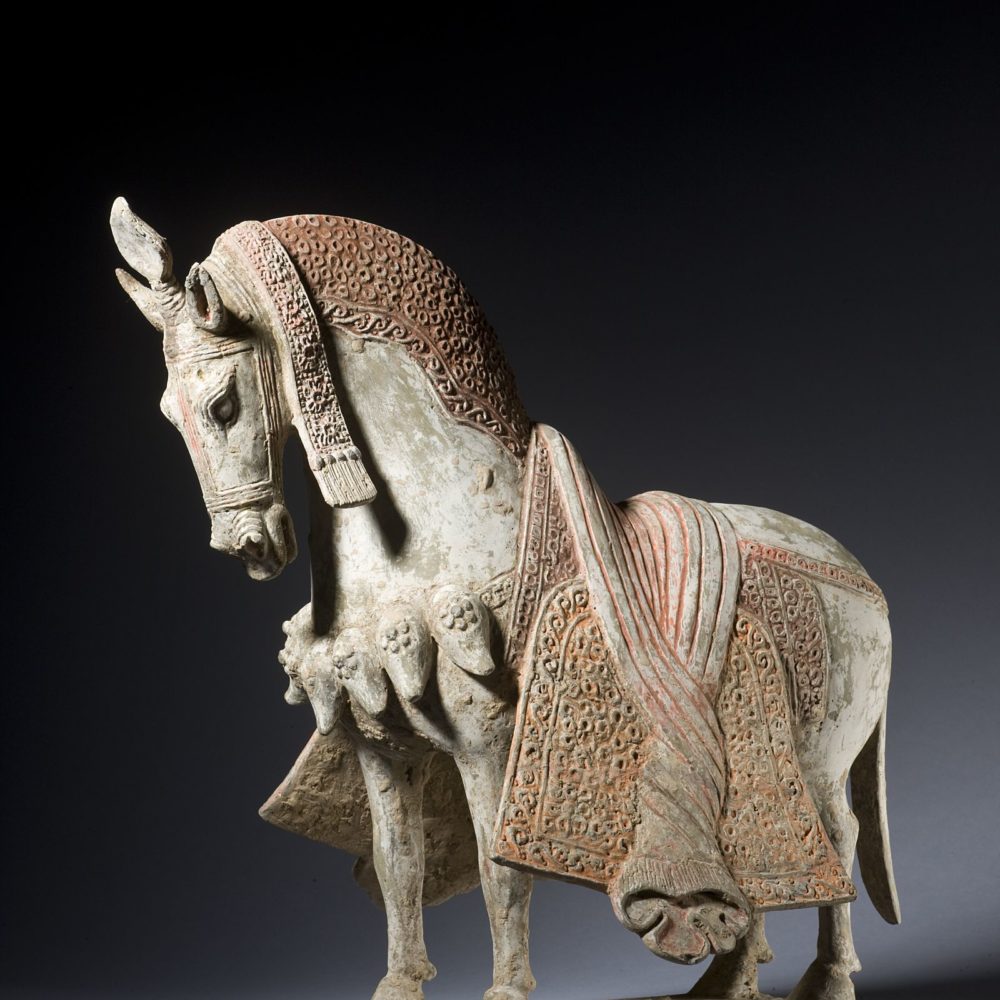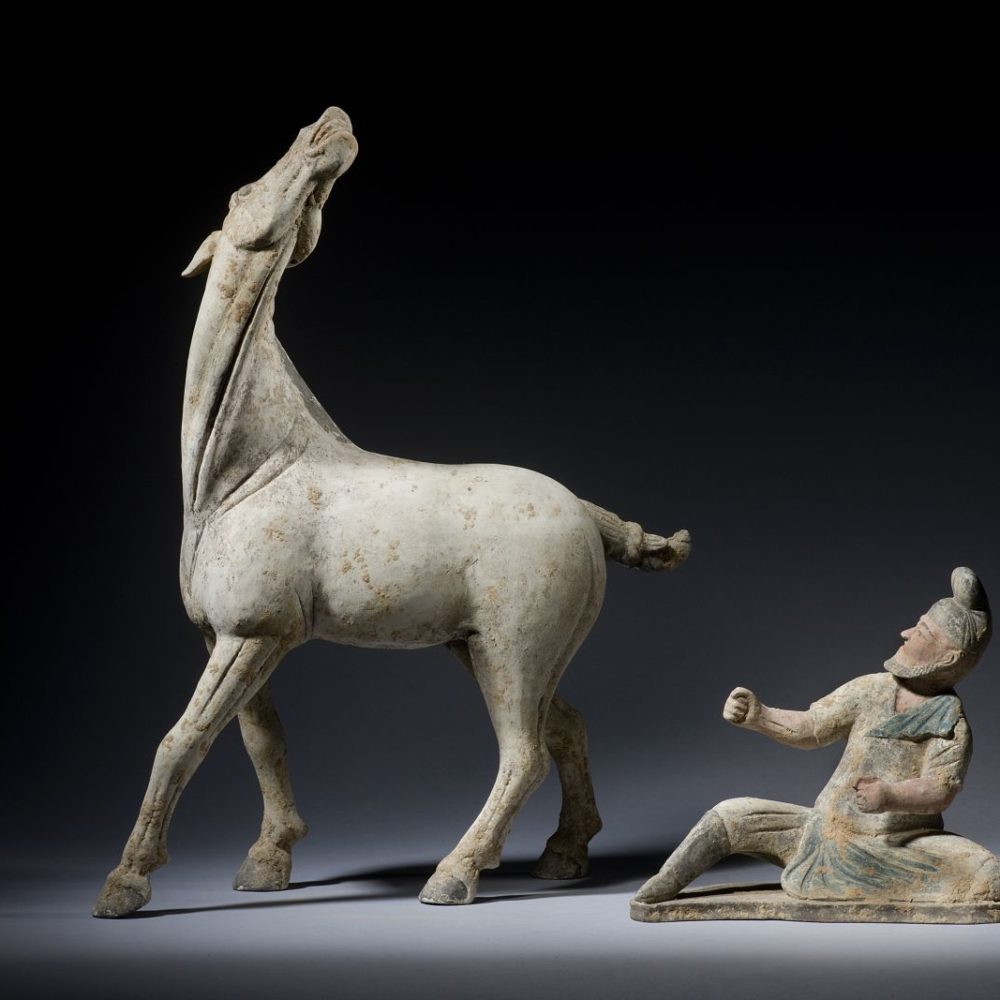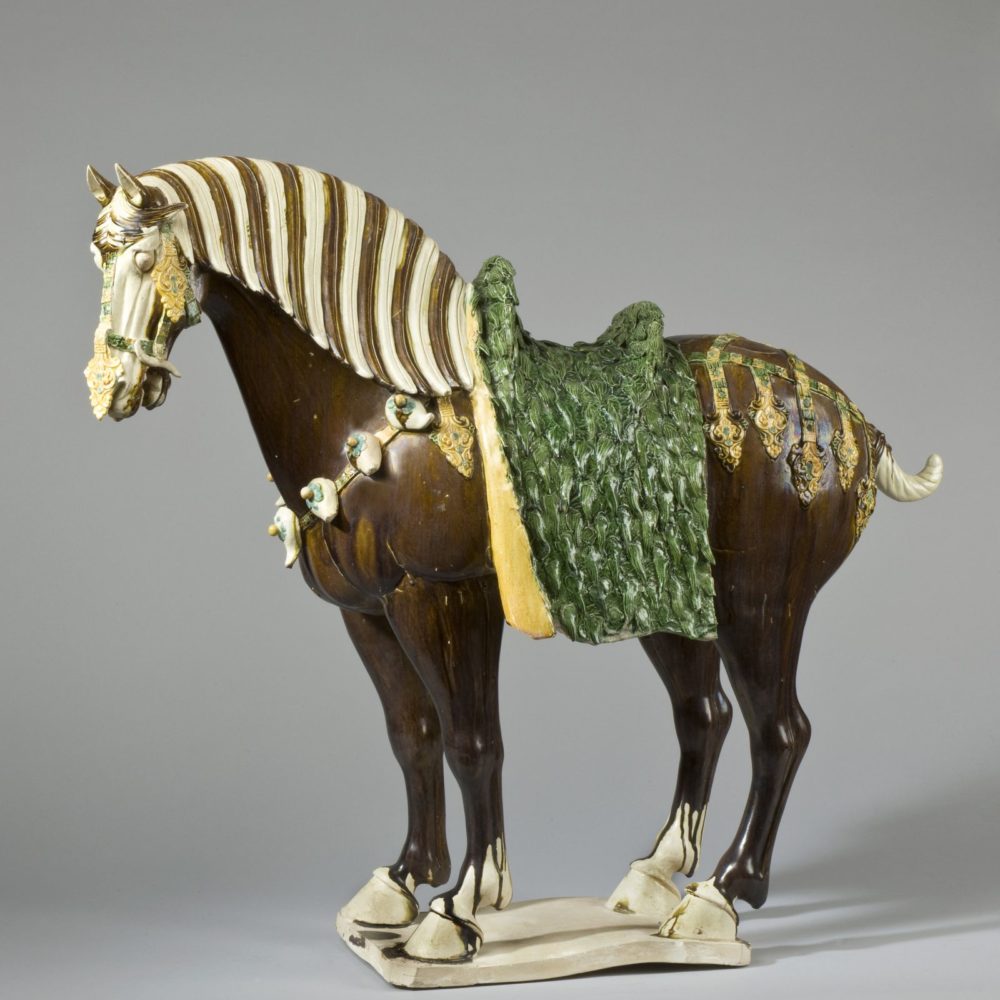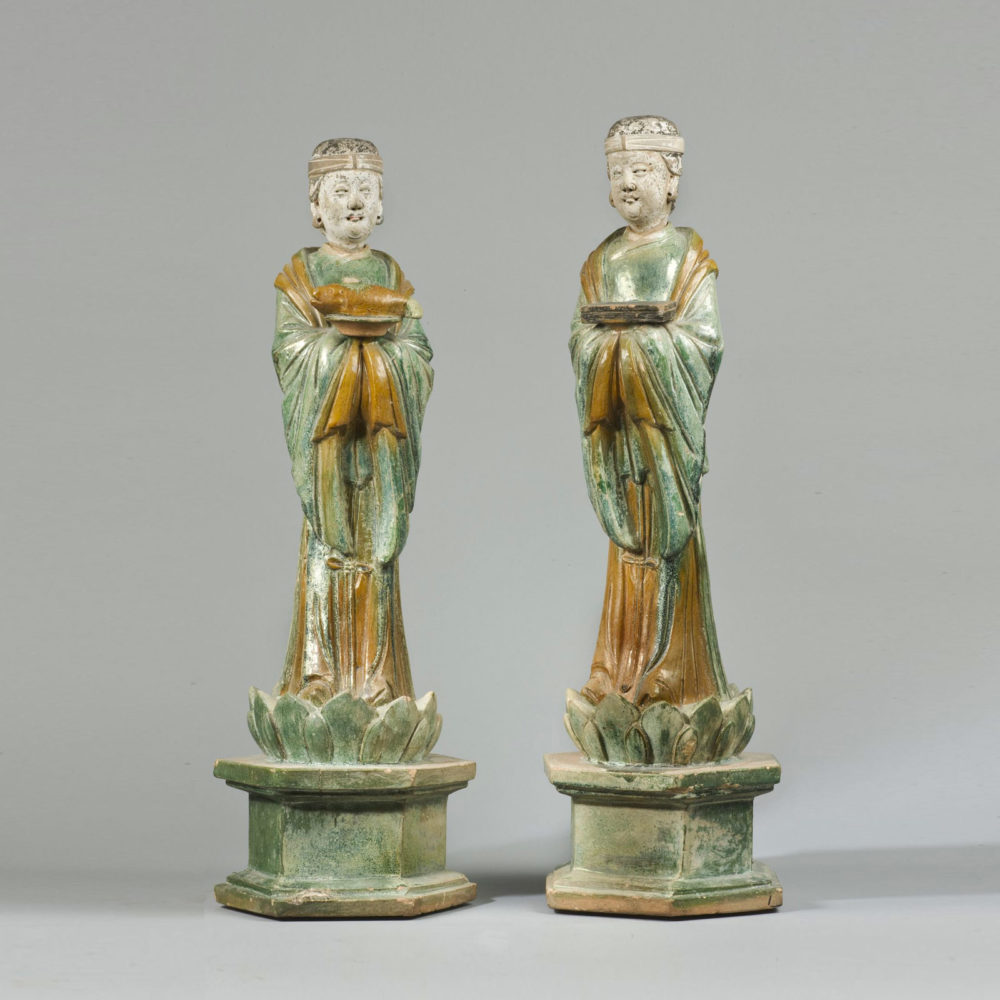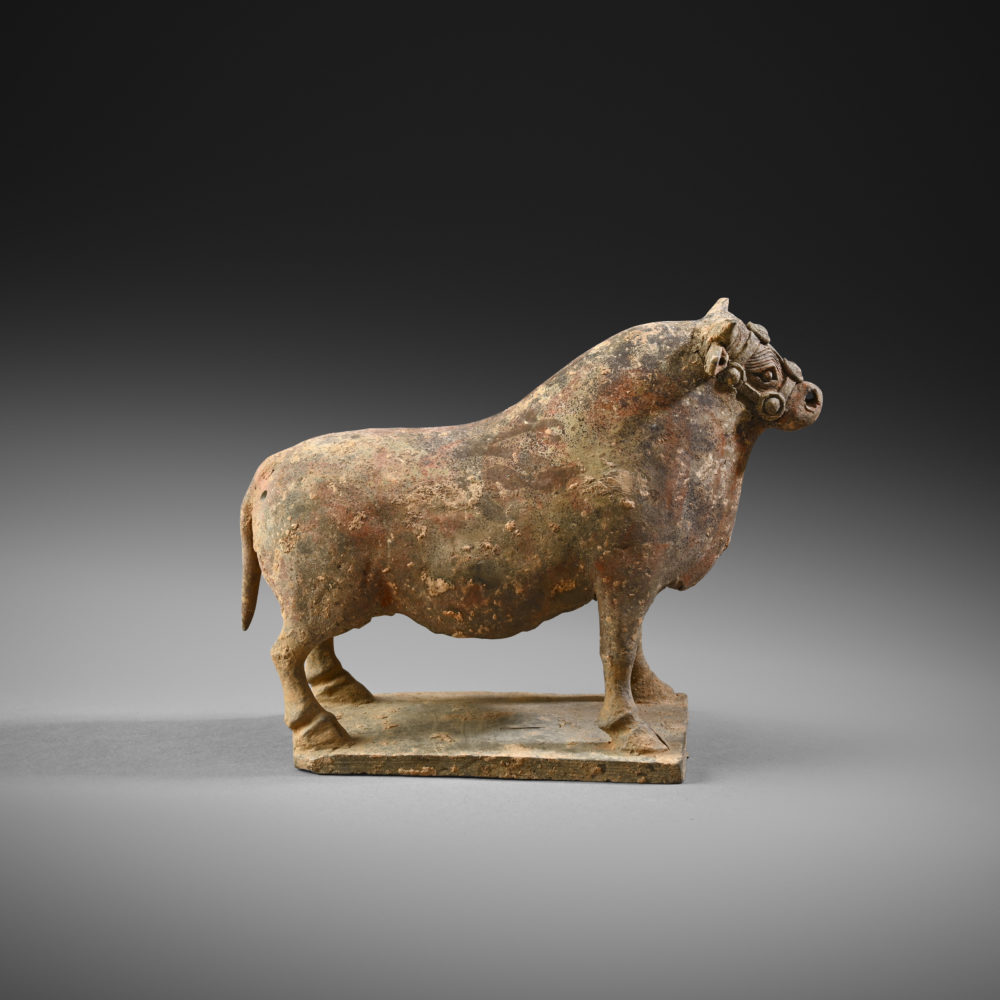A massive famille noir yenyen vase
墨地五彩鳳尾尊
Kangxi period, 1662-1722 AD, China
清康熙 1662-1722 中國
Height: 76.6 cm, 30.2 inches
高76.6釐米
The baluster body and flaring neck is decorated with an all over openwork design of a pheasant perched on ornamental rockwork amidst flowering peonies and a prunus and magnolia tree – the white magnolia flowers extending the length of the vase. The black enamel background strikingly sets off the overglaze blue, aubergine, yellow and shades of green that also form the palette of this composition. The base is drawn with a blue lingzhi mark within a double circle in underglaze blue.
The specific combination of peony, (‘fuguihua’), magnolia (‘yulan’) and begonia (‘haitang’) form the rebus: ‘yutang fugui’or ‘wealth and rank in the jade hall’; this was the name for the Hanlin Academy – an official bureau of scholars of the highest rank. The symbolism of this particular decoration, therefore, is a wish for both wealth and high rank.
Provenance
Laurance S. Rockerfeller. James Garland Collection – label 1111.
Similar Examples
‘Catalogue of the Leonard Gow Collection of Chinese Porcelain’ by R. L. Hobson – plate lxxiv illustrates a vase of the same size and shape, decorated with a similar openwork composition. This vase is further illustrated in the catalogue for ‘The International Exhibition of Chinese Art’, Royal Academy 1935, no. 1683.
Notes
According to Eva Strober (in ‘La Maladie de Porcelaine’, Edition Leipzig, 2001) iron oxide was added to a glaze that contained lead to create the intense black with its green gleam; this was a result of the oxidisation process during firing. The process was rediscovered in the latter part of the 17th century; it had previously been developed in Jingdezhen, but had then disappeared. During the reign of Kangxi, the famille noire glazes were achieved by applying an additional layer of green glaze under and over the iron black parts.
The famille noire glazes can be classified into four groups – the first being those original pieces made and decorated in the period of Kangxi – examples being found in many museums – but specifically in the 1721 inventoried collection of Augustus the Strong in Dresden. The second group comprises a continuation of the style well into the nineteenth century. A third group exists in original famille verte Kangxi pieces that were subsequently covered with black glazes – later in the nineteenth century – as a result of the high demand and, therefore, increased value at that time. For the same reasons, original blue and white Kangxi pieces – traditionally large vases – formed the last group. Their exterior glazes were skimmed back down to the biscuit – then redecorated in the famille noire style; their white interiors remained intact.
In trying to identify large examples of original famille noire vases – one factor, in particular, seems to be a common denominator with the smaller and well-documented pieces in the Dresden inventory. In the process of firing, almost all examples show areas of black glaze that has receded – leaving a trace of matt black against its bordering colour. This feature does not appear in nineteenth century copies (probably as a result of better control of the process at that time), or in examples that have been redecorated.


